

Welcome to the Official Tourist Website of Warsaw
Each city has a place that is its showcase and a must-see on any trip. In Warsaw, it’s the Old Town , entered on the UNESCO World Heritage List – it’s where the city’s heart has been beating for centuries. However, when you cross the Vistula River and look at the Old Town from a distance, you are struck by how unusual the panorama of the city is – skyscrapers rise above the red roofs of the Old Town. Historical buildings blend in harmoniously with modern architecture, and the city surprises us by revealing its second face… read more
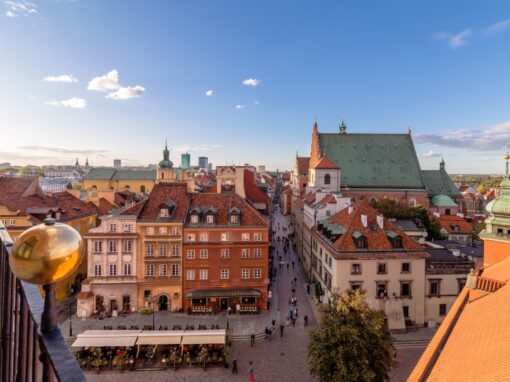
April 20, 2018

Łazienki Królewskie Museum
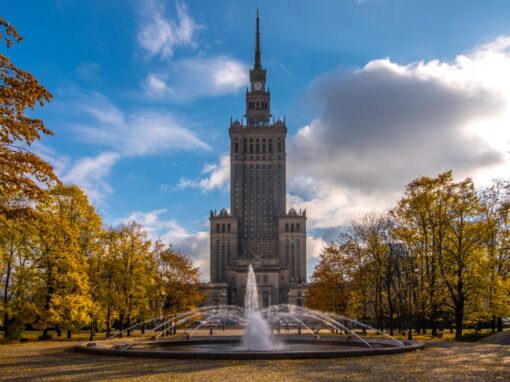
Palace of Culture and Science
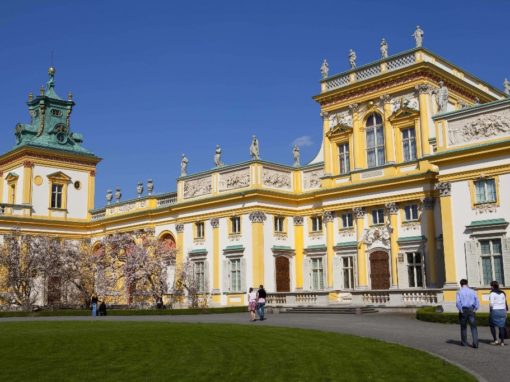
Museum of King Jan III’s Palace at Wilanów

Warsaw Rising Museum

National Museum

POLIN Museum of History of Polish Jews

Copernicus Science Centre

Chopin Museum

Vistula Boulevards
April 19, 2018

What? Where? When?
sat 13 apr 09:00 sat 16:00 Start of 12th season of Żoliborz Breakfast Market

Event Details
SATURDAYS ON ŻOLIBORZ 9am-4pm al. Wojska Polskiego/corner Śmiała str. SUNDAYS ON MOKOTÓW 10am-5pm Skwer AK Granat
(Saturday) 09:00 - 16:00
Targ Śniadaniowy Żoliborz
Aleja Wojska Polskiego 4
Calendar GoogleCal
wed 17 apr All Day sat 20 All mazurkas of the world - traditional music and dance festival

Events at various locations: Centrum Promocji Kultury Praga Południe, ul. Podskarbińska 2 Ethnographic Museum, ul. Kredytowa 1 Terminal Kultury Gocław, ul. Jana Nowaka-Jeziorańskiego 24 Forteca Kręgliccy, ul. Zakroczymska 12
april 17 (Wednesday) - 20 (Saturday)
Various locations
sat 20 apr 12:30 2024 Służewiec Horse Racetrack Season Opening

(Saturday) 12:30
Służewiec Racetrack
ul. Puławska 266
mon 29 apr 19:00 The Original Harlem Globetrotters World Tour 2024

(Monday) 19:00
Hala Torwar COS
ul. Łazienkowska 6a
wed 01 may 12:00 Special Chopin recitals in Żelazowa Wola

1, 2 and 3 May at 12.00 noon and 3pm. The entrance fee for the concert is included in the ticket to the Park in Żelazowa Wola. Tickets are available
(Wednesday) 12:00
Muzeum Fryderyka Chopina w Żelazowej Woli
Żelezowa Wola 15
sun 05 may 15:00 Sunday Chopin Recitals in Żelazowa Wola
Sunday Chopin Recitals in Żelazowa Wola are an opportunity to listen to the performances of the greatest Polish and international pianists, world-famous professors and the prizewinners of the International Chopin
Sunday Chopin Recitals in Żelazowa Wola are an opportunity to listen to the performances of the greatest Polish and international pianists, world-famous professors and the prizewinners of the International Chopin Competitions. 45-minute piano concerts take place in season from May to the end of September every Sunday at 12.00pm and 3.00pm.
Admission to the recitals is included in the ticket entitling to visit the Park in Żelazowa Wola. The concerts are in the open-air and the places for the public are not numbered.
(Sunday) 15:00
mon 06 may 20:00 Chris Botti

(Monday) 20:00
Teatr Wielki - Polish National Opera
Pl. Teatralny 1
fri 10 may 21:30 Dancing Queen - fountain shows - Multimedia Fountain Park

Warsaw’s fountains have been attracting hundreds of thousands of viewers for years, telling magical stories and urban legends. The spectacular combination of water, images, music and lights creates an
Warsaw’s fountains have been attracting hundreds of thousands of viewers for years, telling magical stories and urban legends. The spectacular combination of water, images, music and lights creates an extraordinary evening spectacle that cannot be missed. The shows have become a permanent part of the cultural landscape of Warsaw, becoming one of the most popular attractions for residents, as well as tourists from Poland and abroad.
This year’s show, titled ” Dancing Queen “, will take viewers back to 1976, when the famous band ABBA visited Warsaw. The Swedish group flew to Poland on the eve of the release of the album “Arrival” to record a concert for Studio 2, an extremely popular Polish television program. A new show in the Multimedia Fountain Park will remind you of this historic event. We hope that the show will delight viewers through spectacular laser projections and dancing fountains to the rhythm of hits that make subsequent generations of listeners dance.
May-July Fridays and Saturdays at 21.30 August Fridays and Saturdays at 21.00 September Fridays and Saturdays at 20.30 Free admission
(Friday) 21:30
Multimedia Fountain Park
skwer I Dywizji Pancernej
sat 11 may 18:45 2024 Orlen FIM Speedway Grand Prix of Poland

(Saturday) 18:45
PGE National Stadium
Al. Ks. J. Poniatowskiego 1
fri 07 jun All Day sat 08 Orange Warsaw Festival

june 7 (Friday) - 8 (Saturday)
Służewiec Horse Racetrack
wed 03 jul 20:00 PET SHOP BOYS

(Wednesday) 20:00
thu 04 jul (jul 4) 19:00 sun 07 (jul 7) 19:00 Warsaw Summer Jazz Days 2024

4 (Thursday) 19:00 - 7 (Sunday) 19:00
Klub Stodoła
ul. Batorego 10
sun 07 jul 16:00 Metallica

(Sunday) 16:00
PGE Narodowy
wed 10 jul 20:00 James Blunt

fri 26 jul All Day Warsaw Rocks '24 - Scorpions, Europe & others

All Day (Friday)
thu 01 aug All Day sat 03 Taylor Swift - The Eras Tour

august 1 (Thursday) - 3 (Saturday)
sat 24 aug 20:00 Andrea Bocelli
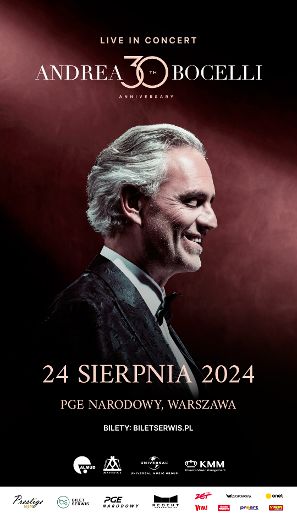
(Saturday) 20:00
fri 06 sep 20:00 DJ BoBo Warszawa- EVOLUT3ON TOUR 2024

(Friday) 20:00
sat 05 oct 18:00 Pat Metheny - Dream Box

Concert at 9pm – SOLD OUT additional concert at 6pm
Concert at 9pm – SOLD OUT additional concert at 6pm
(Saturday) 18:00
Klub Palladium
ul. Złota 7/9
mon 21 oct 19:00 MET Stars: Aleksandra Kurzak & Robert Alagna - Puccini in Love

National Philharmonic
tue 22 oct 20:00 Branford Marsalis & Friends

(Tuesday) 20:00
Teatr Muzyczny ROMA
Nowogrodzka 49
mon 25 nov 20:00 Jazz Icons: Jan Garbarek feat Trilok Gurtu

JAN GARBAREK saxophon RAINER BRÜNINGHAUS piano YURI DANIEL bass TRILOK
JAN GARBAREK saxophon RAINER BRÜNINGHAUS piano YURI DANIEL bass TRILOK GURTU percussion
More events…
Warsaw Quest
Are you a Mermaid or a Basilisk when you visit a new place? Take the legendary test and find out what kind of a tourist you are. Discover your places in Warsaw.

Plan your stay
Getting around, good to know, warsaw - official tourist website, © warsaw tourism office.
- Privacy policy
- Accessibility declaration
About Cookies
Privacy overview.
Everything you need to know about Warsaw
Getting to warsaw, warsaw public communication, useful numbers, most popular places, traveling through city, useful websites, sightseeing routes, boroughs of warsaw, if you are looking for…, booking guide, newest events, currency exchange, books and maps, car renting, free mini guides, plan a trip, feel invited to visit us on plac zamkowy 1/13.
Warsaw Tourist Information Centre
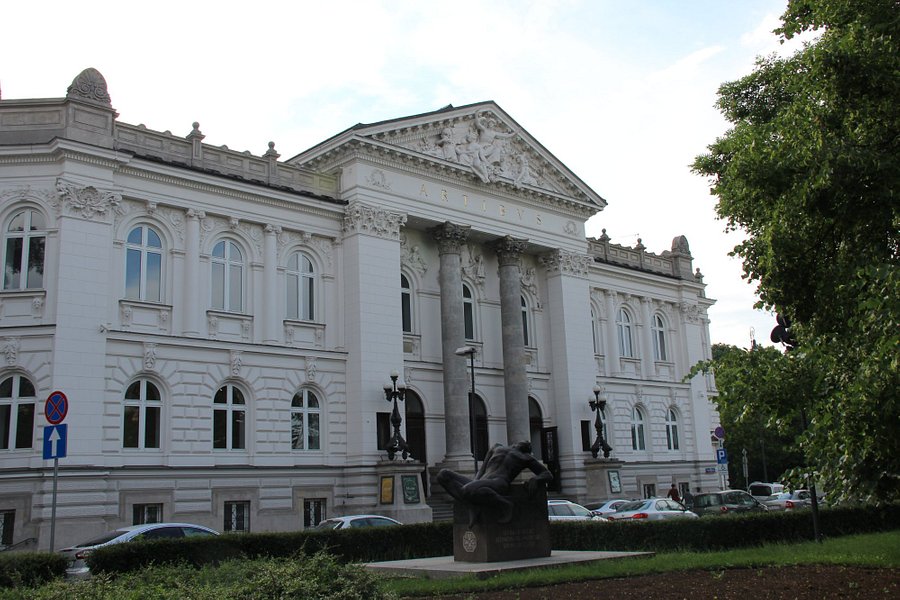
Top ways to experience Warsaw Tourist Information Centre and nearby attractions

Most Recent: Reviews ordered by most recent publish date in descending order.
Detailed Reviews: Reviews ordered by recency and descriptiveness of user-identified themes such as wait time, length of visit, general tips, and location information.

Also popular with travelers
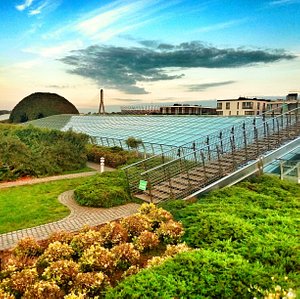
Warsaw Tourist Information Centre - All You Need to Know BEFORE You Go (2024)
- (0.01 mi) Cosy Castle Square Warsaw
- (0.01 mi) Apartment PLAC ZAMKOWY
- (0.01 mi) Swing for children - apartment by the Royal Castle
- (0.02 mi) Luxury Apartment Castle Square
- (0.02 mi) A unique space on the Castle Square with amazing view
- (0.01 mi) KROLEWSKI restaurant & pub
- (0.01 mi) La Dolce Vita
- (0.02 mi) Przy Zamku
- (0.02 mi) Polka Restauracja
- (0.03 mi) Karmnik

For tourist information in Warsaw please contact the following office: Warsaw Tourism Information (Warszawskie Centrum Informacji Turystycznej) Pl. Zamkowy 1/13 (Castle Square) Phone: (022) 9431 or 628 8768 Hours: May thru September: Monday thru Friday 8 a.m. until 8p.m. Saturdays 9 a.m. until 5 p.m. and Sundays 9 a.m. until 3 p.m. Octber thru April: Monday thru Friday 8 a.m. 6 p.m. Saturday thru Sunday 9 a.m. until 3 p.m. There are tourist information centers at the Okecie airport in the arrivals terminal, the Central Train Station (Dworzec Centralny), the Historical Museum (Muzeum Historii Warszawy) in the Old-Town Square.
Finding accommodations in Warsaw is not a hard thing to do. Since the fall of communism Poland has become a real transit point between the East and the West. As a result many new accommodations, of all kinds, sprang up. Whether hotel, youth hostel, motel, camping grounds, or a private apartment you should not have problems with finding a bed in Warsaw.
You have a lot of choices among the hotels in Warsaw. The hotels are undeniably comparable with those in the West, but so are the prices. To check out the list of hotels click here.
In Poland, as well as in Warsaw there are PTSM and PTTK hostels which have their doors open throughout the year. In the summer it is a good idea to use the student dorms which offer decent lodging and reasonable prices. To check out the list of youth hostels in Warsaw click here.
While in Warsaw you should be able to get around very well without a car. Actually, you are probably better off without a car and using the public transportation which is well developed. One thing you must remember is that you should never let yourself be caught on a tram, bus, or the subway without a ticket (This can cost you up to 70zl or about $17). (Here is an insider tip): If for some reason you do get caught, don't pay the fine right away, i.e. argue. Once the controller realizes that you are a tourist he might let you go or make you pay a smaller fine. The public transportation tickets (bilety) can be purchased in the newwstands (Kiosk) that are found on almost every major street. The tickets can also be purchased on the bus or the tram. If you want to buy a ticket that way, be prepared to speak some polish with the driver and to pay 20 extra groszy for those tickets. Remember that you might have to punch more than one ticket for some forms of transportation.
For most Europeans and majority of people coming from outside of Europe, the best way to reach Warsaw will be by air. Since the 1990's the number of airlines flying to Warsaw has increased signifanctly and today there are direct flights to Warsaw from almost all European countries and most continents. Warsaw is served by two airports, Chopin International Airport (also known as Okecie) and Modlin airport which is the hub cheap airlines and is located north of the city. For further information on airlines and air travel please consult the Airlines page.
The bus lines have numbers from 100, as well as letters. Busses with 100's numbers belong normal lines, those operate all days and stop at all the stops along the route. Vehicles with numbers greater than 300 operate during business hours. 400's and 500's are faster lines, these operate almost daily, move faster around, because they don't stop at every single stop along their route. The busses with letter are the fast lines. They have only few stops along their routes. The other category are the night busses marked with 600's. They operate in the night along main streets of Warsaw and all have one stop close to the Palace of Culture and Science, so the passenger can easily change the line. Upon entering the bus you should punch your ticket. The ticket punch is usually located next to a window. When it comes to taking the bus, you should realize that they are kind of slow. So, if you have a choice between a bus, a tram, or the subway make the bus your last pick.
There are about 35 tram lines in Warsaw. The trams (tramwaj) operate all days of the week. Although many of the trams are old and noisy, they are quite reliable, especially during traffic jams and rush hour. They move on their own tracks and unlike the buses are generally not affected by other road traffic. The tram stops are very often right next to bus stops, so switching between busses and trams is quite easy. When entering a tram one is expected to punch their ticket, which is usually located by a window just like in a bus.
Warsaw was late in getting its first subway line (Metro). The construction began in 1980's, but the first line, which operate from Kabaty in the southern part of Warsaw to the city hall (Plac Bankowy). The trains operate approximately every 5 minutes and move quickly and efficiently from one stop to the other. The subway is modern, kept clean, and is patrolled by the police (policja). The entrances to the stations are marked with a red "M" on a yellow background, which stands for subway. When entering the subway station one is expected to validate their ticket. Remember this because there are no ticket validators in the subway cars! You can be fined if you are caught without a ticket in the station or in the subway car. Incidentally, if you do want to ride without a ticket, you are most likely to get caught in the subway. the passengers in the subway are checked more frequently than in other forms of transportation.
The fares of various taxi companies are pretty much the same. 3.60 zloty is charged for the first kilometer plus 1.60 zloty, depending on time of the day, for each additional kilometer. Maximum prices have also been set for rides outside the city limits. The taxi driver can't charge more than 2.40 zloty at night (10 p.m.-6 a.m.) and on non-working days. The maximum fare per hours' waiting is 30.00 zloty. Some Radio-Taxi drivers ( phone: 919) also take credit cards. Overall, taking a taxi is not too expensive, but foreign travelers should pay attention so that unscrupulous taxi drivers do not take advantage of them. Also, it is recommend to take a taxi at night instead of having to wait for a bus, tram, or subway. It is simply safer that way, even though it costs you a little bit more.
As with the other things, eating out in Warsaw is not a problem. Whether you want to purchase a hamburger on a street or go to a really fancy restaurant Warsaw has got it. In the list of places to I am going to include only the more interesting places to go out and eat. Sorry fast-food people, but I am assuming that if you come to Warsaw you will want to settle for a bit more than McDonalds, Pizza Hut, or Burger King. To check out the list and descriptions of restaurants in Warsaw click here. If can't hold out, however, there is a McDonalds on Marszalkowska street right across from the Palace of Culture and Science. There is a Pizza Hut on the Castle Square in the Old-Town and behind the East Wall(pictured in the virtual tour).
Still lacking the wild nightlife of many other western European cities Warsaw is slowly catching up. To prove it here is a list and descriptions of some very cool clubs and bars in Warsaw. Everyone will surely find something in Warsaw's nightlife for him/herself.
Warsaw was wiped off the face of the earth during the Second World War. Painstaking reconstruction after the Second World War has brought back a small portion of Warsaw back to its prewar state. Today Warsaw's rebuilt historical areas, as well as many of its beautiful parks and museums are a must to be seen when visiting Warsaw. In this section one finds descriptions, addresses, and website links to the best historical attractions. To see the list of the most important museums and parks in Warsaw click here
If you are not sure whether you need a visa, please go to my embassies and visas page and find out. If you need to call your embassy in Warsaw remember to dial 48 for Poland and 22 for Warsaw. Please remember laws and regulations may change periodically. Especially if you are not from a Europe or North America please make sure to find out in order to avoid an unpleasant situation at the border.
I can't stress enough how important it is to have some idea of what to expect when going abroad. Learn a few phrases and research some local history by looking at a few books. My favortie tour book on Warsaw comes from the "Eyewitness Travel Series". These very popular books provide great insight on what, where, and when while visiting Warsaw. In addition, the book has many useful maps and pictures and comes in a very portable format. I will soon include several other books which you should consider reading or looking over prior to visiting Poland and Warsaw.
Ever wonder if it's too cold or hot to visit? Check out the current weather conditions for Warsaw, Poland. To check out average yearly temperatures and rainfall in Warsaw please go to the weather section of my page.
- 1 Districts
- 2.1.1 Before becoming the capital
- 2.1.2 As capital city of Poland
- 2.1.3 Under Russian rule
- 2.1.4 Between the World Wars
- 2.1.5 Second World War
- 2.1.6 Post-World War II – rebuilding the city
- 2.1.7 Contemporary Warsaw
- 2.2 Climate
- 2.3 Tourism
- 2.4.1 Warsaw and the Vistula
- 2.4.2 City centre
- 2.4.3 Street numbering
- 2.4.4 City Information System (MSI)
- 3.1.1.1 To and from Chopin Airport
- 3.1.2.1 To and from Modlin Airport
- 3.2 By train
- 3.4.1 Driving distances
- 3.4.2 Car hire
- 4.1.1 Metro
- 4.1.2 Szybka Kolej Miejska
- 4.1.3 Suburban trains
- 4.1.4 Buses
- 4.1.5 Night buses
- 4.1.6 Trams
- 4.1.7.1 Ticket zones
- 4.1.7.2 Ticket types and pricing
- 4.1.7.3 Where to buy?
- 4.1.7.4 Ticket validation and inspection
- 4.2.1 Parking
- 4.2.2 Taxis
- 4.3 By bike
- 6.1 Explore
- 6.2 Concerts and performances
- 6.3 Festivals
- 7.1 Universities
- 7.2 Polish language
- 10.1 Haute cuisine
- 10.2 Food fairs
- 10.3 Fast food
- 10.4 Milk bars
- 11.2 Concerts
- 11.3 Tea and coffee
- 13.1 Postal service
- 13.2.1 Wifi
- 13.2.2 Computers and Internet cafés
- 13.3 Telephones
- 14 Stay safe
- 15.1 Religious services
- 15.2 Laundry
- 15.3 Embassies
Warsaw ( Polish : Warszawa ) is Poland 's capital and largest city. Warsaw is a bustling metropolis and one of the European Union's fastest-developing capitals and the Union's ninth most populous urban centre. It has a mixture of new and old in its eclectic architectural mix, and is constantly changing. There is a large variety of museums, galleries and other tourist attractions, and there is always something happening throughout the year.
While sprawling, it is quite easy to navigate for tourists thanks to a good public transit system, and most important sights are quite close to each other. There is no shortage of accommodation options and a wide choice of restaurants and bars. Warsaw's nightlife is also on the rebound, and a reborn cafe culture has taken over the city.
Districts [ edit ]

Understand [ edit ]

A city of 1.8 million inhabitants (2021), it sits on the Vistula River (Polish: Wisła ) in the middle of the country.
Warsaw's history of rapid development after many wars that ravaged and destroyed the city has earned it a reputation as a "phoenix city", able to recreate itself from the ruins and regain its erstwhile glory every time. During the Second World War, it suffered a fate similar to Rotterdam and Dresden in that it was almost completely razed, although in the case of Warsaw it was a much more tragic story of successive destruction and defeat. Due to the great efforts of its surviving inhabitants and, indeed the entire nation, it was rebuilt from a field of rubble, with its historic core recreated, but much of its heritage was lost. Warsaw also had one of the largest Jewish populations in Europe, which for the most part perished during the war, making Warsaw an important place of Holocaust remembrance.
History [ edit ]
Before becoming the capital [ edit ].
There are records of human settlements and economic activity in the area of what is now Warsaw from the 9th century onwards, but it wasn't until the 13th century that Warsaw was founded by the Dukes of Mazovia . While developing as an administrative and economic centre, it played second fiddle to Płock within Mazovia until the 15th century, and was by no means a match for Poland's former capital, Kraków . It gained growing importance due to its economic might and strategically important central location in Poland, cemented when the Polish Sejm (parliament of nobles) relocated there permanently in the 16th century, and it became the site of royal elections.
As capital city of Poland [ edit ]
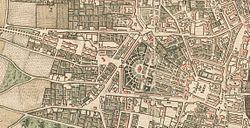
In 1596, it became the de facto capital of the country when King Sigismund III Vasa decided to permanently relocate to what is now the Royal Castle in Warsaw. The city started to develop rapidly beyond the what is now the Old and New Town, as noblemen started moving in and building mansions and palaces around town. In the 17th century, Praga, on the right-hand side of the river Vistula, was incorporated as a separate town (and did not become a part of Warsaw until the 19th century).
While ravaged by wars and natural disasters as many other European cities in this period, Warsaw continued to grow and modernize, with baroque residences, including Wilanów being built in the 17th century, and the Saxon kings initiating first large-scale urban planning projects in the early 1700s. The last king of independent Poland, Stanisław August Poniatowski, has further modernized the city following the ideals of Enlightenment in the second half of the 18th century.
At the end of 18th century, the weakened Republic of Poland was partitioned, through a period of forced diplomacy, military actions and uprisings, and Warsaw first fell into the Prussian rule, losing most of its importance. As the French emperor Napoleon marched eastwards with his army, he reestablished a small Polish state known as the Duchy of Warsaw, after its eponymous capital, but it was short-lived and was absorbed by the Russian empire in 1815, after Napoleon's defeat.
Under Russian rule [ edit ]
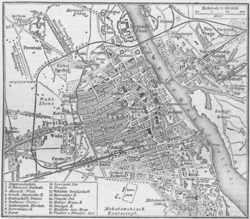
Warsaw remained a capital city under the Russian rule, as the Kingdom of Poland was reestablished, although with Russian tsars as hereditary kings and not much political independence. Warsaw was then the westernmost of major cities of the Russian empire and enjoyed economic growth as a commercial and industrial centre. While repeated uprisings and attempts to regain independence failed, Warsaw was still enriched with the creation of many cultural and educational institutions, many surviving to this day.
Warsaw's growth was curbed by a double line of military forts, protecting the strategically important Russian outpost, which by the second half of the 19th century made Warsaw one of the most dense and overpopulated cities of its time. To aid the failing hygiene, the authorities started constructing the pioneering Warsaw waterworks (led by William Lindley), and first district heating and warm water installations were laid.
At the turn of the century, Warsaw was electrified, gaining its first electric power plant, electric tramways, and a telephone network. At the start of the First World War, Warsaw was bustling, modern city of almost 1 million inhabitants, rife with opulent, belle-epoque architecture adapted to its density.
Between the World Wars [ edit ]
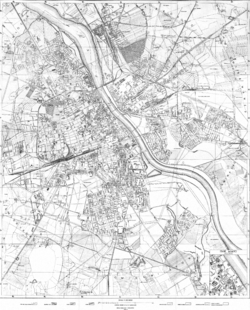
As Poland regained independence, Warsaw became the capital city of an independent country again. It suffered heavily during the war, and was soon threatened by the advancing Soviet forces, who were only repelled at the borders in the 1920 Battle of Warsaw. While political instability and struggles ensued, Poland enjoyed economic growth, optimism and proper attention to planning and urbanism in that period, and Warsaw benefited from that greatly, especially under its last interwar President, Stefan Starzyński.
Warsaw gained a state-of-the-art airport in Okęcie, a central railway through station connecting all major railway links that used to go through or terminate in the city, and an experimental TV broadcasting station. Modern and attractive planned residential districts were created outside of the historic forts line, most notably northwards in Żoliborz and Bielany. Warsaw continued to mix the new and old and many modern buildings filled in gaps between or replaced older buildings across the city, providing for the eclectic look Warsaw for which is known today.
The developments of that time, while later destroyed to a large extent in the Second World War, were instrumental to shaping Warsaw in many ways to how it was known today. Most were either rebuilt verbatim or in a similar form and place, while some survived.
Second World War [ edit ]

For most of the Second World War, Warsaw was occupied by Nazi Germany, but it did not surrender without major fights that affected the city – over 10% of the buildings were destroyed, with the infrastructure and many other buildings damaged. The German authorities treated Warsaw as expendable and had grand plans of totally rebuilding it as a planned city, with Germanic and Nazi symbolism replacing all of the Polish heritage. This did not come into fruition, but explained why little heed was paid to preserving the city, which was also periodically bombed by the Soviet forces after 1941.
It was an especially tragic period for the Jewish population of Warsaw, which had been a significant part of the general population over pretty much all of Warsaw's history. The Nazi forces confined Jews to the Warsaw Ghetto, sprawling over much of the Western Śródmieście and the district of Wola, and proceeded with their plans to annihilate them. In 1942 the Germans carried out the Grossaktion Warschau, when more than 250,000 Jewish people were taken to the death camp in Treblinka. The minority of Jews that stayed in the Ghetto eventually carried out the Warsaw Ghetto Uprising of 1943.
In the final period of the war, the dramatic and tragic Warsaw Uprising took place in 1944. (The Warsaw Ghetto Uprising of 1943 and the Warsaw Uprising of 1944 are entirely separate historic events.) It led to the destruction of most of the remaining buildings in Warsaw and further staggering loss of life, while not achieving its goal of liberating Warsaw from the German forces before the Soviets marched in. The Red Army then captured the crippled and all but razed city, cementing Poland's fate as a communist satellite state of the Soviet Union.
Post-World War II – rebuilding the city [ edit ]

By 1945, Warsaw was almost completely destroyed. It is estimated that over 80% of the city was destroyed, including almost the entire city centre and most historic and significant buildings. Of almost 1.4 million inhabitants, half died during the war (including the vast majority of the Jewish population), others were forcibly removed or escaped voluntarily, and only about 10% of the initial population was found inhabiting the ruins of the city.
To rebuild the city was thus an enormous task, but there was no hesitation in the resolve to achieve it. A special committee of architects and urban planners conducted the efforts. Their paradigms shaped the city as it is known today. On the one hand, there was meticulous effort to restore the oldest and most important historic buildings using extant documentation, but also old photos and even paintings. On the other, the communist ideology ran very much against the character of pre-war Warsaw, and practical reasons and urban planning opportunities dictated planning on a larger scale, envisaging an expansive, much lower-density city.
Most architects and historians held much the late 19th century architecture in low regard and thus many of the historic buildings and areas were rebuilt to resemble their shape in the 18th century or earlier, while ideological and practical reasons limited the restoration of ornamentation to less important buildings, and centralized urban planning provided for a much more harmonious look of the rebuilt historic sections of the city than could be witnessed from before the war. The restoration was mostly completed in the 1940s and early 1950s, but it took until the 1974 to rebuild the Royal Castle. After the Royal Castle, not many other buildings were restored – among notable exceptions are the buildings of the northern side of Plac Teatralny, only recreated in late 1990s.
Apart from historic restoration, in the 1950s Warsaw has also gained a fair share of socialist-realistic architecture, which was all about monumentalism and ideologically-themed decoration. Its most prominent example is the controversial Palace of Culture and Science, which grew to become one of Warsaw's symbols. The emphasis, however, was on housing the returning and rapidly growing population, and thus Warsaw also gained many nondescript, gray residential buildings. As population continued to grow and means were scarce in the centrally-planned socialist economy, the authorities turned to prefabricated concerte, creating sprawling Plattenbau estates around Warsaw.
Contemporary Warsaw [ edit ]
Even though much of Warsaw seems to imitate western cities, there are many peculiarities to be found here that you will not find in western capitals. Examples include the communist-era bar mleczny (lit. 'milk bar') that remain in operation (essentially cheap cafeterias for no-frills, working-class traditional Polish dining, which have remained incredibly popular in the face of westernization). Europe's largest outdoor marketplace, once around the old stadium, has disappeared as the new National Stadium was built for the Euro 2012 football championships.
Climate [ edit ]
Summers in Warsaw can vary from mild to exhaustingly hot. In most residences and some hotels, there is no air conditioning, which means the days and nights can be hot to the point of interrupting one's sleep. Travelers should bring light, summer clothes for the day, but bring an extra jacket for evenings, which can sometimes get a little chilly.
Winters, on the other hand, can get very cold (sometimes as low as -20 °C). Weather can often force the city to come to a standstill. When it snows, it may take up to an hour's time just to travel a few city blocks with traffic at a standstill and road crews seemingly caught off guard (despite warnings from meteorologists in several days in advance). Public transportation will also be utter chaos with buses and trams running late. On the first day of snow in 2010, it took upwards of three hours to travel from Wola to the northern tip of Mokotów ; a trip that usually takes no more than 30–45 minutes. Bring heavy, water-resistant shoes when traveling in Poland in late autumn to early spring.
Tourism [ edit ]
The Warsaw Tourist Office ( Stołeczne Biuro Turystyki ) is the official tourist information agency in Warsaw and can provide visitors with information regarding attractions, transport and events. They also have free maps and brochures for travelers. They operate four locations in Warsaw:
- in the Palace of Culture and Science, entrance from Emilii Plater Street
- at the Old Town Market Square ( Rynek Starego Miasta ) in the Old Town
- in the Praga Koneser Centre
The City of Warsaw has a lot of useful information on its website [dead link] . A popular source of practical tips, contacts, and current event information is the Warsaw Insider , available at every concierge, tourist information centre and larger newsagents. The Warsaw Voice is the city's most popular English-language weekly, and maintains a good calendar of events . Destination Warsaw has some useful information, but you need to be aware that it is run by Warsaw Destination Alliance , whose members are some of the tourist-related businesses in Warsaw, so the website obviously serves their promotional needs. Its main goal is the promotion of Warsaw as a destination abroad. An interesting alternative may be independent news portals such as Warsaw City .You will find a lot of information about Warsaw cinemas, theaters, museums, parks, concerts, etc.
Orientation [ edit ]
Warsaw and the vistula [ edit ].
As is the case with most major cities, Warsaw is situated on a river. The Vistula river (Polish: Wisła ) crosses the city on a north–south axis, dividing it into two parts. The western part is usually referred to as the left bank (Polish: lewy brzeg adj. lewobrzeżna Warszawa ) and the eastern part as the right bank (Polish: prawy brzeg adj. prawobrzeżna Warszawa ). Warsaw was founded on the left bank, while the right bank was a separate municipality, called Praga, which was incorporated into Warsaw in the 19th century. Therefore, many would refer to the right bank as "Praga", even if Praga proper is only two districts of the right bank.
Vistula in Warsaw is a broad, sprawling and partly unregulated river, which flooded the surrounding areas often in the past and continues to be somewhat of a threat today. Therefore, Warsaw is not really on the river in the sense many cities like London or Paris are, but rather near to the river, as Vienna is. The historic parts of left-bank Warsaw are a certain distance apart from the river, on an elevation called Warsaw escarpment. The part of left-bank Warsaw closer to the river (and less elevated with regard to it) called Powiśle used to be of secondary importance and stature. The right bank is less elevated and most of the development there is separated from the river by a wide belt of shrubbery and natural beaches, allowing for flooding in periods of high tide. It is therefore visually and physically removed from the left bank.

Ten bridges cross the Vistula within the boundaries of Warsaw. They are, starting from south:
- Anny Jagielonki
- Siekierkowski
- Łazienkowski
- Poniatowskiego
- Średnicowy (railway bridge only)
- Świętokrzyski
- Śląsko-Dąbrowski
- Grota-Roweckiego
- Skłodowskiej-Curie
City centre [ edit ]
Warsaw's left bank, or western part of the city is the dominant part, and the part deemed the city centre lies therein.
The right bank was the first one to become populated, during the 9th or 10th century. However, Warsaw's left bank or the western part of the city is the dominant one, and the present city's central district, called Śródmieście lies on the left bank. The Old Town is fully contained within the borders of the city center.
The central point of the city is at the intersection of Al. Jerozolimskie and ul. Marszałkowska, near the entrance to the Metro Centrum subway station. The main railway station, Warszawa Centralna, is also close by. It is good to know that the Palace of Culture is a landmark visible from almost any location in Warsaw. Should you ever get lost in the city, just walk toward the Palace of Culture and Science.
Street numbering [ edit ]
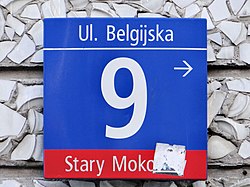
Traditionally, streets parallel with Vistula are numbered along the river current, i.e. the buildings with the lowest numbers are the southernmost. Streets roughly perpendicular to the Vistula are numbered from the river upwards, i.e. the lowest numbers are the closest to the river. One side of the street always has even numbers, while the other has odd ones (so if you are looking for number 8 and you see number 7, look at the opposite side of the street). There are several exceptions to those rules, e.g. the Puławska street in southern Warsaw has building numbers starting from the north, while some housing estates have sprawling areas with buildings sharing the same street name, with building numbers assigned in various ways.
City Information System (MSI) [ edit ]
The City Information System ( MSI – Miejski System Informacji ) can be of further aid to visitors to Warsaw. The MSI divides every district into several neighbourhoods (with informative purposes, no administrative or other role), with the neighbourhoods indicated in red on signage throughout the city. You can find the name of the MSI neighbourhood you are in on the red stripes of the building number and street signs. They are also indicated in red on directional signage, showing the way to get to a given neighbourhood. A rundown of the MSI neighbourhoods and helpful schematic maps can be found here [dead link] (the website is in Polish, but the schematics are of universal informative value, just click on the district for the rundown of the areas therein)
The districts as such are indicated on signposts with white background, while streets and other POIs with blue background, except for the Old Town and Royal Road areas, where the background is brown and a different font is used to indicate their historic character. The building number signs also often feature a small arrow pointing to the direction the building numbers in a street ascend. Street signs at intersection indicate the building numbers to be found within the block it is in (i.e. until the next intersection). On some signposts you can also find small signs showing the relation of the street they're on to the Vistula.
Other elements that can be of interest to visitors are pylons with neighbourhood maps and transparent boards on historic and significant buildings, which explain briefly their history and significance. Similar boards under street signs explain the origin of the name of the street - in case of streets named after people, they contain a short bio and usually a small portrait. An increasing number of those boards contain descriptions in both Polish and English, while others are in Polish only.

Get in [ edit ]

By plane [ edit ]

Warsaw has two airports: Chopin ( WAW IATA ) is the main one 8 km south, and Modlin ( WMI IATA ) 40 km north is only used by Ryanair.
Warsaw Chopin Airport [ edit ]
To and from chopin airport [ edit ].

By train: Lotnisko Chopina station is next to Arrivals. SKM train S2 runs downtown every 30 min, taking 25 min via Służewiec, Zachodnia (West) station, Śródmieście station (for Centralna bus and railway stations), Stadion, Wschodnia (East) station and Sulejówek. It runs to the city 06:00-23:30 and outward 05:00-23:30. The airport is in fare zone 1 so a single adult ride is 3.40 zł. If you need a bus at the other end, get a one-transfer ticket (valid 75 min) for 4.40 zł. Buy tickets from the machines near the platforms - you shouldn't need to validate them as they're stamped on issue.
For Line S3 change at Służewiec, the first stop city-bound, for trains south towards Radom . For all other lines change downtown.
By bus: Four daytime bus lines and one night bus ply to and from the airport. Single-fare tickets for the bus cost 4.40 zł (as of May 2023) from any kiosk. There is a ticket machine (which accepts coins, notes and credit cards) near the bus stop. You need to validate the ticket when you board the bus. There are also ticket machines in most of the buses, please note that they only accept cards. Drivers do not sell tickets anymore.
By taxi: The airport recommends Ele Taxi [dead link] +48 22 811 11 11; a reasonable fare from city centre might be 40 zł. There's a taxi kiosk within Arrivals. Other operators can only pick you up from outside Departures. Have nothing to do with the touts and sharks lurking outside Arrivals: see Warsaw#Taxis for more info.
Warsaw Modlin International Airport [ edit ]

To and from Modlin Airport [ edit ]
By train: Modlin town railway station is 2 km east of the airport, so you take the shuttle bus to Modlin then a regional train [dead link] to Warsaw. Get a combined airport ticket ( Bilet Lotniskowy ) for 19 zł, which also lets you use public transport in Warsaw's Zone 1 for 75 min. Total travel time is up to 90 min.
By bus: Contibus runs from the airport to the city centre, tickets can be bought at arrivals or on the bus with cash or card. They also run to the airport, tickets can be bought on board or online. If buying online you must separately download the ticket from their website once payment clears.
Flixbus also run via the airport to other cities such as Gdańsk.
By train [ edit ]

Intercity trains are run by PKP. These nominally require reservations, but outside busy times you can walk up and get a ticket for immediate travel.
From Berlin there are four trains a day, taking 6 hr via Frankfurt (Oder) , Rzepin, Swiebodzin, Zbaszynek, Poznań , Konin and Kutno. A single from Berlin in 2021 might be €45 - €65. From Poznań trains run every two hours, taking 3 hr 30 min.
From Kraków trains run non-stop every two hours, taking under 3 hr. From Ukraine via Lviv and Przemyśl you usually change at Kraków , but the nightly sleeper from Kyiv runs via Chelm and Lublin , taking 15 hr 30 min to Warsaw.
From Gdynia and Gdansk trains run non-stop hourly, taking 2 hr 40 min.
From Budapest one daytime and one overnight train runs via Visegrad, Bratislava , Ostrava and Katowice , taking 10-14 hr. From Katowice they run every hour or two, taking 2 hr 30 min.
From Vienna there's likewise one daytime and one overnight train via Breclav, Ostrava and Katowice, taking 8 hr to Warsaw.
From Prague trains run via Olomouc , Ostrava and Katowice , with the daytime train taking 8 hr 30 min to Warsaw and the overnight train 11 hr.
From Szczecin trains take 7 hours via Poznań (where you may have to change), Konin and Kutno, with five services per day.
From Vilnius and Kaunas there is one daily train to Białystok, Warsaw Centralna and Krakow. The domestic section from Białystok runs every two hours and takes 2 hr 20 min.
All trains from Belarus and connections to Russia are suspended in 2022.
Warsaw has three long-distance railway stations: 52.219 20.966 3 Warszawa Zachodnia (West) , 52.229 21.003 4 Warszawa Centralna and 52.252 21.051 5 Warszawa Wschodnia (East) .
Most trains cross the city, thus the train from Berlin stops at West and Central then terminates at East, while the train from Gdansk stops at East, Central and West then continues to Kraków. So it's similar to Brussels, where trains cross the city north-south, and the central station is served by all trains but is never the terminus.
Centralna Station is the closest to the main tourist sites and facilities. It's a slabby communist-era building of 1975, but it's functional and easy to navigate. The ticket offices are in the main hall, with platforms below (and the suburban station of Śródmieście deeper still in the bowels of the Earth). As trains are running through and not terminating, they stay only a few minutes here, so head for your platform as soon as it's shown on the departure board. Lots of cafes in the subways here. The bus platforms are north side (just local buses), with other stops in the adjacent streets, the trams run west side, and the Metro is a short walk.
The central railway corridor is being rebuilt from 2021 to 2023. Most trains are running normally but look out for curtailments and diversions.
Suburban trains: see "Get around" for local services including the airport trains, mostly running through Warszawa Śródmieście beneath Centralna.
By bus [ edit ]

Long-distance bus companies and stations in Poland are often called PKS, a legacy of the communist monopoly Przedsiębiorstwo Komunikacji Samochodowej (meaning "motor transport company"). After liberalisation in 1989 PKS was fractured into 176 local companies, which have variously failed, thrived or been taken over.
- Dworzec PKS Warszawa Zachodnia , Al. Jerozolimskie, Śródmieście ( south side of Zachodnia railway station ). Most inter-city and international buses arrive here. To get elsewhere in the city, use a local train, or centre-bound buses (south side of Al. Jerozolimskie) 127, 158 or 517. Night buses N35 and N85 run to Dworzec Centralny every 30 min from midnight. ( updated Nov 2021 )
- Dworzec Centralny is not the "central bus station" but the bus platforms north side of Centralna railway station in Śródmieście . These are just local buses, but include the night buses. Lots more bus stops in the adjacent streets, and trams stop west side on Al Jana Pawła II.
By car [ edit ]
What follows is a list of streets you will find yourself on when approaching the city from different directions:
The cities listed above are the ones displayed on signs in the city. The abbreviations in (parentheses) show you which neighboring countries can be reached with a road. If you are coming to the city, follow the blue-on-white Centrum signs. One exception is when you are coming from the north-east: follow the Praga sign unless you are driving a lorry.
Driving distances [ edit ]
In Poland – Białystok 190 km (120 mi); Gdańsk 390 km (240 mi); Kielce 180 km (110 mi); Kraków 290 km (180 mi); Olsztyn 210 km (130 mi); Poznań 310 km (190 mi); Siedlce 100 km (62 mi); Toruń 210 km (130 mi)
In other countries – Berlin ( D ) 570 km (350 mi); Budapest ( H ) 700 km (430 mi); Kaliningrad ( RU ) 350 km (220 mi)

Car hire [ edit ]
Most international car rental companies (including Alamo, Avis, Budget, Dollar, Europcar, Hertz, National, Sixt and Thrifty) are present in Warsaw, there are also many local companies. The usual pick-up and return places are the airport, the Warszawa Centralna railway station or major hotels in the city centre, most companies offer to arrange for pick-up and return at other locations at a fee. The regular caveats and requirements as in other European Union countries apply.
It is a legal requirement for you to carry your driving license, insurance documents and the vehicle registration documents at all times when driving the car. If the police stop you without any of them, they are likely to impose a fine.
Get around [ edit ]
Public transport [ edit ].
The public transport system in Warsaw is generally well-developed, with some 200 bus routes and 30 tram lines . The route descriptions on the tram stops are easy to follow (although bus stop notices are more complex), but it can last longer, however, to travel between destinations far from the city center. Warsaw has two underground metro lines, one going from south to north on the left bank, and the other from the east to the west. There are also some regional urban rail services (Polish: Szybka Kolej Miejska or SKM ), although they depart at most every 30 minutes only.
All of the abovementioned means of public transit share a single fare and ticketing system, operated by ZTM , a unit within the City of Warsaw responsible for the organization of all public transit. Polish website jakdojade.pl ( iOS , Android , Huawei apps), can help you plan the most convenient trip with the public transit between two points in the city. Google Maps can also do that, however they update bus schedules less often. In addition there is also Easyway journey planner.
Metro [ edit ]
Warsaw's metro system opened in 1995 and is one of the newest underground railway systems in Europe . Operated by Metro Warszawskie sp. z o.o. [dead link] it runs daily from early morning until midnight at 3-10 minute intervals. On Friday and Saturday, the Metro runs until 03:00. Trains and stations are clean and neat. The system consists of two lines; the M1 going from Młociny to Kabaty, and the M2 going from Bemowo to Bródno. The subway does not go to many tourist destinations; however, several stations will take you in a general vicinity of some attractions. The M2 is being extended westwards, new stations are to be opened in 2024.
Szybka Kolej Miejska [ edit ]

Szybka Kolej Miejska ( SKM ) runs on the railway tracks shared with other regional and long-distance trains. SKM trains can be distinguished by their white and ecru livery. SKM reaches many suburban locations outside of the boundaries of Warsaw, as well as the Chopin Airport. SKM stations are quite far from each other, so the trains are best used to traverse longer distances or travel to remote locations within the Warsaw metropolis.
As of 2023 there are four SKM lines and variants of them, most ( S1 and S2 ) stopping at the Warszawa Śródmieście station in the city centre or the Warszawa Centralna ( S3 ), which is connected to the former by an underground passageway. Except for S4 , all of the lines share the same stretch route through central Warsaw between Warszawa Zachodnia and Warszawa Wschodnia, connecting the Śródmieście district to Wola , Ochota and Praga , as well as stopping at Warszawa Stadion station, which serves Stadion Narodowy.
- Line S1 runs between Pruszków and Otwock , through Piastów , Ursus , Włochy , Wawer
- Line S2 runs between the Chopin Airport and Sulejówek Miłosna , through Rembertów and Wesoła .
- Line S3 runs between the Chopin Airport and Wieliszew along the same central rail stretch as long-distance trains, stopping at Warszawa Centralna instead of Warszawa Śródmieście and Warszawa Stadion and in Białołęka
- Line S4 runs between Wieliszew and Legionowo Piaski through Białołęka , Praga , Żoliborz and Wola to Warszawa Zachodnia. Then it runs through Ochota , Mokotów , and Ursynów to Piaseczno . It will take you to the Warsaw Zoo. This line does not stop at any station within the core city centre.
- Line S40 is a variant of S4 which starts in Warszawa Glowna. It runs through Warszawa Zachodnia, Ochota , Mokotów , and Ursynów to Piaseczno
Suburban trains [ edit ]
Warszawa Śródmieście is beneath Warsaw Centralna station: the only buildings at street level are lobbies for the escalators and lifts. It has trains:
Warszawa Gdańska (Metro Dworzec Gdański) is the station for Ciechanów , Działdowo, Mława and Nasielsk.
Warszawa Wileńska on ul. Targowa is the station for Wołomin, Małkinia, Tłuszcz and Zielonka.
Buses [ edit ]
Bus route numbers consist of three digits. Only the first digit has any meaning, the latter being merely ordinal. Here's the key to understanding Warsaw bus route numbers:
Other than that:
- Nxx are night routes.
- 9xx are special routes.
- E-x are express routes, which link the farthest districts to the city centre, call at very few stops and operate during peak hours only.
- Z-x are replacement routes for trams or metro disabled by maintenance, accident or some other special conditions
- C-xx are routes which operate only on All Saints' Day (1st November) and All Souls' Day (2nd November) to accommodate people visiting the cemeteries
Most bus lines operate from around 05:00 to 23:00 (but check the schedule for your particular connection), outside of those hours you need to resort to night buses (see below). The running intervals can be as few as 5 minutes (major routes during peak hours) to nearly 2 hours (certain suburban routes). Usually, you will wait 20 minutes at most.
There are a few routes that are of certain interest to tourists:
- 148 , 175 and 188 operate to and from the airport.
- 180 , this line drives from Chomiczówka, through Powązki Cemetery, POLIN Museum, the Old Town and Castle Square, by the Royal Route to Łazienki Complex and Wilanów . In many parts 180 is covered by 116.

Requesting a stop – certain bus stops are request-only (Polish: na żądanie ):
- If you want to get off, press the stop (red) button. In certain older buses, the button is above the door (and may not be red).
- If you want to get on a bus, wave your hand when you see the bus approaching to indicate your intention to the driver
The doors will not open automatically in air-conditioned buses and trams, and in all of them in the winter. To open it, locate the button labelled drzwi (blue) and press it.
Not all bus stops that have "Centrum" in their name are in the city center. For example, there is a bus route 525 that goes from Centrum (the actual city center) to Centrum Zdrowia Dziecka in Wawer . This is always clear from the route map.
Night buses [ edit ]
In the night when regular buses, trams, the metro and SKM do not run, a system of night bus lines will take you basically to every part of city. Most buses start and finish at the back of Central Railway Station (Dworzec Centralny). All buses operate at 30-minute intervals and depart from their central stop at Dw. Centralny 15 and 45 minutes after the hour, which facilitates changing. For a map of all the night bus lines visit ZTM . Lines operate from different stops within the Dworzec Centralny area – consult the schematic at the bottom of the map to make sure you are waiting at the right stop.
All night bus stops (except for Dw. Centralny and Centrum) are request stops . Signal well in advance to give the bus drivers time to slow down and pull up at the stop.
Trams [ edit ]
Trams in Warsaw have the obvious appeal to tourists in that it is easier to predict where they are going – they usually go straight ahead and only rarely turn, as there are not many tramway junctions in Warsaw. The trams will also have the speed advantage over buses in the city centre during rush hours.
Tram lines have single- and double-digit numbers. Trams with numbers above 40 operate in certain times only. A map of tram routes is available on ZTM [dead link] to assist you in planning your journey. The tram services can end as early as at 22:00, but most routes are served until midnight.
Between June and August, a special tourist line T is operated using historic cars from pl. Narutowicza .
Tickets [ edit ]
Public transportation tickets are issued and controlled by the single Public Transport Authority of Warsaw (Polish: Zarząd Transportu Miejskiego or ZTM ) and are valid for all city buses, trams, the metro and SKM. Some tickets are also valid in the suburban trains ( Koleje Mazowieckie' and WKD ).
Ticket zones [ edit ]
There are only two ticket zones in Warsaw – Zone 1, which covers the entirety of the City of Warsaw within its city limits ( including the Warsaw Chopin Airport ), and Zone 2, which covers the surrounding municipalities covered by ZTM's common ticketing scheme. It is safe to say that most tourists will never wander outside of Zone 1, unless they have a specific interest in one of the municipalities neighbouring Warsaw. Almost all ticket types exist in two variants – for Zone 1 and for Zones 1+2.
Ticket types and pricing [ edit ]
There are many different ticket options and quirks in Warsaw, but do not get overwhelmed – most of them will not be of interest to a casual tourist. The regular ticket tariff is actually quite simple, with a selection of tickets available. The prices below are for standard tickets in each type; most are also available as reduced price tickets (50%) or for both the 1st and 2nd tariff zones (the latter covering most of Warsaw's far suburbs), usually some 40% more expensive than 1st zone tickets. Poles usually call zone 1+2 tickets just zone 2 tickets.
- 20-minute (zone 1+2) – 3.40 zł
- 75-minute (zone 1) – 4.40 zł (alternatively this ticket entitles you to a single bus journey within Zone 1, it can be longer than 75 minutes)
- 90-minute (zone 1+2) – 7.00 zł (alternatively this ticket entitles you to a single bus journey within Zone 1 and 2, it can be longer than 90 minutes)
- The 90-minute is your safest bet if you are not sure how far your destination is, or whether it's within the city's limits. For short rides within the city centre a 20-minute ticket is usually enough.
- 24h ticket (zone 1; valid for 24 hours since its validation, not from the moment of sale) – 15 zł
- 24h ticket (zone 1+2) – 26 zł
- 72h ticket (zone 1) – 36 zł
- Weekend ticket (from 19:00 on Friday till 08:00 on Monday) – 24 zł
There are reduced-fare tickets for every ticket type, at 50% of the fare price. There is a long list of those entitled to travel on reduced-fare tickets available at the ZTM website , but for the most part it does not concern foreign tourists, except for children under the age of 7 and students under the age of 26 in possession of an International Student Identity Card (ISIC).
Senior citizens: people from 65 to 69 years can get a one-year-ticket for zone 1 and 2 for 50 zł. People from 70 years and older ride for free.
Visit the WTP website for an overview of available tickets and current ticket prices .
Where to buy? [ edit ]

Tickets can be purchased in automated ticket machines that are abundant across the city, especially at major transit hubs. They are either red and gray or blue and yellow, and rather conspicuous, even if they can be mistaken for an ATM or vice-versa. There are such machines at every metro station and at railway stations within the city centre, as well as at some of the more busy bus stops (e.g. at the Warsaw Chopin Airport). The ticket machines have a multi-lingual menu and are pretty easy to operate if you know what ticket type you want to buy. They accept credit and debit cards, as well as Polish zloty coins and bank notes. Some machines can be quite slow, so take your time and be patient for the machine to respond to your query.

ZTM has a network of service points where you can also purchase tickets. Those are the only places where you can have your personal travelcard made, which you would need if you intend to use a 30- or 90-day ticket.
Many kiosks, shops and post offices also have tickets on sale – it is indicated by a sticker saying Sprzedaż biletów ZTM . Shops and kiosks surrounding the major transit hubs often do not sell tickets if there are ticket machines nearby.
In almost all buses, trams and SKM trains, there are ticket machines which can sell you tickets for the ride on that particular vehicle. They are different from other ticket types in that they have a printed QR code, and that they do not require validation. In case of ticket machine failure, you can purchase your ticket from the train attendant on board the SKM train. In case there is no ticket machine in the vehicle, or it is inoperable, people are not allowed to ride that vehicle and in case of control a fine may be given. On-board ticket machines do not accept cash payments; it is possible to pay with a credit card or via the BLIK system.
A more convenient alternative to traditional tickets are digital tickets one can obtain through three officially-supported mobile phone apps: SkyCash, MoBilet or mPay.
You can find more information on purchasing tickets and ticket sale locations at the WTP's English-language website . A point of sale locator map] is also available there.
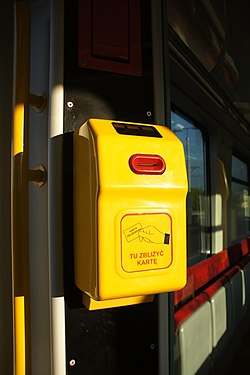
Ticket validation and inspection [ edit ]
Immediately validate your ticket after boarding the bus or tram (in a yellow validator). If one validator is out of order, look for another. A steady yellow light means that only the plastic card reader is working. If all the validators in a bus glow red – they may be locked, likely because an inspection is underway (and it is too late for you) or the driver forgot to turn them on (and you need to remind him or her). If you buy vehicle-and-fare ticket (with the QR code) in special ticket machine inside a bus or tram, you don't need to validate it.
When entering the metro, you will need to validate or present your ticket to open the gate. There are other ways to access the platform for people with special needs (wheelchairs, strollers, large luggage etc.), such as elevators and open gates, so if you are intending on using those, make sure you find a yellow ticket validator before you descend to the platform – they should be next to elevators. Exit gates open without a ticket. Possession of a valid ticket is compulsory for everybody at the metro platform regardless of whether they intend to ride a train or not, even if just using it as an underground passage or accompanying someone.
Timed tickets only need to be activated once, on your first journey. In case of carton tickets, the ticket validator will print the time limit until which the ticket is valid.
Tickets are not checked by the drivers. They may be randomly inspected in a station or in a bus/tram by uniformed inspectors with portable ticket/card readers, so it is up to you to have a valid (activated) ticket. The ticket inspectors in Warsaw are paid a commission on the number of fare-dodgers they catch, so they are rarely lenient and generally rather harsh to deal with. Being caught without a valid ticket might be one of the least pleasant experiences possible in Warsaw, so do your best to avoid it.
Parking [ edit ]
There is a paid-parking zone in the center of the city. This applies M-F 08:00—18:00 . Parking costs 3.00 zł for the first hour. Subsequent hours cost more although there is no hour limit. 0.60 zł is the minimum payment. You can pay with coins (10 groszy upwards and you will be given the exact time you have paid for after you have paid the minimum charge) or with the Warsaw City Card (not the tourist card). From 2015 the old parking machines have been systematically replaced by the new ones, which no longer accept payment with Warsaw City Card. They do however accept payment with major credit cards. The parking ticket should be left under the windscreen for inspection.
Parking fees can also be paid with mobile phone apps such as moBILET and SkyCash. In that case the driver should leave a special sticker with the name of the app under the windscreen, but a handwritten note is also accepted.
Taxis [ edit ]
The maximum base fare ( taryfa 1 ) is 3.00 zł/km and applies to journeys within the city (zone 1) on weekdays. The cheapest companies charge between 1.40 zł/km and 2.00 zł/km. Taxi drivers can charge 150% of the base fare ( taryfa 2 ) at night or on weekends and public holidays, and 200% of the base fare ( taryfa 3 ) for journeys into the suburbs. Watch out for blue rectangular signs saying taxi 2 strefa ( Taxi Zone 2 ), they can charge 300% of the base fare ( taryfa 4 ) at night and in the suburbs or on weekends and public holidays).
In addition, they can also charge you 8 zł initial fee ( closing the door ), 40 zł an hour for waiting for you if you are not in the first zone, and for getting back to the boundary of the first zone if you left in zone 2. There are no surcharges for additional passengers (normally up to 4 should fit), or for luggage.
They cannot charge you for anything else. There is no obligation or custom of tipping the drivers. The driver is required by law to give you a receipt. The full route must be written on the receipt. If the route was suboptimal, the fare can then be challenged. Call the City Guard (Polish: Straż Miejska ) at 986 or +48 (22 ) 986 from a mobile phone should there be any problems.
The aforementioned prices apply only to registered taxis. Others (non-taxi carriers) may charge you whatever they feel like, so they are best avoided.
Uber fares in Warsaw (as of May 2016) are 5 zł for closing the door, plus 0.20 zł per minute, plus 1.40 zł per kilometre.
A legal taxi will have its number displayed on the front door under the window (black digits on white), on a TAXI sign (not TAX1 or TAKI ), on a sticker with the base fare displayed on the passenger (rear) door window, and on the driver's ID card visible inside the cab. All taxi meter fares are in zł not in euro, even though some drivers will accept payment in euro. In this case he or she will convert the meter fare to euro and most likely round it up to the nearest €5 (to avoid payment with coins, which are harder to exchange). So, if the meter shows "40.0" and you are asked to pay €10 – that's ok, but if the drivers tries to charge you €40, saying that the meter fare is in euro – you are certainly being ripped off.
By bike [ edit ]

Warsaw is slowly changing into a bike-friendly city, the bike path network covers many parts of the city, but not every important street. You may find yourself forced to ride on the pavement or the street itself at some points, neither of which is really comfortable or advisable – or indeed, can be deemed illegal. There is an official bike path map [dead link] provided by the city, which may be helpful in planning your cycling routes.
Warsaw has started warming up to bicycles, however, and has a bike-sharing scheme similar to other cities around the world, called Veturilo . It operates only between March and November (closing for winter). You need a credit card or a bank transfer and a mobile phone to pre-register at the website, and to pay 10 zł initial fee, which is credited to your account. To rent a bike, you need to type in your code and the code of the bike you want to rent at the station's terminal, and there you go. Also you can use the app of the same name which makes the rental experience easier and quicker. The first 20 minutes of your rental are free, the first hour is 1 zł and then the fees increase every hour, because Veturilo bikes are meant for very short trips. Whenever you completed your trip, just lock your bike in the nearest station and check yourself out. There are maps of nearest points and the surroundings provided at every Veturilo station, the Veturilo mobile app also shows the nearest stations and the list of all available bikes on each station.
Since Veturilo is part of the Nextbike network, your existing Nextbike account or an account of a different Nextbike member system will work just fine with Venturilo, the only condition is that you need to accept the Venturilo terms of use.
See [ edit ]
This is the city of Frederic Chopin, Maria Skłodowska-Curie, Władysław Szpilman and Pola Negri. Warsaw Old Town is inscribed on the UNESCO World Heritage List . Take a walk and explore the streets and squares which have been painstakingly rebuilt after the last war. Check out the tumultuous history of the metropolis on both sides of the Vistula river. Explore special places and associated with the uprisings, especially one, which took place in the Ghetto and second, which happened in 1944. Book a guided city walk across the city and discover how it has changed since the fall of communism. Most of the major sightseeing attractions are concentrated in Śródmieście , with some more in surrounding districts, the exception park and palace in Wilanów . Check the attractions of the Vistula river banks. That said, every district has something to offer if you have the time and want to research more, so do refer to district articles for details.
That said, most tourists will probably:
- Visit the Old and New Town , the (recreated) oldest part of the city of Warsaw with the Royal Castle
- From there, stroll down Krakowskie Przedmieście and Nowy Świat streets (parts of the "Royal Route" )
- Travel along the Royal Route ( Trakt Królewski ) linking the Royal Castle to the Royal Palace in Wilanów ( Pałac Królewski w Wilanowie ), some 10 kilometers farther
- See Łazienki Park with the Chopin Monument (and attend one of the free open-air concerts in the summertime)
- Take the elevator to the top of Palace of Culture and Science for a panoramic view of the city, or at least take a photo of this modern-day symbol of Warsaw
- Visit the most important museums – Warsaw Uprising Museum , National Museum and the POLIN Museum of the History of Polish Jews
- Relax on the Vistula Boulevards ( Bulwary Wiślane ), spreading out over 6 km (3.7 mi) of the Vistula banks
Do [ edit ]
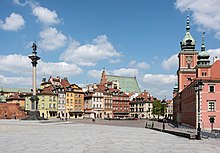
Explore [ edit ]
Go on a tour of Warsaw – the Old Town and surrounding districts are sufficiently compact to allow a number of excellent walking tours through its history-filled streets. You'll see amazing things you would otherwise miss. Details are usually available from the reception desks of hostels and hotels.
Concerts and performances [ edit ]
Warsaw is home to several professional musical and play companies. Being the capital city means the Polish National Opera [dead link] and the Warsaw Philharmonic (also, National Philharmonic) call Warsaw home. There are a number of other companies, including play companies and theaters that will likely be of interest to travellers.
Festivals [ edit ]
- The Cross-Culture Warsaw Festival ( Festiwal Skrzyżowanie Kultur ). World music festival. Concerts and music workshops, documentary screenings, exhibitions.
- [formerly dead link] Jewish Culture Festival – The Singer's Warsaw ( Festiwal Kultury Żydowskiej – Warszawa Singera ), [email protected] . August.
- Burn Selector Festival . Electronic & alternative music festival. September. 250 zł for two-day pass .
- Orange Warsaw Festival . Big pop music festival on the Horse Racetrack Służewiec. May. 300 – 1000 zł for two-day pass .
- Warsaw Summer Jazz Days . July.
- Warsaw Autumn ( Warszawska Jesień ). International festival of contemporary music. September.
- Grand Final of The Great Orchestra of Christmas Charity (Finał Wielkiej Orkiestry Świątecznej Pomocy). Annual charity event with thousands of fundraisers on the streets, free concerts in the city centre (usually Defilad Square or Bankowy Square), colourful TV studio with access from the street, mass street runs and number of local events and activities in the districts. Some attractions might be paid by donation to the collection box. Raised money are spent on high-quality medical equipment for the children hospitals in Poland. Usually on 2nd Sunday of January.
- Long Night of Museums ( Noc Muzeów ). A great opportunity to wander around with your date or friends and grab an ice cream cone from one of the many cafes that stay open late. Most museums and galleries will stay open past midnight. Noc Muzeów usually occurs around mid-May. Free .
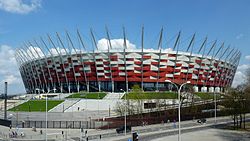
Sports [ edit ]
- Watch football (soccer). The leading club is Legia Warszawa , who play in Ekstraklasa, the top tier of Polish football. Their home ground is the Piłsudski Stadium (or "Polish Army Stadium"), capacity 31,800. It's at 3 Łazienkowska St., 2 km (1.2 mi) southeast of city centre.
- Warsaw Eagles play American football, at the American Football Field, Tobruk Ave, 5 km (3.1 mi) north of city centre.
Learn [ edit ]
Universities [ edit ].

Polish language [ edit ]
- Edu & More Polish Language School for Foreigners , ul. Marszałkowska 87/81 , ☏ +48 22 622 14 41 . 599 zł for a group course. It's also an e-learning platform for learning Polish online.
Work [ edit ]
Home to many international companies, Warsaw has an excellent job market for potential expats. Of course there are several immigration hurdles, but landing a job should not be overly difficult if you have the right skill sets.
If you're a backpacker who is not an EU citizen and looking for short-term employment this may be somewhat more difficult, as you are legally required to have a work permit. You could find short-term work in the hospitality industry, or as a tutor or an ESL teacher.
If you'd like to work in Warsaw, or Poland for that matter, but don't want to go through the hassle of finding a job opportunity, there are some employment recruiting agencies you can use in your search for a job. Just a few are:
- Adecco Poland , Al. Jerozolimskie 123A , ☏ +48 22 529 76 40 .
- Randstad , Al. Jerozolimskie 56c , ☏ +48 22 462 25 00 .
There is also the possibility to work in startups. Warsaw is the first place for startups in Poland, and the opportunities for foreigners are growing. For some, you do not need to speak the Polish language to start working there. With this website , you can apply directly to recruiting companies, without going through one extra intermediary.
Buy [ edit ]
ATMs (Polish: bankomat ) are plentiful around Warsaw. Visa, MasterCard, Visa Electron, and Maestro are widely accepted at most establishments. AmEx and Diners' Club are not as commonly accepted.
Indoor shopping malls (Polish: centrum handlowe pl. centra ~ , often abbreviated CH ) are also plentiful in Warsaw. Usually open 08:00—22:00, most malls will have a food court, restaurants, cinema, and some may have a sports hall with billiards tables or a bowling alley.
Auchan and Carrefour are the largest supermarkets in Europe, and they are also present in Poland, offering just about everything, including groceries, at low prices. The biggest supermarket chain is Biedronka. Lidl can be found too and offers great quality at unbeatable prices. In 2019 a new law was passed that does not allow most of the shops to open on Sundays. If you find yourself in need of shopping on Sunday, you have to count on some smaller shops where the owners work themselves.
Eat [ edit ]
Warsaw is not globally renowned for its culinary scene, but it lacks nothing compared to other European capitals with regard to it. There is a wide choice of eateries from the most basic and cheapest to very sophisticated, and many different types of food are available throughout the city. Finding a unique dining experience is feasible daily.
For those on a budget, there are many kebab shops sprinkled around Warsaw, especially in Śródmieście , which offer decent food and portions for the fair price of 7-13 zł a kebab. Other cheap alternatives are milk bars, which are discussed later in the section, and Vietnamese restaurants.
Haute cuisine [ edit ]
If you are looking for a premium dining experience, your best chances are in Śródmieście, but away from the Royal Route. In Praga, head for Saska Kępa, and you will also find a fair share of upscale restaurants in Wilanów. New and innovative places crop up in the most unexpected locations, so do acquaint yourself with the district guides for the latest tips.
Warsaw is home to both Polish restaurants that hold Michelin stars:
- Senses , ul. Bielańska 12 , ☏ +48 (22) 331 96 97 , [email protected] . A "private dining" restaurant, author's cuisine of chef Andrea Camastra. Reservation required. From 170 zł . ( updated Apr 2016 )
Food fairs [ edit ]
The new trend in Warsaw are food fairs, where fresh foodstuffs can be bought directly from producers, both for further processing and preparation at home and as ready dishes for consumption on site. Usually, some space for communal meals is provided. This can be a very nice option for breakfast or lunch. Some of the options are:
- Targ Śniadaniowy ( Breakfast fair ), al. Wojska Polskiego 1; Skwer Grupy AK Granat and other places . Sa 09:00—16:00 . Organised every weekend in various parts of town, usually ( updated May 2016 )
Fast food [ edit ]
Tourists will be happy to know there's no shortage of fast food in Warsaw. The city is rife with McDonald's and Subway outlets, there are also many KFCs and Pizza Huts, and a growing number of Burger King restaurants (the latter mostly in shopping centres). For a quick bite, chain cafés that are around every corner in the city centre, the shopping centres and many office buildings will offer you pre-made sandwiches and salads. Some more sophisticated cafés will make salads, ciabattas and sandwiches on site.
There is no particular Polish kind of fast food, as the traditional Polish cuisine does not really lend itself well to quick preparation or quick eating. Therefore, apart from the above international chain places, that niche in Warsaw is filled with kebab places and cheap pizzerias, similar to ones that you would find in most other European cities. Pizzerias are often chain places as well, and many do telephone deliveries, takeaways as well as offer tables to eat on the premises. Kebabs can often only do takeaway, and are often open all night long, much to the delight of taxi drivers and partygoers.
Milk bars [ edit ]
Remnant of the communist era, milk bars (Polish: bar mleczny , bary mleczne ) were created in the 1960s to serve cheap meals based on milk products. After the fall of communism, most of them closed down but some survived and still bear the climate from the old days. Almost everything inside looks, feels and smells like in the 1980s. Milk bars attract students and senior citizens, because of the low prices (soup and the main course together may cost as little as 10 zł). The food served by milk bars can actually be quite palatable. Even if you can afford more expensive meals, milk bars are interesting because they offer somewhat a view of life before democratization in Poland. Nowadays they became even that popular, that new chains and milk bars are recreated.
Drink [ edit ]
Old Town and areas like pl. Trzech Krzyży, ul. Nowy Świat, ul. Chmielna, ul. Krakowskie Przedmieście in Śródmieście are saturated with cafés. Coffee typically costs about 10-15 zł. Beer can cost 5-15 zł for half a liter (the supermarket price being 2.50-3 zł). Drink prices in clubs can go up to 50 zł. Drinking alcoholic beverages in public places is prohibited, but there are several places chosen by the local government where it can be possible.
Clubs [ edit ]
Clubs are plentiful in Warsaw and are a very popular way to spend nearly every night out.
The most popular nice and chic clubs are on ul. Mazowiecka in Śródmieście . You will be denied entrance if you wear sport shoes, no matter how expensive they are. Inconspicuous black shoes will normally do the trick.
Student clubs are popular and usually moderately priced, but can be hit or miss. Normally, the centrally located Hybrydy is a good option for night out. Other student clubs, like Stodoła or Remont in Śródmieście , and Park in Mokotów , are less predictable and quality isn't necessarily a concern for these clubs' patrons. If the point is to get drunk, then these are the place to go for a cheap drink.
Beware of certain bouncers (for example in Park), they are not the talkative kind if they suspect you of something.
In addition, there are clubs in Wola and Mokotów as well as several popular and down-to-earth clubs in the Praga districts.
Concerts [ edit ]
Warsaw's music scene can sometimes be disappointing, but it's a matter of knowing where to look because Warsaw has an abundance of musical delights, they just need to be ferreted out. Headline acts perform at the Bemowo airport in the Bemowo district and at the Stadion Narodowy (National Stadium) in the Praga Południe district of Warsaw. Smaller acts are hosted at clubs and concert halls around the city, but primarily in the center of Warsaw .
Tea and coffee [ edit ]
Throw stereotypes out the door. For Poles, one of the most important staples to quench their thirst is not wódka or beer, but rather tea and coffee. As such, you're likely come across dozens and dozens of cafés. Chain-wise, Coffee Heaven and W Biegu Cafe are the big players. Starbucks is also in Warsaw. The real treat of Warsaw, however, are small cafés that are littered about Warsaw. For the most part, a good cup of tea or coffee can be had for 5-10 zł a cup. A small tea kettle is between 20-30 zł.
Sleep [ edit ]

There are plenty of accommodation options in Warsaw at all budget levels. The most accommodation options are in Śródmieście , Wola , and Mokotów . There are also many business travel hotels in Włochy , near the airport.
Warsaw has an oversupply of high-standard hotel rooms, as many luxury hotels were built in Warsaw after 1989. Almost every global upscale chain has at least one property, a few hundred rooms each. Therefore, you can easily snatch room at a modern four- or five-star hotel in the €50-70 range. Warsaw still sees more business than leisure travel, so your best bet to get a great rate are weekend stays. Look for offers and special rates in booking sites and hotel web pages.
If you are on a budget, do not assume that hostels are your only option. Booking in advance at 3/4 star hotels can yield prices only slightly higher than backpacker hostels, for far greater comfort. Do your research in any case before booking to make sure you do not miss out on a great offer.
Breakfast is not included in the room price in most hotels in Poland. Expect steep charges for breakfast, especially if you book a premium hotel at a low price. If you are staying in the city centre, you might find many other breakfast options around your hotel though.
There are campgrounds in Włochy , Wawer , Wola , Ochota and Mokotów .
Connect [ edit ]
Postal service [ edit ], internet [ edit ], wifi [ edit ].
Free wi-fi is widespread in Warsaw. Municipal hot-spots (freewifi.waw.pl) are free of charge and available in over 150 localities throughout the city. Those include the Old Town, most of public parks, major city squares, the vicinity of most public buildings and museums. They are all marked by blue or purple "HOT SPOT UM-Warszawa" plaques hanging on street lamps. It is also available in over 300 city buses and some tramways (marked with a white and blue wi-fi icon at the doors).
Most restaurants and cafes also offer access to free wi-fi. The networks are usually either open, or require a password (usually available at the bar) or accepting the regulations (usually in Polish).
Computers and Internet cafés [ edit ]
Internet cafés (Polish: kawiarenka internetowa ) are rare in Warsaw.
- Tourist Information Center ( Palace of Culture and Science Building, just opposite the Central Train Station ). You can use the computers with Internet for 30 minutes for free.
- Arena , Booth 2001D, Centrum metro station building ( 500m north from Central Train Station at ul. Marszałkowska, across hotel Novotel ), ☏ +48 22 620 80 32 . 07:00-00:00 . Over 20 machines. 5 zł/hour, pay as you go .
- Cafe Net , Booth 2010C, Centrum metro station building ( 500 m north from Central Train Station at ul. Marszałkowska, across hotel Novotel ). 07:00-00:00 . Over 20 machines. 6 zł/hour, prepay .
- Verso , Freta 17 ( Stare Miasto – Old Town ). Photo and printing shop in which there are 3 computers for public Internet access. 5 zł/hour; 1 zł/5 minutes .
Telephones [ edit ]
The area code for Warsaw is 22, and it must be dialed even when making local calls (however, it will almost always be already included in the number). Don't use "0" at the beginning of the number; otherwise, it will be invalid. When calling internationally to Poland, dial the country code, +48 (or 0048) , followed by the rest of the number.
Pay phones are very rare, and it is therefore best to rely on other means of communication. Pay phones are only operable using calling cards that can be bought at post offices.
Pre-paid SIM cards with Polish phone numbers cost as little as 5 zł and can be purchased from just about any major carrier. Many kiosks sell them.
Stay safe [ edit ]
Warsaw is a safe city overall. The city center has a strong police presence and is generally a very safe area. The Praga districts used to be dangerous, but this is generally more hype than reality. Of course, it would be wise to exercise a little extra caution if you're in an area you do not know well. The bus and rail stations can be a magnet for homeless and drunkards, who, for the most part, will leave you alone.
Some areas south of the Palace of Culture and Science and the train station have a rather seedy feel to them, especially at night. Same goes for much of the neighborhoods immediately surrounding Warsaw-Chopin airport.
Though nowhere nearly as prevalent as in other major cities, pickpockets can sometimes be a problem and you should be careful to hold onto your belongings when in a large crowd or on buses (Number 175, which runs from the airport to city center, is reportedly infamous for pickpockets). At bars and clubs, a good rule of thumb is the cheaper the door entry and the laxer the bouncers are about letting people in, the more likely you're going to want to keep extra care of your wallet, passport, cell phone, and camera.
Violent behavior is extremely rare and if it occurs it is most likely alcohol-related. While pubs and clubs are generally very safe, nearby streets may be scenes of brawls, especially late at night. Try to avoid confrontations. Women and girls are generally less likely to be confronted or harassed since the Polish code of conduct strictly prohibits any type of violence (physical or verbal) against women.
Visitors not knowing Polish may also be the target of "bar girls," especially in Underground off of ul. Mazowiecka on days where there isn't a cover charge. Be cautious if you encounter a girl speaking English who will offer you a drink or a cigarette. She will then ask you to walk her to her car parked outside of the club and then explain how her friend still inside of the club has her car keys. Then she will ask if you would like to share a cab back to her place for 70 zł and then go back to the club. Doing so puts yourself in danger because it isn't known where she lives and you could be setting yourself up for possible harm or other scams.
Just like in any other major European city, football hooligans can be a problem before or after large football events. Naturally, it's best to avoid them, because they might be violent. At the same time, all major sport events are monitored and controlled by special police units, so unless you find yourself in the middle of the confrontation between hooligans and the police, you should be fine.
In case of emergencies, call emergency services. The number for the police: 997 , firefighters: 998 , Ambulance: 999 . The common European emergency number 112 works too.
Cope [ edit ]
Religious services [ edit ].
- St Paul's English Speaking Catholic Parish of Warsaw ( Kaplica Niepokalanego Poczęcia Najświętszej Maryi Panny ), al. Solidarności 90 ( Metro: Ratusz Arsenał, then walk west along al. Solidarności for 600 m; tram/bus: Kino Femina ), ☏ +48 22 826 73 95 . Warsaw's only English-language Catholic Masses are held here, with services at 12:00 and 19:30 every Sunday. The congregation mostly consists of resident foreigners, including many members of the local Filipino community, as well as some locals.
- International Christian Fellowship , ul. Puławska 326 ( Corner of ul. Puławska and ul. Płaskowickiej. In the Ursynów district ), ☏ +48 607 309 490 , fax : +48 22 844 7996 , [email protected] . Service is held every Sunday at 10:30 . This is a non-denominational church with Protestant leanings. Anyone and everyone is welcome and if you're a newcomer you're likely to be greeted by people who notice a new face in the crowd. You may even be invited for coffee after the service. The congregation is made of Brits, Germans, Poles, Americans, and Aussies, and other nationalities.
- 52.236 21.001 13 Nożyk Synagogue ( Synagoga Nożyków ), ul. Twarda 6 , ☏ +48 22 652 28 05 , fax : +48 22 652 28 05 , [email protected] . Erev Shabbat services begin 15 minutes before sunset. Shabbat morning services begin at 09:30 . This is Warsaw's only Orthodox Jewish synagogue that is still in operation. ( updated Apr 2020 )
- Warsaw International Church , ul. Miodowa 21b ( Metro: Ratusz Arsenał ), ☏ +48 22 842 23 51 , [email protected] . Worship service and Sunday School every Sunday at 11:00 .
- Sikh Temple Warsaw , ul. Na Skraju 56, Raszyn , ☏ +48 22 86 84 541 .
Laundry [ edit ]
Most hotels and hostels either offer laundry services or have washers and dryers available for use by guests. Additional fees may be incurred for use of these services or machines. Otherwise, you can find a full-service laundry shop at just about any mall, however, these might be expensive. There are self-service laundromats in Warsaw:
- [dead link] Blanc Lys Laundry , ul. Księcia Janusza 23 , ☏ +48 508 162 810 . 08:00-20:00 .
Embassies [ edit ]
Go next [ edit ].

- Kampinos Forest (approximately 15 km (9.3 mi), take the 210 bus from Młociny underground station) – A wild and beautiful primeval forest, often called the green lungs of Warsaw, and an ideal choice for a day off from the noise of the city
- Konstancin-Jeziorna (approximately 20 km (12 mi), take the 700 bus) – A spa town with a spacious park. Famous for its clean air and high housing prices.
- Kraków (approximately 300 km (190 mi), in just under 3 hours by hourly IC/Ex trains) – The former capital of Poland, this was the European City of Culture in 2000.
- Lublin (approximately 200 km (120 mi)) – A medieval city with a well preserved old town, it is now the largest city and main tourist attraction in eastern Poland.
- Kazimierz Dolny (approximately 150 km (93 mi), less than two hours by TLK train to Puławy, then half an hour by bus) – A Renaissance town with a picturesque marketplace, it is a hub for painters and Boheme.
- Żelazowa Wola (approximately 50 km (31 mi)) – The birthplace of Frédéric Chopin.
- Brest , 200 km (120 mi) away in Belarus, on the border with Poland and rich with history from both the Soviet times and before. The Brest Hero Fortress is perhaps the most impressive Soviet monument ever built, and there's the train museum, and its incredible collection of Soviet-time locomotives, as well. You can go there by train (one train a day, that 4-5 hrs). Same visa regulations as rest of Belarus ; the new visa-free regulations for citizens of 80 countries since 2017 is not eligible when coming/leaving by train.
- Has custom banner
- Huge city articles
- Articles with dead external links
- Has mapframe
- Maps with non-default size
- Airport listing
- Has map markers
- Go listing with no coordinates
- Do listing with no coordinates
- Articles with formerly dead external links
- Eat listing with no coordinates
- Mazowieckie
- All destination articles
- Has Geo parameter
- Usable cities
- Usable articles
- City articles
- Cities with categories
- Pages with maps
Navigation menu
Everything you should see and do on a trip to Warsaw

Oct 31, 2019 • 7 min read
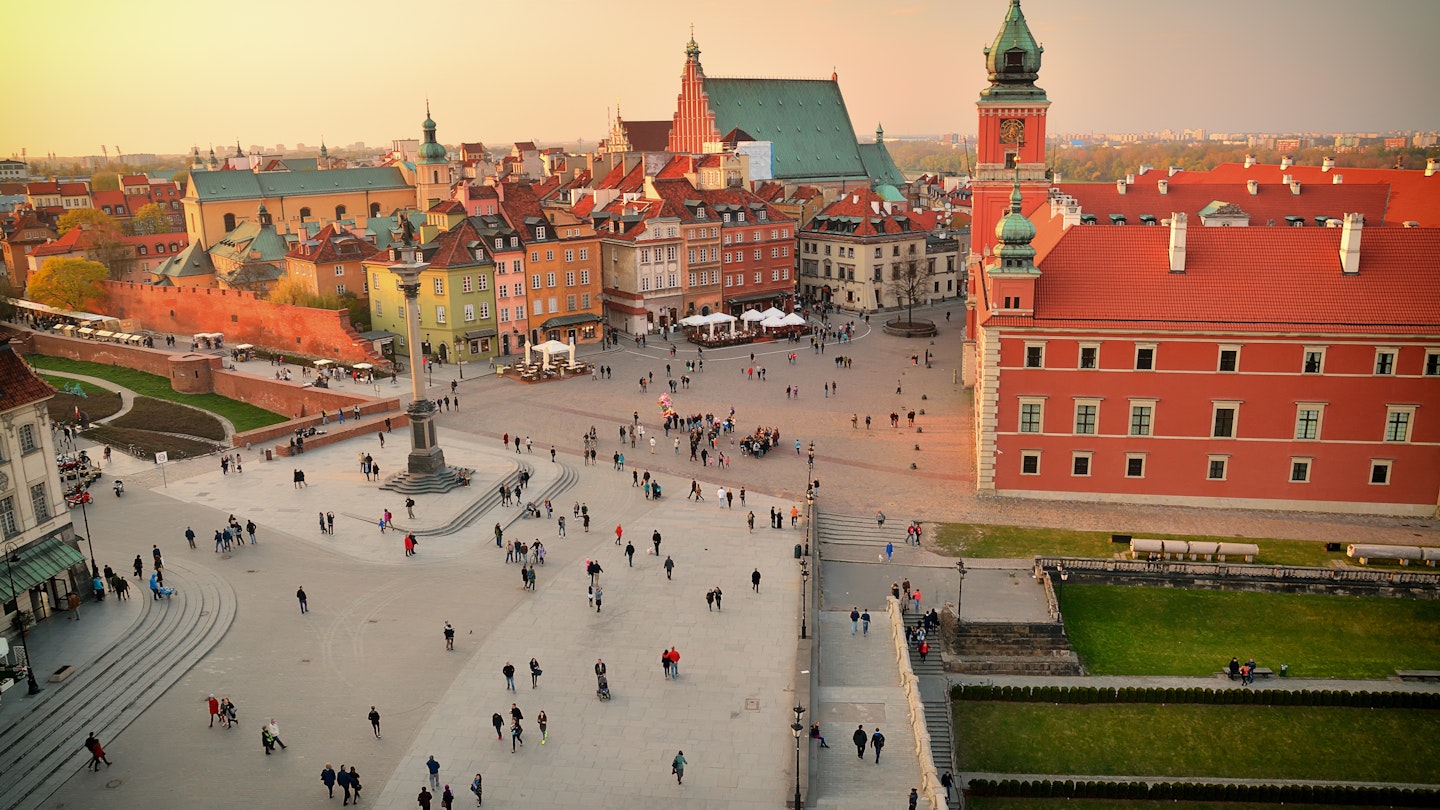
Explore Warsaw's amazing architecture © Krystian Pawlowski / 500px
With the Foster + Partner designed 310m Varso Tower set to be completed in 2020, Warsaw is on track to displace London as home to the tallest building in the European Union. Closer to the ground, a youthful energy is also transforming this 700-year-old survivor into an ideal location for a central European city break.
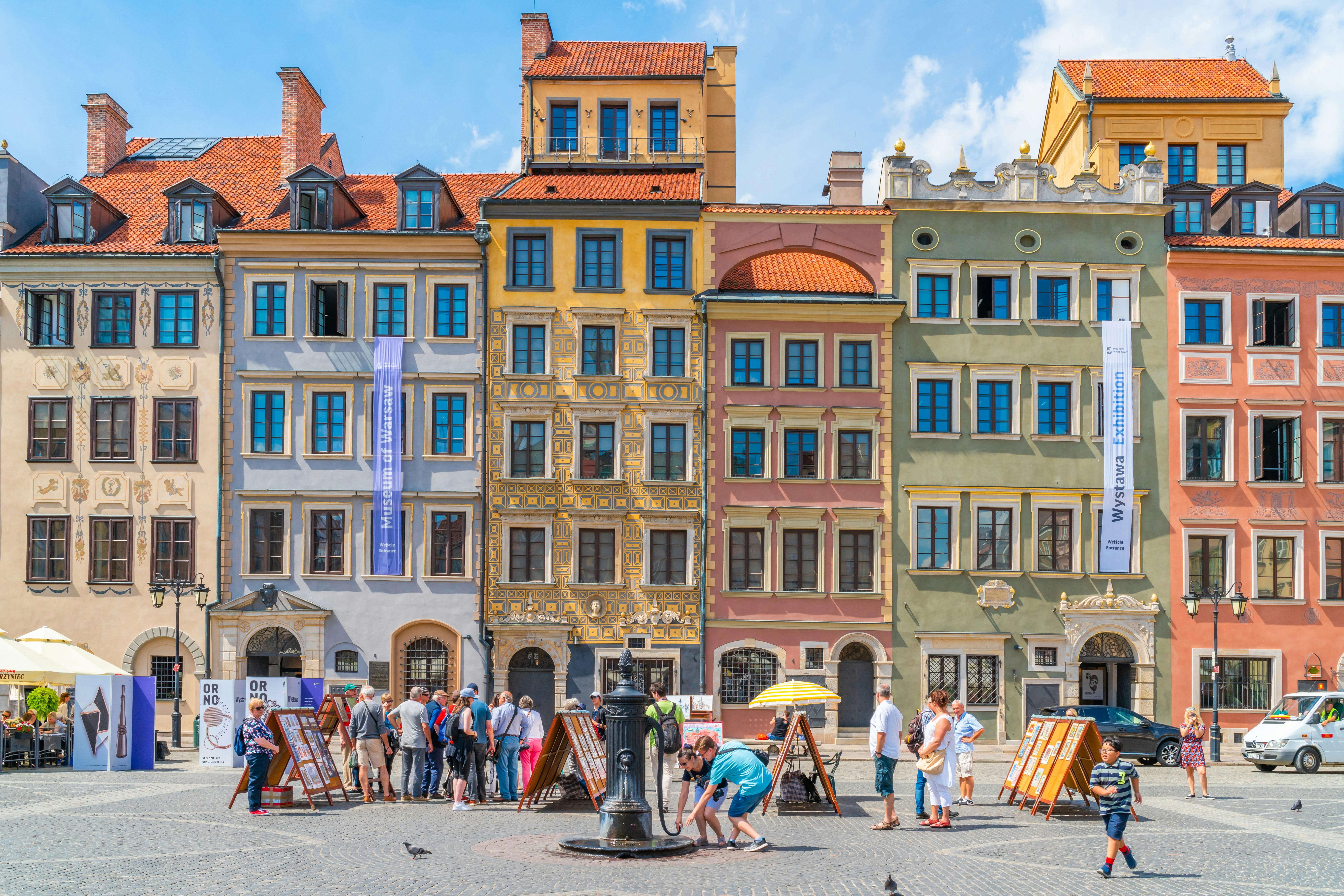
A respect for history
Eighty years ago Nazi Germany aimed to wipe Warsaw from the face of the earth – a goal that was very nearly achieved by the end of WWII. However, Varsovians are nothing if not tenacious, and out of the rubble and ashes it is miraculous what has survived – some of which is now preserved in the city’s top museums.
Start in the Old Town, itself a remarkable reconstruction of how this part of Warsaw looked in the 17th and 18th centuries. Here, the innovative Museum of Warsaw displays thousands of eclectic objects, each illuminating different aspects of the city’s history. The museum has several other branches scattered around the Old Town that are worth searching out as well as the equally impressive Praga Museum of Warsaw over on Warsaw’s east side across the Vistula River.
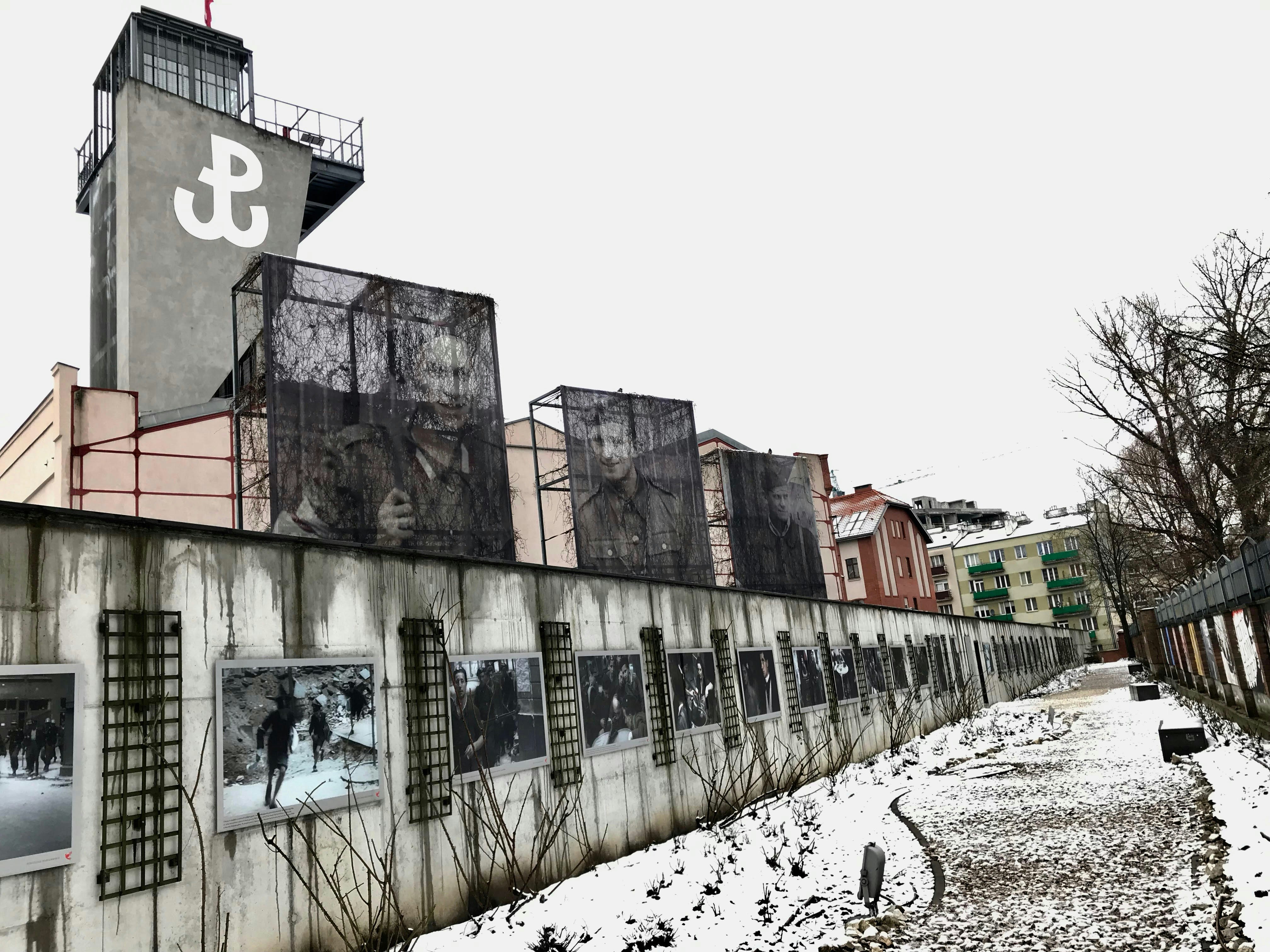
Next, deep dive into the city’s darkest days at the exceptional Warsaw Rising Museum . Housed in a former tram power station, this museum forensically covers the heroic but doomed uprising against the German occupation in 1944 via an immersive range of interactive displays, including archival films and personal accounts.
Also leaving practically no stone unturned on a millennium of Jewish life in Poland is the award-winning POLIN Museum of the History of Polish Jews . The multimedia permanent exhibition shows how much Jewish culture enriched Poland, before Europe's largest Jewish community was practically annihilated during WWII. The museum’s stunning contemporary building, designed by Finnish architectural firm Lahdelma & Mahlamäk, is a sight in its own right and stands amid a park at the heart of the former Jewish ghetto.
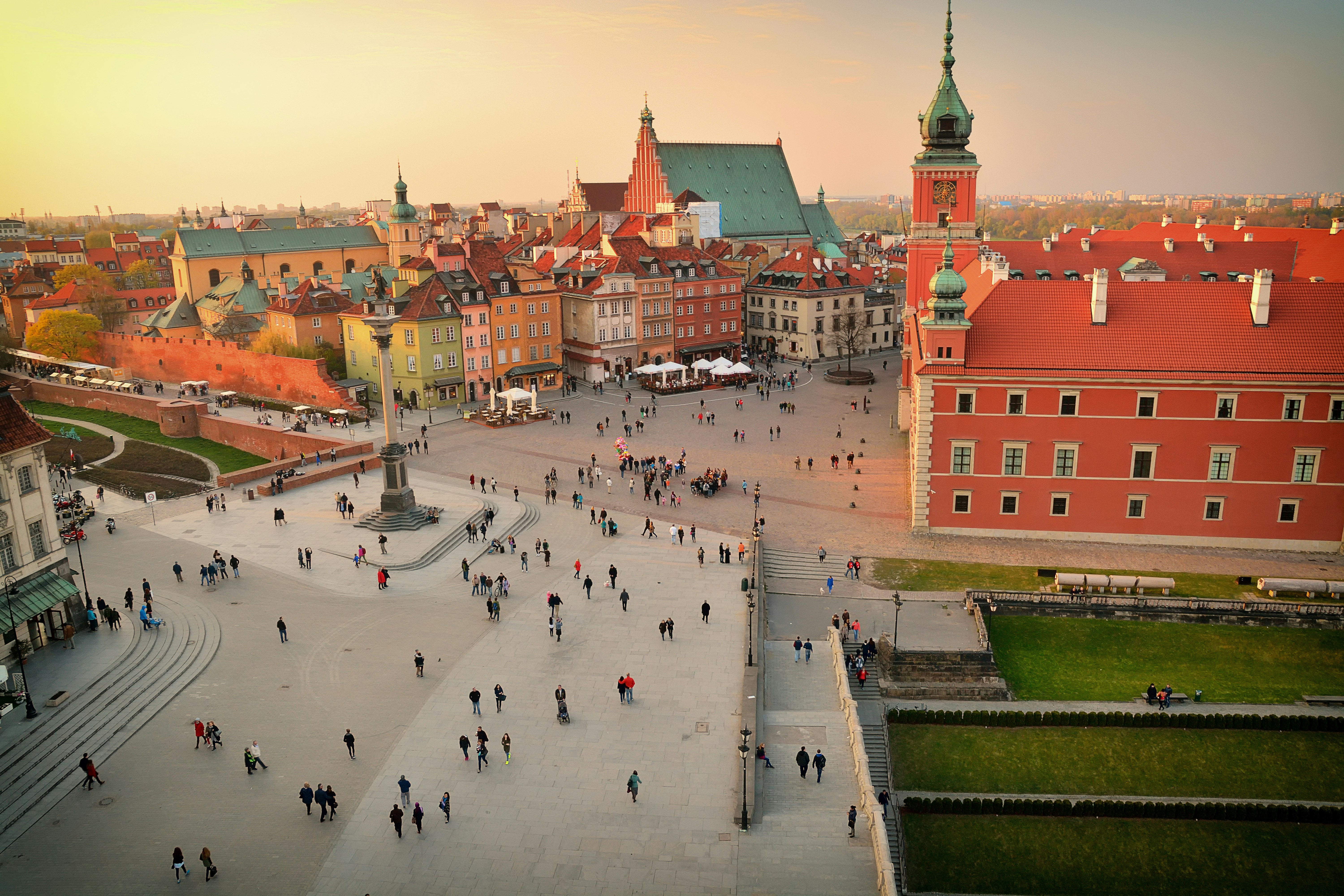
Amazing architecture
From medieval churches and revamped art nouveau market halls such as Hala Koszyki , to a flying saucer shaped former railway ticket office that’s now a cafe , Warsaw puts on quite the architectural show. Many of the city's most historic buildings, including the Royal Castle , are restorations or total recreations, but they are no less impressive for that.

During the Communist era socialist realist style went off the scale for the Marszałkowska Residential District (MDM) with its chiselled heroic worker reliefs and giant pair of candelabra on Plac Konstytucji, as well as the monolithic Palace of Culture & Science, a 1950s 'gift' from the USSR to Poland. To see some of the vast complex’s grand interior architecture, join the guided tour offered by Creatours whose booth is next to the ticket office for the observation terrace.
In recent years trendy café/bar/theatre and gallery Studio Teatrgaleria has spearheaded a cultural project to make better use of part of the somewhat forlorn Plac Defilad that surrounds the complex. Between May and August, in front of the Palace's main eastern entrance, events such as film screenings and concerts are mounted. In winter rent ice skates and work your way around the ice rink that is set up in front of the northern entrance.
Other noteworthy contemporary buildings include the Copernicus Science Centre , a fun and hugely popular interactive learning experience; and Warsaw University Library , with monumental copper panels on its facade symbolising the pages of books. In summer the library also offers a rooftop garden from which to relax and take in the views.
The great outdoors
Since 2014 Warsaw has run an architecture award ; the 2018 winner was the Vistulan Boulevards , an imaginatively landscaped promenade that has refocussed attention on the river that splits the city. On the Vistula’s east bank footpaths lead through riverside woods to Rusałka Beach , a favourite spot for Varsovians to relax and work on their tans in the warmer months – and one of several beaches along the river.
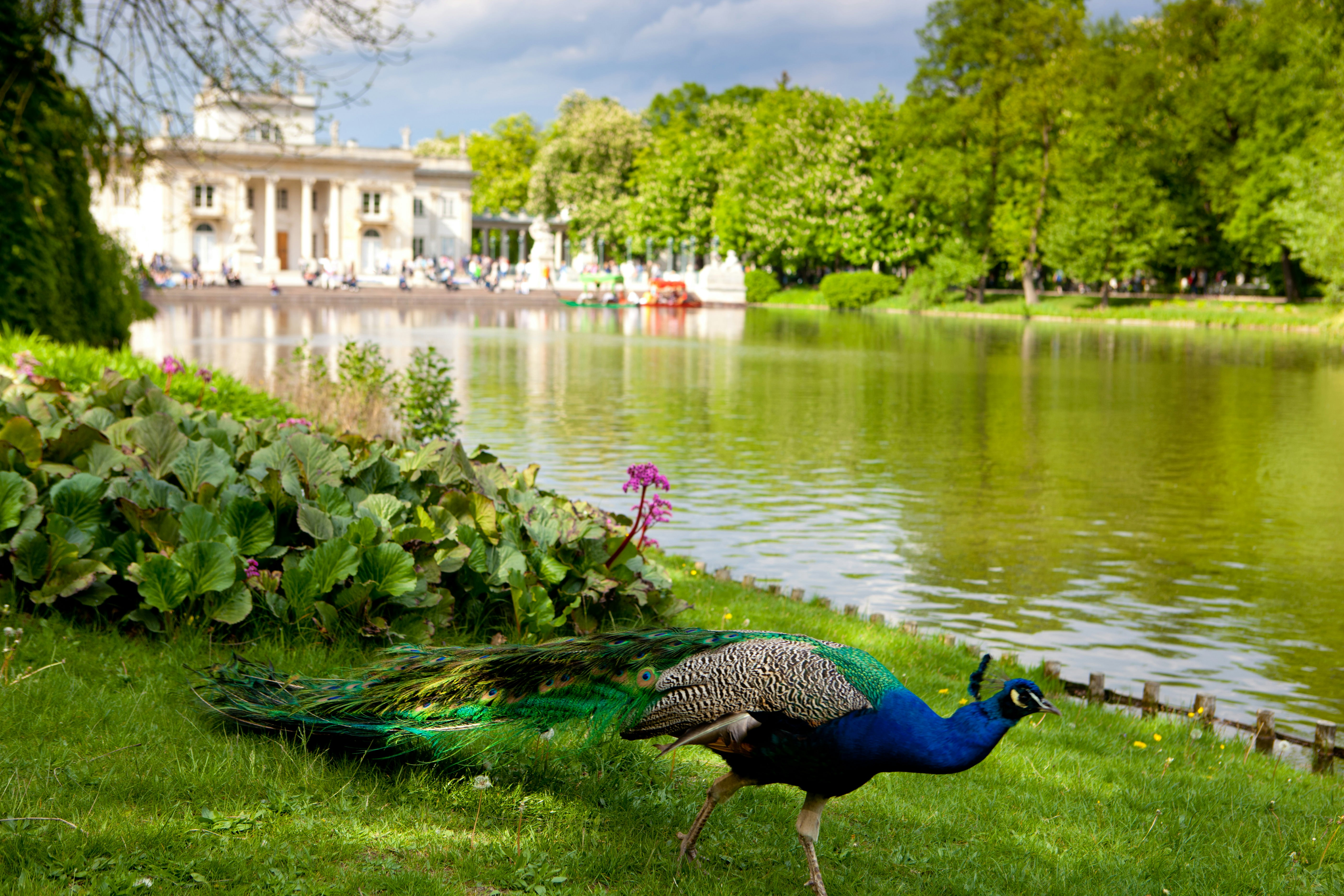
The former royal hunting ground of Łazienki Park has been transformed over the centuries to include themed gardens, palaces, an ornamental lake and an amphitheatre. It’s home to the Chopin Monument , a fabulous art nouveau bronze statue beside which free piano recitals by award-winning musicians are held every Sunday between mid-May and September.
Another pleasure for nature lovers is the 45-hectare Wilanów Park surrounding Wilanów Palace , 12km southeast of the city centre. Baroque Italian gardens, a Renaissance-inspired rose garden and an English-style landscape park are all part of Wilanów’s design. Even in winter the park is still worth visiting as it is transformed nightly by coloured illuminations.
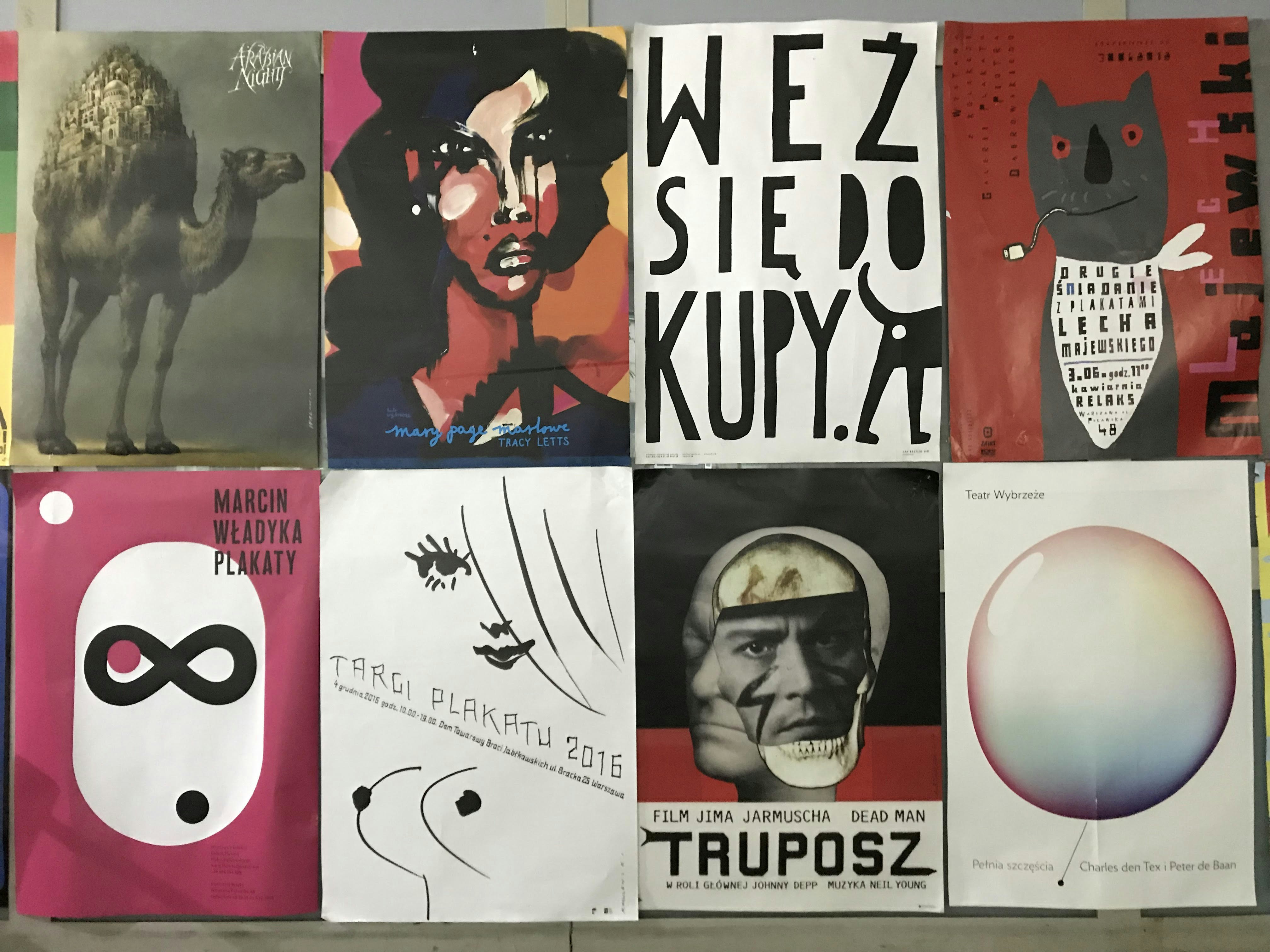

Art and design
While out at Wilanów don’t miss the Poster Museum in the palace’s renovated stable block. Polish poster designers have gained international acclaim for their original works: some wonderful examples are displayed in the regularly changing exhibitions here, and you can buy classic images in its shop. Back in the city centre, Galeria Plakatu Polskiego has the best selection of original and reproduction posters for sale.
Several centuries of outstanding Polish art and design are on display at the National Museum . The eye-popping collection here covers everything from Medieval religious icons to dazzling decorative arts. The museum’s Polish Design Gallery displays iconic pieces such as Ćmielów porcelain, 1960s fabric prints and Teresa Kruszewska's 1973 'Tulip' armchair;
Art is not restricted to galleries in Warsaw – it can be found in the form of giant Communist era mosaics that decorated the side of the buildings, as well as the contemporary counterpart of painted murals. The old industrial buildings and tenements of Praga, in particular, have become a favoured canvas for street artists, thanks to events such as Street Art Doping . Preserving another Varsovian art form is the Neon Museum , a vibrant retirement home for iconic communist-era neon signs.
The Museum of Modern Art is also doing its bit to make sure art has a profile outside of formal gallery walls. While the institution awaits its permanent home to be built on the north side of Plac Defilad, it has a temporary exhibition space at the Museum on the Vistula : the exterior of this pavilion is covered by 1600 sq m work by Sławomir Pawszak, Poland's largest painting. Another of the museum’s projects is Bródno Sculpture Park , which brings to Warsaw’s north eastern suburbs contemporary works by the likes of Paweł Althamer, Youssouf Dara and Olafur Eliasson.

Eat, drink and be merry
Having fed your mind and soul with the best of Warsaw it’s now time to feed your stomach. Whatever your budget you won’t be disappointed. Milk bars (bar mleczny) are super cheap, self-service canteens that are a hangover from communist times. These serve hearty Polish food, mainly vegetarian or dairy-based, hence the name. The best of these operations, such as Prasowy , have given their proletarian decor a contemporary makeover.
If you’re in town on a weekend get over to Hala Gwardii . This 1902 art nouveau market hall once hosted boxing matches; it’s back to selling food and drink, though now in the shape of hipster street-food outlets, craft beer bars and third wave coffee kiosks.
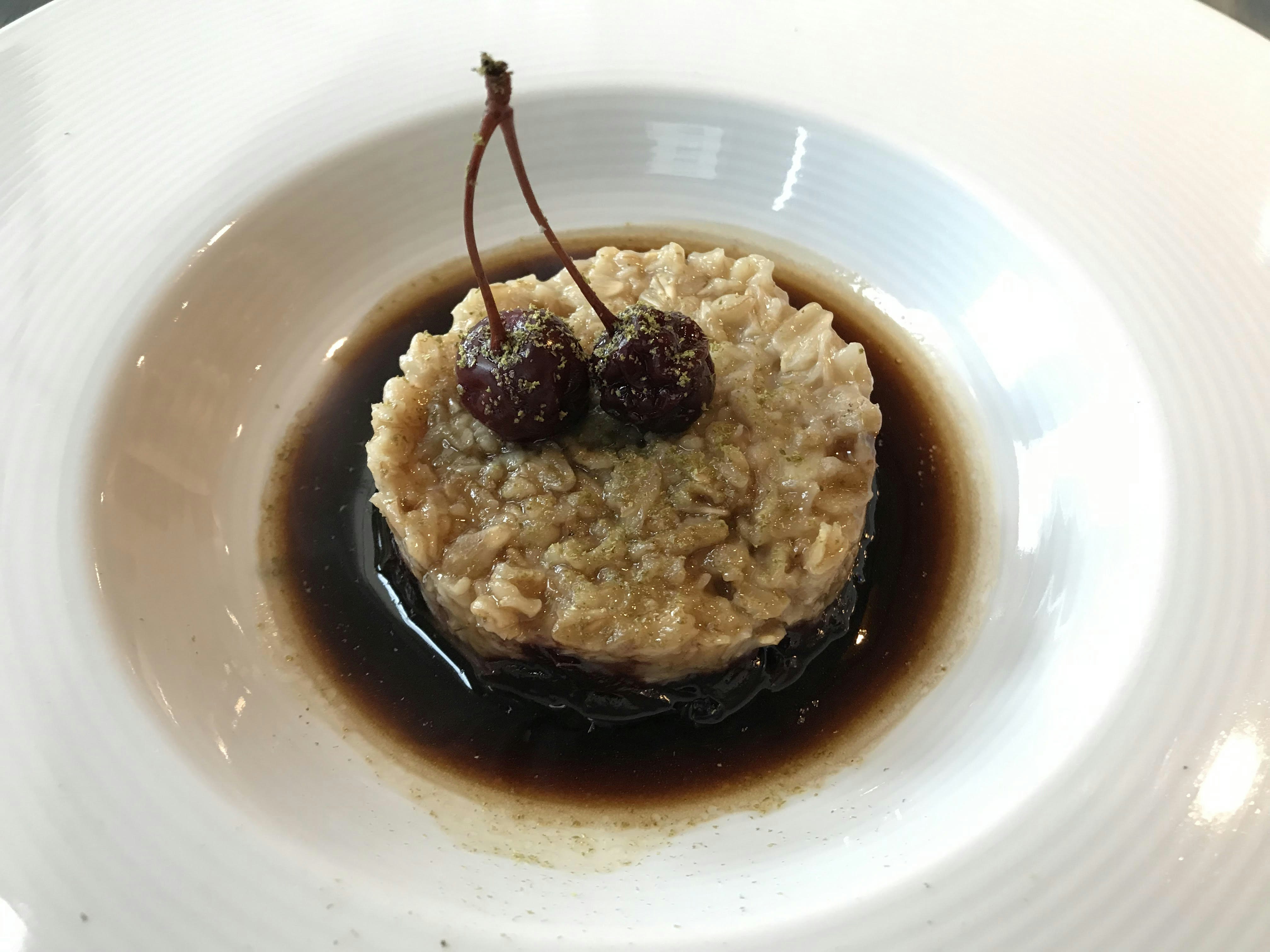
If you’d prefer a traditional style Polish restaurant, romantic Dom Polski in chic Saska Kępa is a great example. For something more contemporary, and to experience local chefs working at the top of their game, book ahead for Bez Gwiazdek or Zoni both of which offer menus that provide give historical and regional Polish recipes a modern twist.
Zoni is part of Koneser , a multiple use complex that’s the latest chapter in the hip revamp of Praga. Top brands of Polish vodka were once produced in the handsome red brick buildings here, as you’ll discover at the interactive Polish Vodka Museum . Take the tour here and you learn all you need to know about the spirit – finishing up, of course, with a tasting of three types of vodka: na zdrowie (cheers)!
Produced by Lonely Planet for Warsaw Tourism. All editorial views are those of Lonely Planet alone and reflect our policy of editorial independence and impartiality.
Explore related stories

Architecture
Jan 25, 2024 • 9 min read
Kyoto is a winning combination of atmospheric temples, sublime gardens and traditional teahouses – here's our guide to the city's best things to do.

Sep 28, 2022 • 4 min read

Apr 12, 2024 • 12 min read

Apr 12, 2024 • 9 min read
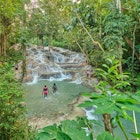
Apr 13, 2024 • 5 min read

Apr 12, 2024 • 8 min read
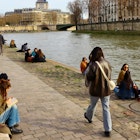
Apr 12, 2024 • 4 min read

Apr 12, 2024 • 7 min read
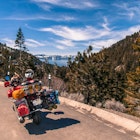
Apr 12, 2024 • 5 min read

WarsawGuide.com
Tourist information warsaw.
Posted in Information
Facts for tourists travelling to Warsaw
The tourist information section introduces you to useful facts about our city.
– 24 hour pharmacies – 24 hour post office – 24 hour shops – Airlines (selection) – Customs regulations – Embassies (selection) – Emergency numbers – Holidays in Poland – Opening hours – Polish food – Railway stations – Taxes in Poland – Taxis
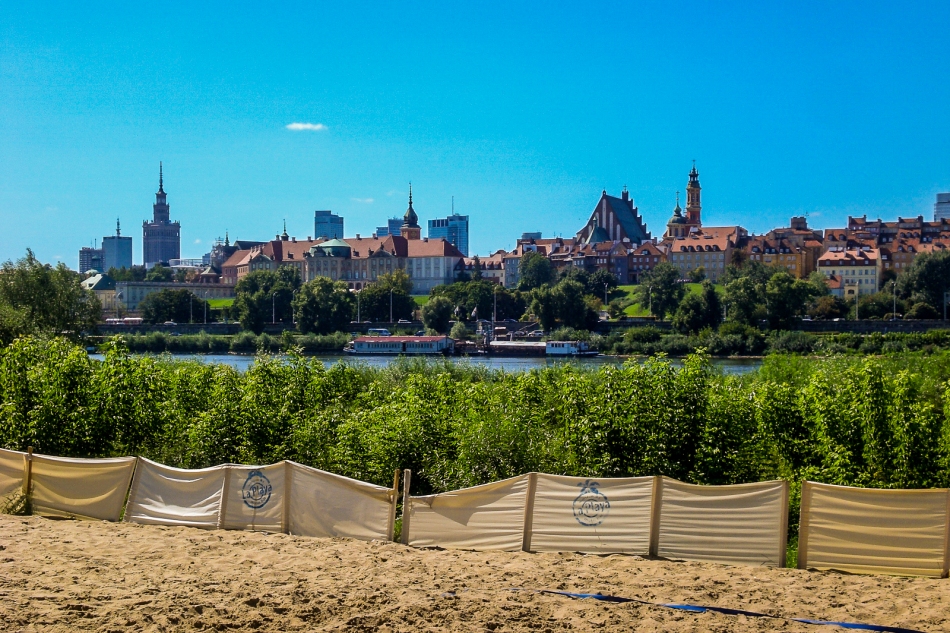
24 Hour Pharmacies in Warsaw Al. Jana Pawla II 52/54 Al. Jerozolimskie 54 (Main Railway Station – Warszawa Centralna) Al. Solidarnosci 149 ul. Grójecka 76 ul. Lubelska 1 (Railway Station Warsaw East – Dworzec Wschodni) ul. Puławska 39 ul. Wilcza 31 ul. Zeromskiego 13
24 Hour Post Office in Warsaw ul. Świętokrzyska 31/33 Letters up to 50 grams: 2,40 PLN to Europe / Worldwide 1,30 PLN within Poland
24 Hour Supermarkets in Warsaw Tesco ul. Stalowa 60/64 (16000 sqm) ul. Połczyńska 121-125 (12000 sqm) ul. Górczewska 212/226 (9350 sqm) al. Ken 14 (8000 sqm) – Close to Kabaty Metro
Airlines (Offices in Warsaw) Aer Lingus: Tel: 022-6268402 Airfrance: Nowy Swiat 64, Tel: 022-5566400 Alitalia: Nowy Swiat 64, Tel: 022-5566800 Austrian: Al. Jana Pawla II 29, Tel: 022-627529092 British Airways: Marszałkowska 76, Tel: 022-5299000 Iberia: Tel: 022-4340400 Lot: ul. Krolewska 11, Tel: 0801-703703 Lufthansa: Al. Jana Pawla II 29, Tel: 022-338130 SAS: Al. Jana Pawla II 29, Tel: 022-8500500 Swiss: Al. Jana Pawla II 29, Tel: 022-6504525 Norwegian: Tel: 022-2111740 Wizz: Tel: 022-3519499
Customs Provisions when departing to another EU member country For goods intended for personal use import restrictions have been eliminated within the EU. However, there are fixed amounts that can only be exceeded if the private use is proofed. Duty-free quantities: 200 cigarettes or 400 cigarillos or 200 cigars or 1 kg tobacco 10 liters of spirits and 20 liters of wine with higher alcohol content and 90 liters of wine (up to 60 liters of sparkling wine) and 110 liters of beer, 10 kg of coffee and 20 gallons of gasoline in a reserve container. An export of works of art, antiques, books and articles before 9.5.1945 is only possible after prior approval of the curator of the relevant voivodeship. Be aware there can be different restrictions even within the EU, e.g. fireworks bought in Poland can not be taken to Germany. So please check the rules for your travel destination before making purchases in Warsaw.
Embassies in Warsaw Austrian: ul. Gagarina 34, Tel: 022-8410081 France: ul. Piekna, Tel: 022-52930000 German: ul. Dabrowiecka 30, Tel: 022-5841700 Ireland: ul. Humanska 10, Tel: 022-8496633 Italy: pl. Dabrowskiego 6, Tel: 022-8263471 Japan: ul. Szwolezerow 8, Tel: 0226965000 Russia: ul. Belwederska 49, Tel: 022-8495111 Spain: ul. Mysliwiecka 4, Tel: 022-6224250 Swiss: Aleje Ujazdowskie 27, Tel: 022-6280481 UK: Aleje Roz 1, Tel: 022-3110000 USA: ul. Piekna 12, Tel: 022-6251401
Emergency Numbers Police: 997 (Mobile Phone: 112) Fire Department: 998 First aid: 999 English is usually understood
Holidays in Poland January 1st: New Year’s Day January 6th: Epiphany Easter Sunday April 5th 2015 / March 27th 2016 Easter Monday April 6th 2015 / April 28th 2016 May 1st: Holiday May 3rd: Constitution Day (The first constitution is dated May 3rd 1791) Corpus Christi: Second Thursday after Pentecost / 60 days after Easter Sunday August 15th: Assumption of the Blessed Virgin Mary / Day of the Polish army November 1st: All Saints Day November 11th: Independence Day (Sovereignty from 1918) December 25th: Christmas December 26th: Christmas
Opening Hours in Warsaw (Opening hours vary, so these are approximate figures. Banks: Monday-Friday: 8:00-18:00 Stores: 7/10-19/22 Uhr, Saturdays partly till midday, Sundays larger supermarkets and malls are open all day Markets: 6 till midday or evening Restaurants: 10/12:00-22/23:00 Gas stations: mostly 24 hours Churches: 6-22 Uhr Museums and Galleries: 9-17 Uhr, sometimes closed on Mondays
Polish Food You will find find all sorts of food as in every other big city, but be sure to try some polish dishes when you are in Warsaw
Soups Barszcz: Beetroot soup: clear, white or ukrainian (Barszcz ukraiński), often served with stuffed dumplings. Chłodnik: Refreshing cold beetroot soup prepared with sour cream, sour milk, buttermilk or yogurt. Kapuśniak: Sauerkraut soup with onions, mushrooms and pork. Żurek: Sourdough soup, usually including sausage, vegetables, flour, garlic, eggs and onions.
Main Dishes Bigos: Sauerkraut stew, usually including sausage, ham or meat, and other available ingredients, such as: mushrooms, plums or potatoes. Gołąbki: With minced pork and rice stuffed cabbage wraps, with sauce and a garnish, often served with Kopytka (small potato dumplings). Kotlet Schabowy: Fried pork chops often accomplished with hot cabbage or potatoes. Pierogi: Often stuffed with sauerkraut and mushrooms, minced beef, potatoes and cheese or even fruit. Placki ziemniaczane: Potato pancakes made from raw potatoes in combination with flour, egg and salt. They are usually served with a sauce or sour cream.
Desserts Naleśnik: Pancakes, often filled with fruits or quark. Sernik: A classic cheesecake.
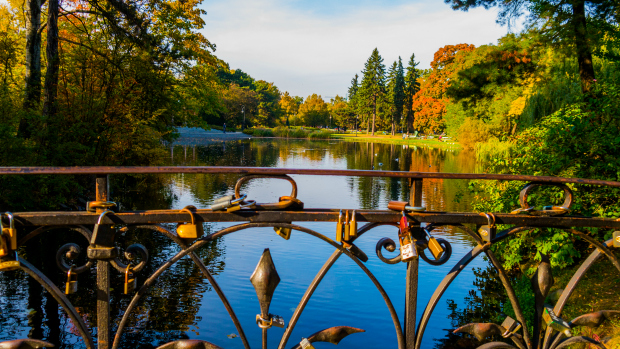
Railway Stations Central (Main) Station (Dworzec Centralny): Al. Jerozolimskie 54 Railway Station West (Dworzec Zachodni): Al. Jerozolimskie 144 Railway Station East (Dworzec Wschodni): ul. Lubelska 1 Railway Station Gdansk (Dworzec Gdanski): ul. Słominskiego Railway tickets can be bought directly at the railway station
Taxis in Warsaw In Warsaw taxis are relatively cheap – from the airport to the center you usually pay less than 40 PLN (less than 10 euros). The individual taxi companies have different rates, usually one kilometers will cost PLN 2.00 to 2.80 PLN (from 6:00-22:00) and a starting fee of 8 PLN (including first kilometer) is charged. Between 22:00 and 6:00 (as well as from Saturday 22:00 to Monday 6:00) you pay around 1 PLN more per kilometer. Use only taxis with a taximeter and pay attention to the properly adjusted fare (daytime: taryfa 1, nighttime and Sunday: taryfa 2). Trips outside the city borders are priced even higher. At the end of the journey you can request an electronic print with all the data (pricing, kilometers, start, end of journey).
Taxes in Poland VAT rate: 23% (reduced rates: 5% or 8%); Important rates for tourists: 8%: food in restaurants, taxis, books and magazines, 23%: drinks in restaurants. Income tax: 19-40% (progressive), corporate income tax: 19%
In addition to the tourist information above, a few basic details about the city: Warsaw is part of the Masovian Voivodeship. With around 1.7 million inhabitants, it’s the largest city in Poland and is situated almost exactly in the middle of Mazovia. Warsaw currently consists of 18 districts and has been capitol since 1596, when it replaced Krakow. Warsaw is split in two parts by the over 1000-kilometer-long river Vistula, which crosses crosses Poland from south (Beskydy) to the north (Gulf of Gdansk).
- Tourist information
Copyright © 2024 | Warsaw Guide

Warsaw Tourism Organization
We bring the industry together.
We are a public-private association, established upon initiative of the Warsaw Municipality. The Warsaw Tourism Organization brings together all entities operating in the broadly understood tourism industry in Warsaw (tourism organizers, event agencies, hotels, conference venues, institutions of culture, restaurants, etc.). One of the main activities of our Association is supporting the promotion of Warsaw as a tourist and MICE destination by developing various tourism products together with the Association’s Members. WOT’s structures include also the Warsaw Convention Bureau which is responsible for attracting international congresses and conferences to Warsaw.
Our projects
Culinary warsaw.
Warsaw has undergone a true gastronomic revolution over the last couple of years, becoming a frequent destination of culinary travels. The culinary offerings of our city have already been described by foreign media such as Forbes or the influential blog HappyCow Vegan Guide which in 2017 ranked the Polish capital at the top of most vegan-friendly cities.
Responding to this strong trend, the Warsaw Tourism Organization prepared in close cooperation with the city’s Marketing Bureau a premium publication entitled “Culinary Warsaw 2018” [Warszawa kulinarna 2018], which for the very first time has presented the Warsaw’s gastronomic scene – from milk bars, through cult market halls and unassuming bistros, to high-end and starred restaurants. Currently, 15 restaurants are among the members of the Warsaw Tourism Organization.
Restaurants recommended by the Warsaw Tourism Organization:
Cultural Warsaw
Every month there is more than 100 cultural events taking place in Warsaw. Institutions of culture in Warsaw offer a rich program of exhibitions and accompanying events , often of international nature. In view of this, the Warsaw Tourism Organization launched a project called “Cultural Warsaw” [Warszawa Kulturalna].
The project makes use of any new and fresh idea, but is also based on employing the existing and proven solutions in promoting this field, such as:
- the “Visit a museum after work” [Odwiedź muzeum po pracy] folder presenting Warsaw’s institutions of culture associated in WOT and their cultural and event-related offer;
- the “Visit a museum after work” [Odwiedź muzeum po pracy] Facebook profile page targeting the industry, but also the people of Warsaw perceived here as potential ambassadors of Warsaw and the city’s tourist offer. We use it to publicize the current exhibitions and events taking place in museums and galleries associated in WOT. Together with our partners, we organize competitions and various promotional activities to disseminate the news of Warsaw museums’ offer to an even wider audience.
A part of our Cultural Warsaw project was also creating a leaflet called “Discover Warsaw Museums” to enable mutual recommendations between our members who are the Warsaw’s institutions of culture. Our goal here was for the tourists and guest to these venues, while visiting them, to learn that they could also go and see other sites located at a specific distance from the place where they are now.
Education and Development
Fostering the long-term and sustainable development of Warsaw tourism, WOT has been working with local higher education schools in various educational projects and undertakings to develop professional competence of the industry personnel and professionals of the future. In cooperation with Warsaw School of Economics, Warsaw School of Tourism and Hospitality Management (Academy of Finance and Business Vistula), and the University of Physical Education in Warsaw, we run the projects detailed below.
If you are a school of higher education, a business, or another entity, and are interested in cooperating with WOT in a similar manner, please contact us at [email protected] .
Training tourism and hospitality personnel and professionals of the future
Frigate (Free Gate) is an innovative project based on proven research tools, aiming at developing the offer of schools and other educational institutions for the youth and adults to match the expectations of local employers, and in this way to facilitate pursuing a career in this field.
We invite to this project only the most prestigious employers from the leading industries, including the tourism industry. Their feedback will inform the projects and programs run by the Warsaw Municipality, and serve as the basis for modifying the teaching programs in Warsaw schools in accordance with the needs of the employers and the labor market.
In June and July 2018 we had the first meetings to determine the needs of the employers from the tourism industry (hotels and tour operators), and to eliminate or mitigate the problems encountered when trying to hire fully competent employees. The meetings were attended by Marriott and Accor hotel chains’ representatives and selected DMCs’ representatives.
The next stage will see the guidelines being developed for teaching curricula at vocational schools with professional profiles outlined for the most demanded professions, such as a waiter, a chef, and a receptionist. Working meetings between the representatives of vocational schools and the hotels will take place every month, so that the jointly proposed solutions could be implemented in 2019.
The idea to establish an information sharing platform, effectively enabling the employers to affect the education policies, came from the Warsaw Municipality, and the “Industry Survey of Employers’ Needs” has been completed by the Warsaw School of Economics, with Warsaw Tourism Organization serving as a partner for the entire project.
Sounding board for academic teaching curricula
Together with the University of Physical Education in Warsaw we plan to conduct, on a regular basis, industry consultations concerning the educational program undertaken by this university, so that this program matches the requirements of the dynamically changing market as well as possible. The nearest consultation session is planned for February 2019.
Student practices and traineeships
Detailed information for WOT members about the opportunities to work in that area with the students from the Warsaw School of Tourism and Hospitality Management (Academy of Finance and Business Vistula) will be released soon.
Expert professionals sharing their knowledge and expertise
Through WOT, all Warsaw schools of higher education offering tourism-, hospitality-, and gastronomy-related courses can invite experts and professionals from the local industry to share their knowledge and expertise with the students during guest lectures and workshops.
Study visits to Warsaw facilities
WOT is also always keen to help organize study visits of the students of Warsaw higher education institutions with hospitality-related courses to hotels and conference venues.
New products for revitalized Praga
The project New products for revitalized Praga [Nowe produkty dla rewitalizowanej Pragi] was inspired by a study prepared by the Warsaw Municipality entitled “Integrated Revitalization Programme of the capital city of Warsaw until 2022” which is a continuation of revitalizing activities included in the “Local Revitalization Programme of the capital city of Warsaw for the years 2005–2013”.
The mission of the “Integrated Revitalization Programme of the capital city of Warsaw until 2022” is to level the playing field for all districts of Warsaw by creating and initiating key revitalization undertakings in the priority areas and by coordinating selected policies of the Warsaw Municipality in the crucial areas.
The overall goal of the project is to revive these crucial areas in terms of their social and economic activity. Another major goal is to develop the tourism, culture and sports in those areas based on local identity and cultural heritage.
The shared objective of the New products for revitalized Praga project is to prepare, in effect of cooperation between various industries and sectors (local government, institutions of culture, tour operators and tourist attractions organizers, hotels, and local associations), the concepts for products which on the one hand would enable effective touristic development of Praga while utilizing its huge cultural and social potential, and on the other hand would support the revitalization program implemented by the Municipality and would counter such negative phenomena as gentrification or the so-called “overtourism”.
Upon a joint initiative of the Warsaw Tourism Organization and the Office of Architecture and Spatial Planning at the Warsaw Municipality, the workshops were held to work out the concepts for new tourism products for Praga in Warsaw. The workshops followed the service design methodology, which enables creating innovative products and services focusing on customer experience and satisfaction, as well as on the optimization of services in line with the priorities of the implementing organization. During the workshops each participant had an opportunity to share their thoughts and experiences, which spurred some creative ideas in the first part of the event to be then transformed into specific product concepts.
These concepts are available for viewing here (document available only in Polish) – only for WOT members.
Another stage of the project will comprise the implementation tests conducted by the willing members of our Organization. The results of this test implementation will then be assessed, and selected products will be included in the Warsaw tourist offer.
All WOT members willing to run such implementation tests of the jointly developed concepts are welcome to get in touch with us!
Stopover in Warsaw
Project’s objective:
- Making the tourist offer accessible to the long-haul flight passengers for whom Warsaw is just a stopover along their route and who would not otherwise take advantage of the city
- Increasing airline attractiveness
- Boosting the number of visitors to Warsaw
PLL LOT (project initiator), Port Lotniczy Okęcie, Warsaw Tourism Organization, WOT members – tour operators, tourism organizers, attractions, restaurants, museums, galleries
Note: The project can be executed with involvement of all interested partners.
The project sets out to design a number of tours aligned with selected flight schedules that would be accessible to PLL LOT passengers who have a transfer in Warsaw lasting at least a couple of hours (but no more than 24 hours). The Warsaw Tourism Organization invited its members to come up with such tour ideas. In effect of the discussions that ensued, the project has been modified – following a number of meetings with all interested parties, AB Poland Travel was selected as the project coordinator to hold further talks with the national carrier on behalf of all other WOT members interested in participating in this project. In parallel, WOT’s Board of Directors met with PPL Okęcie representatives who provided their data on the transit traffic at the Warsaw Frederic Chopin Airport. Further developments in the project will be notified as they happen via newsletters, mailing campaigns, and our Association’s website.
Our marketing of Warsaw
Newsletter wot.
Write to us, if you want to receive our newsletter
Contact us at:
Warsaw Tourism Organization, ul. Podwale 13 00-252 Warszawa, tel. 22 656 69 90, [email protected] NIP [Tax no.]: PL 5252530970
Follow Warsaw at:
Program Committee:
- Deputy Chairperson: Paweł Moras, City Hall of Warsaw (Stołeczne Biuro Turystyki)
- Vice Chair: Loretta Neufeldt-Ziemba, Orbis S.A
- Vice Chair: Bogdan Wieczorek, Supertour
- Committee Member: Kamil Dąbrowa, City Hall of Warsaw (Biuro Marketingu Miasta)
- Committee Member: Piotr Cieśliński, City Hall of Warsaw (Biuro Rozwoju Gospodarczego)
- Committee Member: Michał Kurek, Warszawski Uniwersytet Kulinarny
- Committee Member: Aneta Popiel – Machnicka, Fundacja Belle Epoque, Muzeum Domków Lalek, Gier i Zabawek
- Committee Member: Rafał Patla, Adventure Warsaw
- Committee Member: Davide Odella, EXPO XXI Warszawa
The operations of the WOT’s Program Committee are supported by the WOT office.
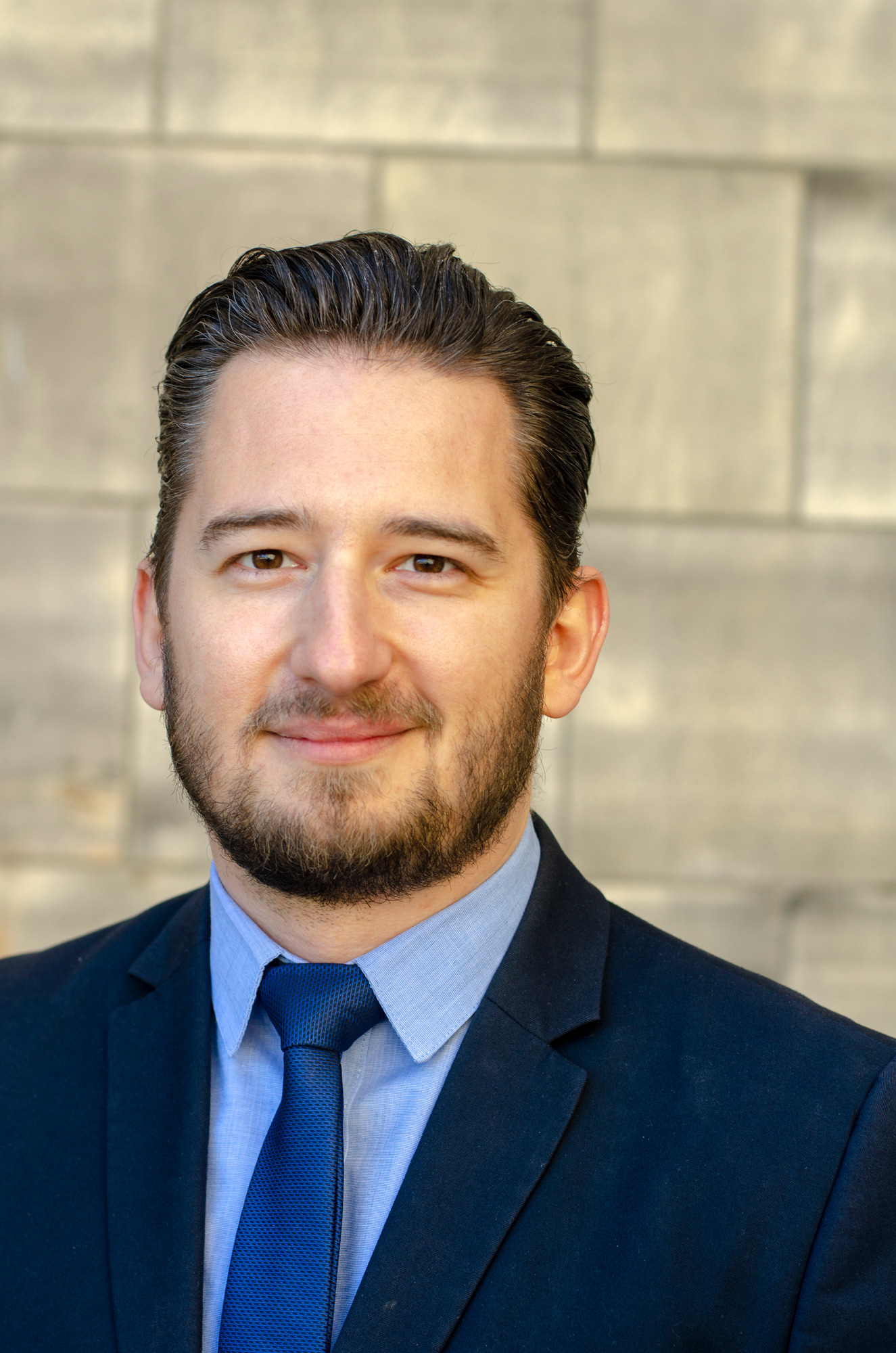
Barbara Paszkowska
Vice-President of the Board
A Polish Philology (editing and media major) at Maria Curie-Sklodowska University graduate. She gained her experience both from advertising and media agencies, and from international financial corporations. In Warsaw Tourism Organization since 2013. Now in charge of the office management, working with the Board of Directors and the Program Committee, and cooperating with the Association’s members.
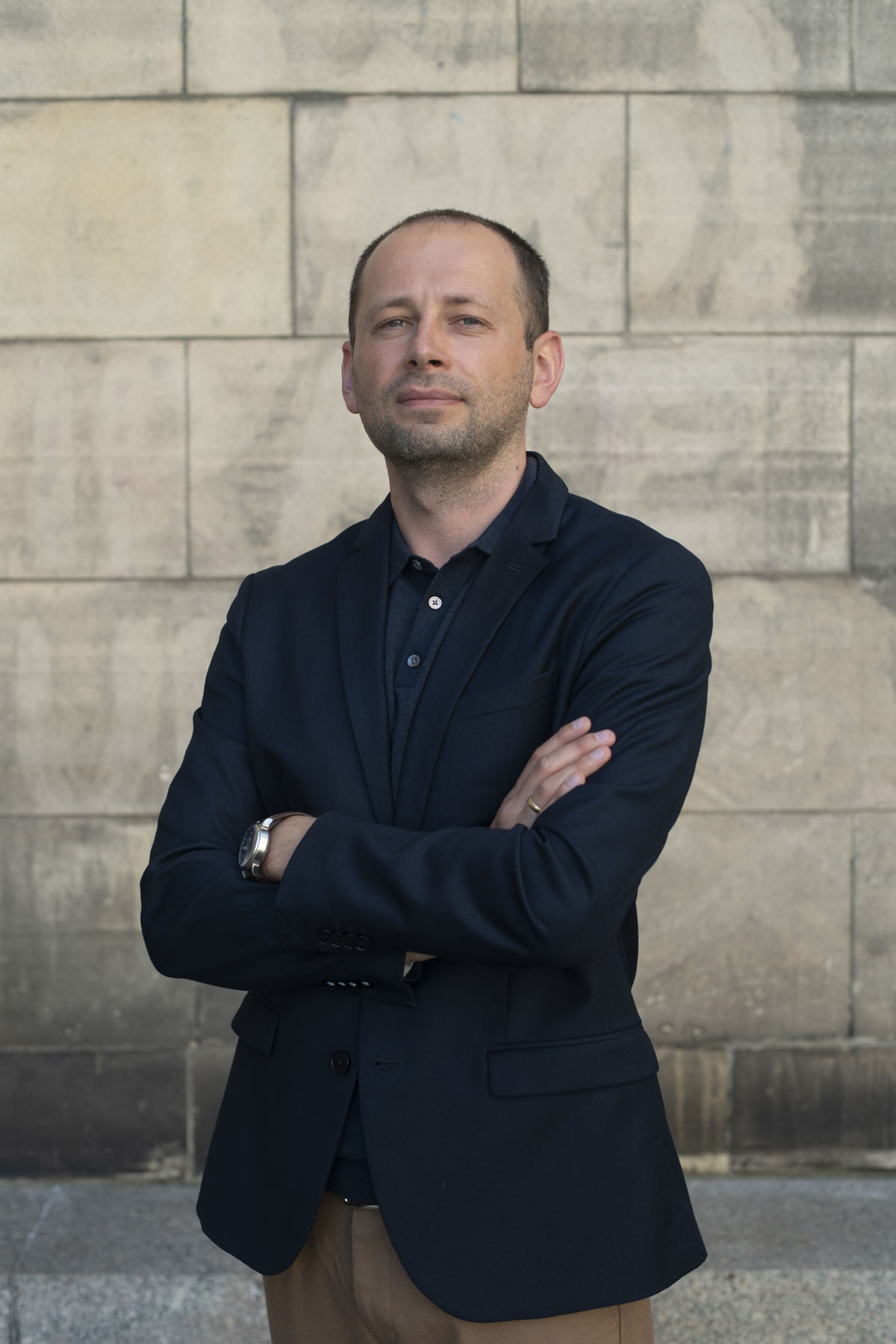
Publications
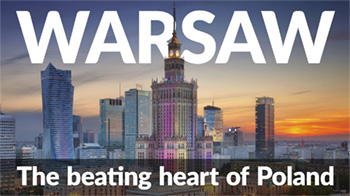
Presentations
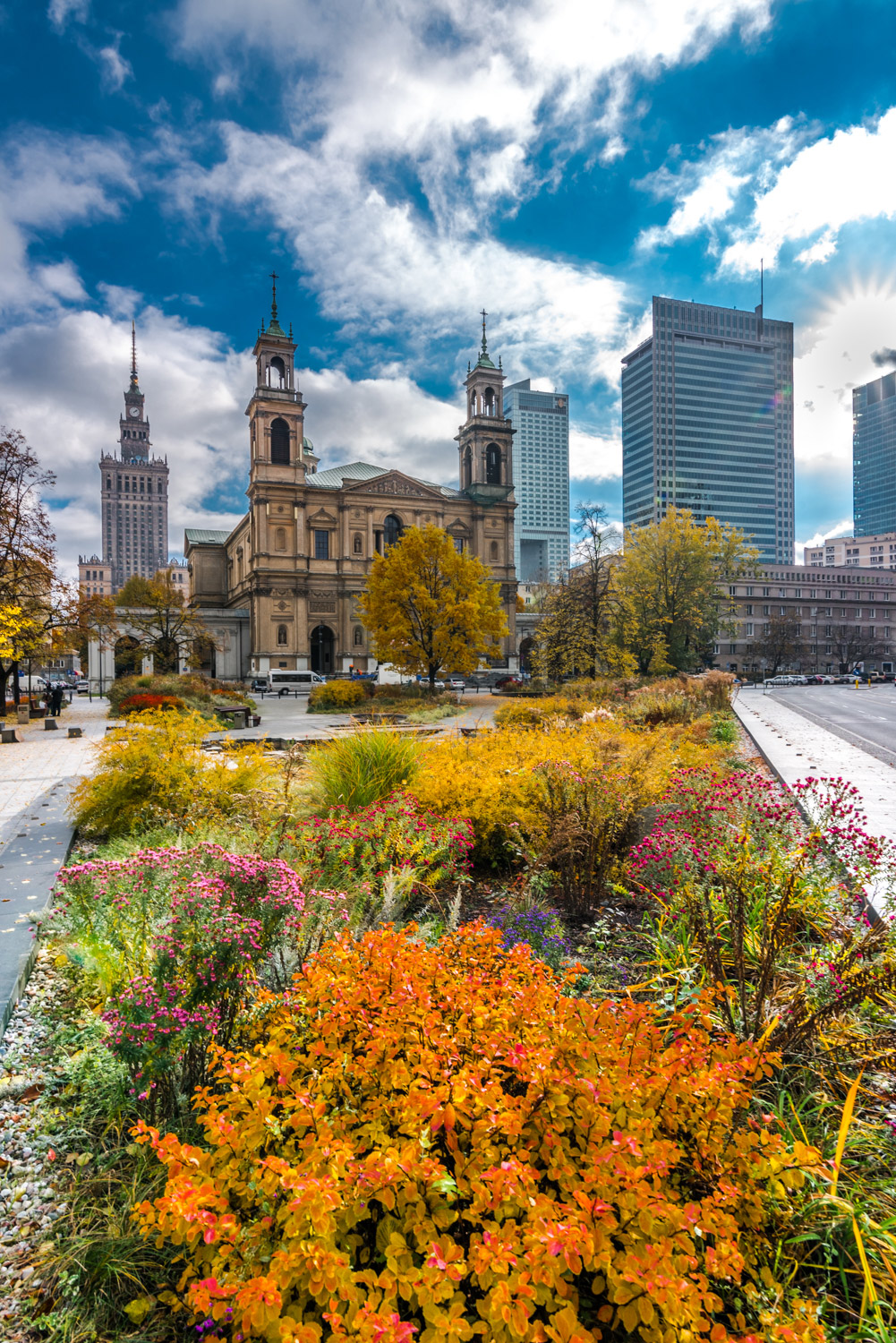

The capital of Poland was practically rebuilt from scratch after World War II. Warsaw’s vibrant business downtown takes pride in its many skyscrapers and ambitious plans to build more. The catchy skyline is still dominated by the enormous Palace of Culture and Science – Stalin’s donation to the nation. Warsaw is a world in itself, with an eastern European flavour. Do not miss the beautiful Old Town, the Royal Route, the Chopin museum, several magnificent palaces and the former Jewish ghetto.
Warsaw tourism
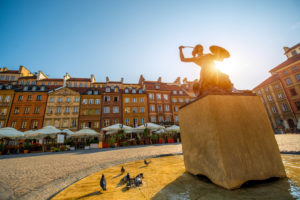
The present character of the city is determined by three important factors: World War II, over 40 years of communist rule and the present years of transformation with its in-flow of foreign capital and investment. As any other European capital, Warsaw is full of striking contrasts. Historical monuments that were newly rebuilt after World War II coexist with numerous examples post-war housing estates of grey concrete tower blocks and ultra-modern glass office buildings built since 1989. Similarly, the hassle and bustle of its lively city centre, the constant flow of traffic and the crowds of people contrast with the serenity of the many beautiful urban parks.
Where is Warsaw located?
Situated on both sides of the Vistula, almost in the heart of Poland, Warsaw is also the capital of Masovia. This is a region rich in folk traditions, characterised by flat landscapes with large open fields. The river divides the city into two parts distinct in character. The more up-market western bank of the Vistula is where the majority of Warsaw’s businesses, banks, theatres and cinemas can be found. The poorer eastern side, known as Praga, is slowly loosing its neglected appearance with a growing number of modern shopping centres, office buildings and blocks of flats.
History of Warsaw
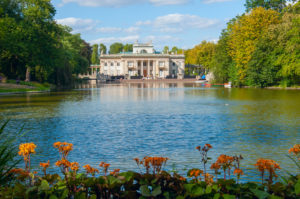
Gothic Warsaw was destroyed by fire in 1607, and later rebuilt in the spirit of Renaissance and Baroque – only to be devastated once more during the Swedish invasion between 1655 and 1657. In the Royal Castle, the residence of Polish monarchs, the Constitution of the Third of May was adopted – the first such act in Europe and the second in the world after America (1791). Soon after came the Partitions, when Warsaw together with Masovia was incorporated into Prussia.
During the Napoleonic Wars the city had hopes of liberation, with the Duchy of Warsaw being established in 1807. Following the failure of Napoleon, the Polish Kingdom – a quasi-state totally dependent on Tsarist Russia – was created in the area of Masovia.
The city and the country regained its independence following the end of World War I. In 1920 Poland was attacked again, this time by Bolsheviks, and the city defended itself in a battle usually referred to as the Miracle on the Vistula. After about 20 years of Polish independence, Warsaw was occupied by Nazis following the outbreak of World War II in September 1939.
In 1940 the Germans established the Jewish ghetto in the city centre. In 1943 an uprising broke out in the ghetto but, with practically no chance of victory, the ghetto inhabitants were defeated after a month of resistance and the ghetto was eliminated. In 1944, as the Soviet Army approached, a second uprising occurred, this time involving the whole city. The citizens of Warsaw were unable to liberate their city and the withdrawing Nazis destroyed 90 % of its fibre.
After the war Warsaw became the capital of one of the satellite countries of the Soviet Bloc. From 1946 on, great efforts were made to rebuild the city with the reconstruction of the Old Town recreating its pre-war shape. Apart from restoring the historical parts of Warsaw, new social-realist architecture was introduced to Warsaw. The population of Warsaw and its area grew intensely as new housing estates were created in the 1970s.
The communist rule fell in 1989 after the Round Table agreements between the Communist Party and the opposition, held at the Radziwill Palace in Krakowskie Przedmiescie Street. Since then Warsaw has experienced an unbelievable economic, cultural and architectural boom, which has rapidly changed the face of the city. more >> -->
GENERAL INFORMATION

Grand Tour of Poland
- Explore Poland’s finest
- Learn glasswork secrets
- Experience a unique water-and-grass cruise
Recommended Warsaw tours
Warsaw city walk.
- Warsaw. Better when introduced
- 3 hours with a professional guide
- walking tour tailored to your preferences
Poland in One Day
- safe trip with a private driver
- two important sights in one day
- Krakow+Auschwitz from Warsaw available only in StayPoland.com
Joyful Day in Warsaw
- famous pierogi tasting
- sightseeing of the Phoenix City
- unique Chopin music concert
HOTEL & CITY PAGES:
- Warsaw hotels
- Krakow hotels
- Gdansk hotels
- Poznan hotels
- Wroclaw hotels
- Lodz hotels
- Szczecin hotels
- Zakopane hotels
- Bydgoszcz hotels
- Katowice hotels
- Torun hotels
- Lublin hotels
- Gdynia hotels
- Sopot hotels
- Bialystok hotels
- Czestochowa hotels

- Inspiration
Poland more than you expected
- Top attractions
Discover our regions
Discover poland in it’s 16 amazing regions:.

This is a region with many valued historical sites, castles and palaces as well as attractions for fans of industrial tourism (it is home to Poland’s first capital city, Gniezno). The province also has plenty of valuable natural areas including two national parks (Wielkopolska National Park and part of Drawa National Park), which hold great potential for active tourism such as the Great Wielkopolska Loop. The region’s capital is Poznań, Poland’s most important trade-fair centre.
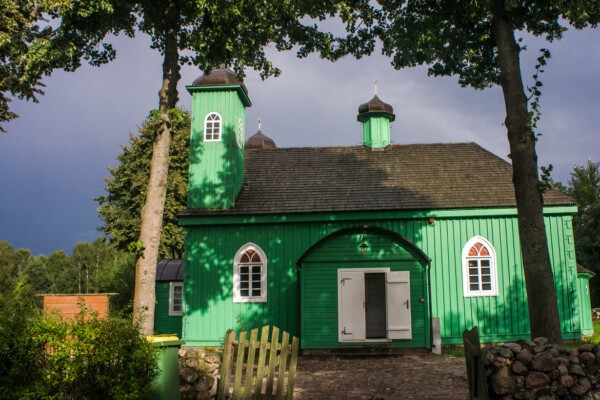
A picturesque region with remarkable rivers and lakes, the least urbanised part of Poland; idyllic landscapes, charming localities, health resorts, and four national parks (Białowieża, Biebrza, Narew and Wigry) welcome tourists; the region includes the UNESCO-listed Białowieża Forest; Podlaskie province, with hospitable Białystok as its capital, has many multicultural attractions…
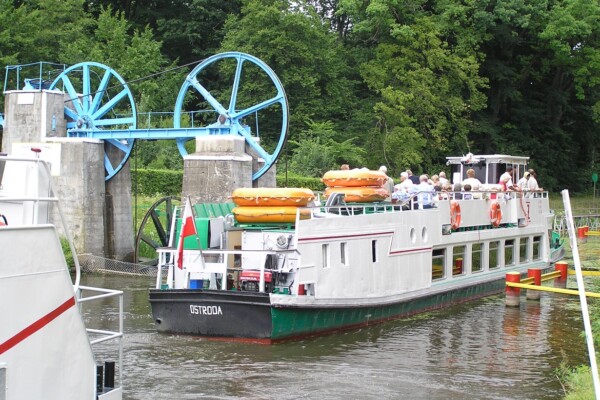
A region very popular among tourists for the Great Masurian Lakes, summer resorts and health spas, visitors will discover many charming towns lying amidst beautiful forests and bodies of water.
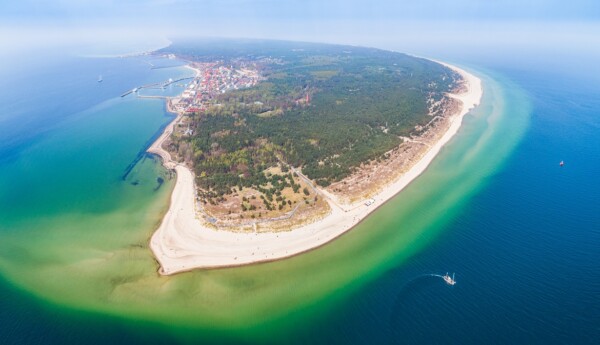
As a destination, this province is great for health resorts and spas on the Baltic Sea as well as many interesting historical sites. Highlights include the UNESCO-listed Castle of the Teutonic Order in Malbork, two national parks (Słowiński and Tuchola Forest) also cultural and historical ones, starting with the region’s capital of Gdańsk.

A coastal region offering lots of great adventures and home to many seaside resorts and famous health spas, the province has attractive natural areas including two national parks (Wolin and Drawa). Zachodniopomorskie province is a region with lots of attractions for every tourist.
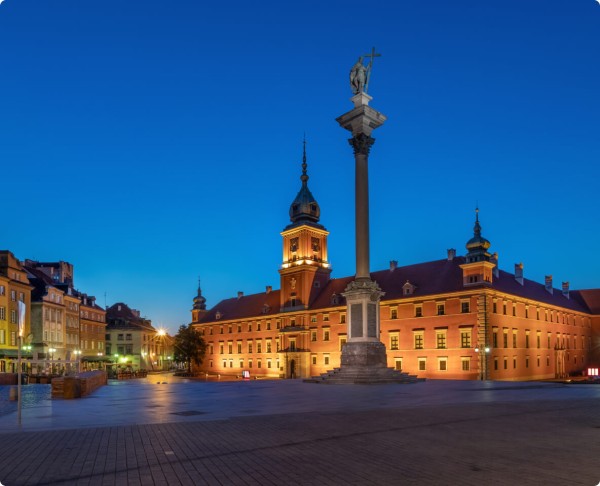
Filled with attractions for the active and history-loving tourist, with traces of Chopin’s life and work, this is the largest province and home to Poland’s capital city – Warsaw, whose Old Town is a UNESCO-listed heritage site. To the south of the capital lies a health resort, and to the north-west Kampinos National Park, not to mention the surrounding localities explored via the winding roads of Mazovia…
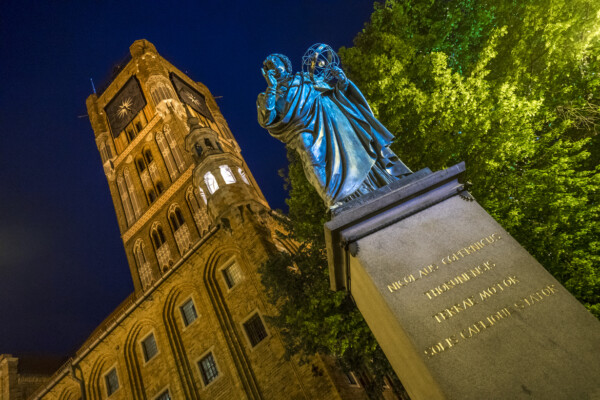
Filled with ancient Slavic sites, famous health resorts and natural attractions, the province also includes a gem of Gothic architecture – Toruń – whose historical centre, with the 14th-century Town Hall, tenements and fragments of castle walls, is a UNESCO-listed heritage site.
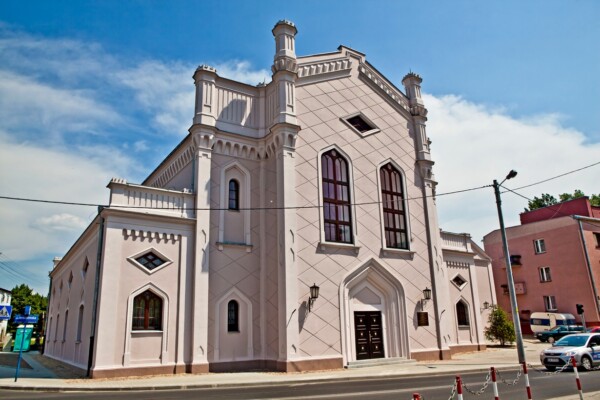
A region with an ever-growing number of tourist attractions, both natural and manmade, not to mention Poland’s only thermal spa in Uniejów and a skiing facility in the heart of Poland: Kamieńsk Hill on the slope of the Bełchatów mine. The geometric centre of Poland lies in Łódzkie province, in the village of Piątek, and the province capital is the multicultural and modern city of Łódź.
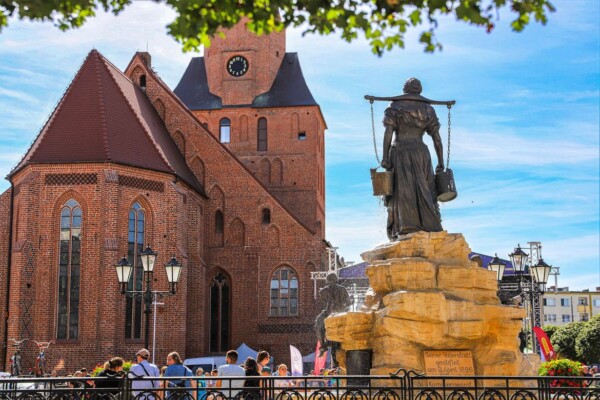
Poland’s most densely forested province, rich in natural attractions including a national park (Warta Mouth), historic buildings (e.g. Łagów Castle) and former military sites (the Międzyrzecz Fortification Region), as well as a UNESCO-listed site: Park Mużakowski. The province has two capitals: Zielona Góra and Gorzów Wielkopolski.
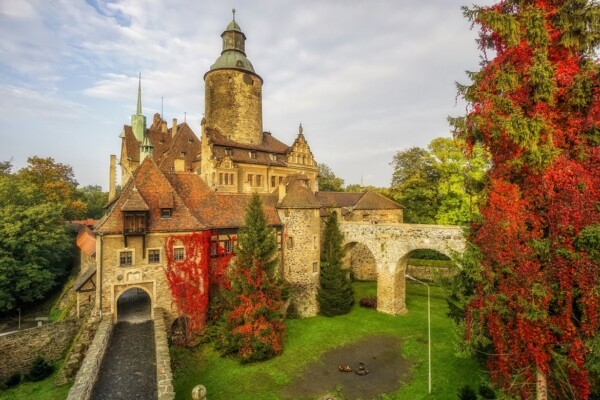
Home to a variety of architectural marvels (including Książ, Poland third largest castle) Lower Silesia also boasts mountains, two national parks (Karkonosze and Sowie Mountains), many mountain resorts and the greatest number of health spas in Poland. Dig a little deeper and you’ll also find two UNESCO-listed sites (the Churches of Peace in Jawor and Świdnica, and the Centennial Hall in Wrocław), as well as the bustling regional capital, Wrocław.
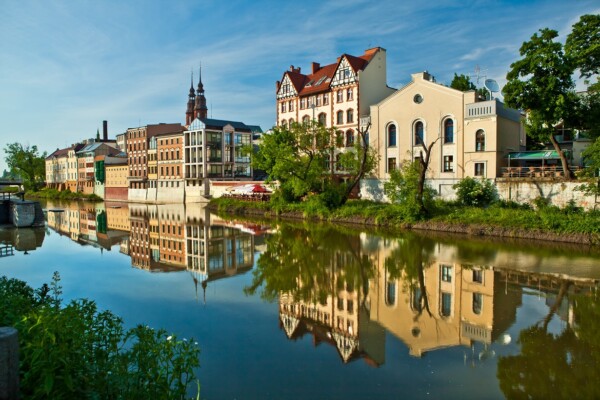
Poland’s smallest province, but one that is rich in culture and full of treasures for tourists. There’s something for everyone here – whether you’re looking to sightsee or are craving some relaxation. The region boasts beautiful lakes and rivers, famous castles and palaces, fascinating natural, historical and even prehistoric sites; the capital of Opolskie province is the “singing” city of Opole…
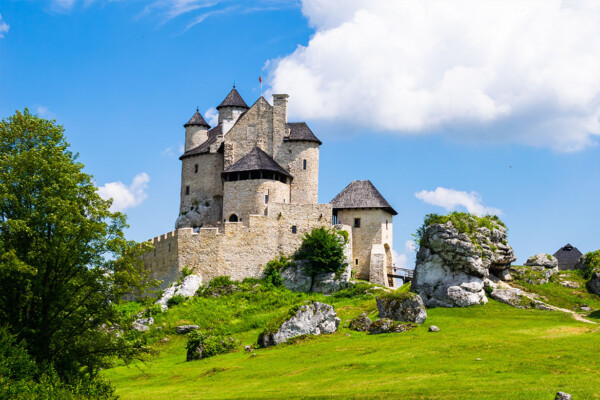
Śląśkie (Silesia) is a province rich in mineral and natural resources and is one of the most important industrial regions of Poland. Silesia’s largest city and historical capital is Wrocław, and the major metropolitan area is the Upper Silesian metro area with Katowice at its center. The multiethnic heritage of the region delivers deep and enriching cultural exploration of local history, tradition, and customs.
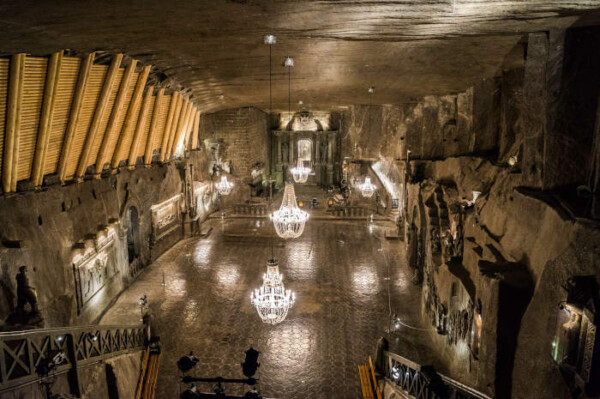
The Małopolska Province is where one finds some of Poland’s most visited sites. This most varied region stretches from the snowy peaks of the Tatra Mountains to the rugged limestone cliffs of Kraków-Częstochowa Upland, and the scenic, low lying Vistula River Valley.
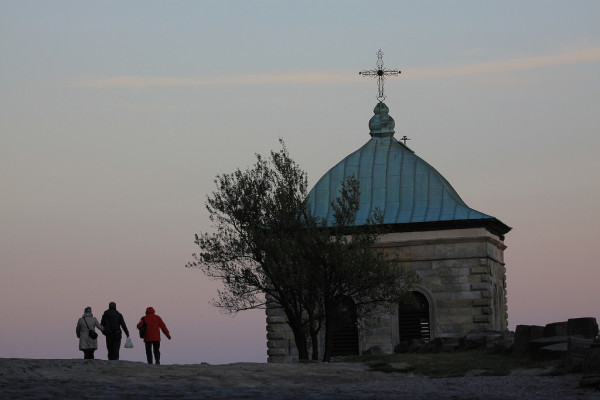
This is a charming province, home to the Świętokrzyskie Mountains and Świętokrzyski National Park. The region is all about hermit and monastic traditions, age-old legends and dinosaurs combined with picturesque towns, multiple historical sites and famous health resorts. The regional capital is Kielce.
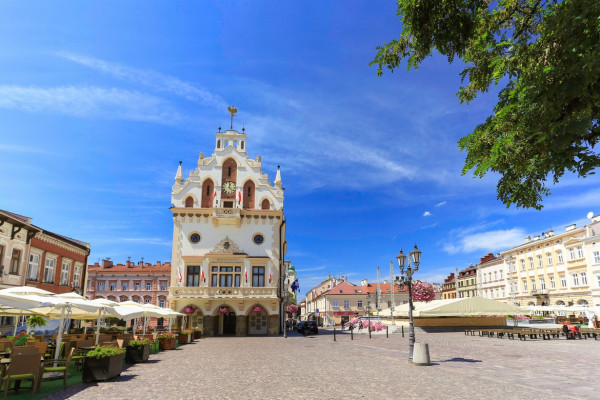
Podkarpackie is one of the greenest regions of Poland. There are pristine meadows and beautiful forests. Over one third of the region’s area, including remnants of the ancient Carpathian primeval Forest, is protected. Mighty wisents, lynxes, wildcats, and a number of rare bird species such as the golden eagle, are just a few of many species you can meet while hiking in the area.
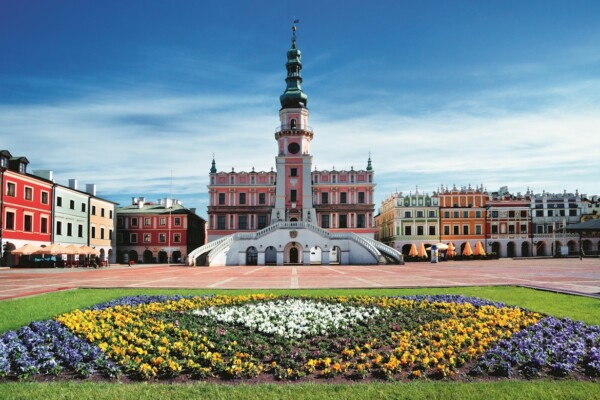
Beautifully situated between the rivers Vistula and Bug, at the junction of Eastern and Western culture, Lubelskie has an alluring exoticism. Offering a rich natural environment with two national parks (Roztocze and Polesie) as well as historical sites including the UNESCO-listed Old Town in Zamość, the region tempts visitors with boats trips along the Vistula in Kazimierz, hiking in the Vistula glacial valley, treatments at health resorts and historic architecture in the province capital – Lublin.

Photos from Poland
See photos of instagramers

Warsaw Travel Guide

Courtesy of jacek_kadaj | Getty Images

Why Go To Warsaw
Kraków may be known as Poland's cultural capital, but the country's official capital – Warsaw – is just as appealing to culture hounds. After all, this is the city where iconic figures like Marie Curie and Frédéric Chopin grew up. Following a day spent at a music festival or the Copernicus Science Centre , you can explore the historic Old Town neighborhood. Or, soak up Warsaw's rich (and often dark) past at museums like the Warsaw Uprising Museum and the POLIN Museum of the History of Polish Jews . No matter how you fill your day, you can end it with locally made vodkas or hearty traditional fare (think: meat and potatoes) at one of the city's restaurants, bar mleczny (government-subsidized eateries) or street vendors.
Find Flight and Hotel Deals
Navigate forward to interact with the calendar and select a date. Press the question mark key to get the keyboard shortcuts for changing dates.
Navigate backward to interact with the calendar and select a date. Press the question mark key to get the keyboard shortcuts for changing dates.
Best of Warsaw
Best hotels in warsaw.
- # 1 in Hotel Bristol, a Luxury Collection Hotel, Warsaw
- # 2 in H15 Boutique Hotel
- # 3 in Polonia Palace Hotel

Best Things to Do in Warsaw
- # 1 in Old Town (Stare Miasto)
- # 2 in Lazienki Królewskie Museum (Muzeum Lazienki Królewskie)
- # 3 in POLIN Museum of the History of Polish Jews (POLIN Muzeum Historii Zydów Polskich)

Popular Tours

From Warsaw Auschwitz and Krakow one day tour by train with pick up and drop off
(134 reviews)
from $ 164.91

Guided Tour to Auschwitz-Birkenau from Warsaw
(38 reviews)
from $ 148.53

Chopin Concerts everyday at the Fryderyk Concert Hall
(156 reviews)
from $ 23.48
Warsaw Travel Tips
Best months to visit.
The best time to visit Warsaw is between June and August. Although these months constitute Warsaw's peak season, summer's pleasant temperatures (which hover in the 50s, 60s and 70s) and ample seasonal activities make up for dealing with larger crowds at attractions. If you're sticking to a tight budget, you'll score discounted rates on rooms and flights between December and February (Warsaw's winter) thanks to the region's chilly 20- to 30-degree weather. March to May and September through November (the city's spring and fall seasons) are also cost-effective times to visit, with May and September providing relatively comfortable temps in the high 40s to high 60s.
Weather in Warsaw
Data sourced from the National Climatic Data Center
What You Need to Know
Stay in or near Old Town This central neighborhood (and its adjacent districts) boast several top attractions and feature everything from affordable hostels to five-star properties.
Restroom customs differ here Public restrooms – such as ones found in metro stations and some cafes – generally cost 1 or 2 Polish zloty (or less than $1) to use. Also, keep in mind the symbols used to designate gender-specific bathrooms: Women's restrooms are marked with circles, while men's facilities have triangles.
The nightlife scene is growing Poland produces about 40 percent of the European Union's vodka, so it's hardly surprising that Poles like to drink. You'll find watering holes and nightclubs throughout Warsaw, especially in trendy neighborhoods like Praga and Powisle.
How to Save Money in Warsaw
Buy a Warsaw Pass If you plan on visiting multiple sights and using public transportation, consider buying an upgraded Warsaw Pass card . These passes, which cost 105 to 219 Polish zloty (or between $29 and $61) per person, cover one to three days of unlimited rides on Warsaw's metro, trams and buses, as well as entrance fees for attractions like the POLIN Museum of the History of Polish Jews and the Copernicus Science Centre .
Skip traditional restaurant meals Warsaw's street food vendors and bar mleczny (or milk bars, government-subsidized cafeterias that were popular during Poland's communist era) are some of the city's best spots to enjoy cheap, authentic Polish dishes like pierogies (potato-filled dumplings) and zapiekanki (a pizza-like dish made with a baguette half instead of dough).
Take advantage of free days at museums Most of Warsaw's must-see museums – including the Warsaw Uprising Museum and the Lazienki Królewskie Museum – offer waived admissions on Thursdays or Sundays.
Culture & Customs
Warsaw's occupation by Nazi Germany during World War II is one of the darkest periods in the city's history. Many Polish Jews living in the city at the time died while trying to survive in ghettos and death camps or fighting against their oppressors during the Warsaw Ghetto Uprising of 1943. Their suffering during World War II and their far-reaching cultural impact is commemorated at many of Warsaw's museums and monuments, including the POLIN Museum of the History of Polish Jews and the Warsaw Uprising Museum .
Although Warsaw's historic attractions and ample museums are the main reasons visitors flock to the city, Poland's capital also boasts a lively nightlife scene, especially in up-and-coming neighborhoods like Powisle and Praga. What's more, famous musicians like Frédéric Chopin and Wladyslaw Szpilman once called Warsaw home, so it's hardly surprising that the city hosts an array of music-focused events, including free outdoor piano concerts at the Lazienki Królewskie Museum and various jazz festivals. Famed scientist Marie Curie and art deco artist Tamara de Lempicka also lived in the capital.
English is spoken by many Poles, so you shouldn't have any issues communicating with locals. However, Poland's official language is Polish, and learning a few basic words and phrases in Polish – like " czesc " (hello), " prosze " (please), " dziekuje " (thank you) and " do widzenia " (goodbye) – will likely come in handy.
Unlike other members of the European Union, Poland uses the Polish zloty as its official currency (1 Polish zloty is equal to $0.28). But, euros are occasionally accepted as a valid form of payment for select tours and at a limited number of stores. Since the Polish zloty (or euro) to U.S. dollar exchange rate fluctuates, be sure to check what the current exchange rate is before you go. And keep in mind Poland's tipping etiquette: Leaving a tip is not customary, but if exceptional service is provided, feel free to tip 10 to 15 percent of your bill.
What to Eat
Warsaw may not be known as a foodie destination, but its dining scene is arguably the best in Poland. Many of the city's best restaurants – including Stolica , Restauracja Polska Rózana and Soul Kitchen Bistro – feature Polish classics like pierogies (a dumpling-like dish that features a potato stuffing) on their menus. Other must-try dishes include zurek (a sour rye soup that's loaded with hard-boiled eggs and sausage) and bigos (a dish made of fried and stewed cabbage, sauerkraut, mushrooms and meats like bacon and kielbasi , grilled sausages). Modern versions of traditional Polish items, meanwhile, can be found at eateries like the Amber Room Restauracja and N31 restaurant&bar .
For affordable Polish cuisine, Warsaw's street vendors and bar mleczny (or milk bars, government-subsidized eateries that were commonplace during Poland's communist rule) can't be missed. These casual eateries serve popular items like zapiekanka (a baguette half topped with mushrooms, cheese and ketchup) and fasolka po Bretonsku (a stewed version of baked beans) and are located throughout the city. Popular milk bars include Bar Bambino and Prasowy .
Warsaw also boasts multiple ethnic restaurants that specialize in everything from French to Israeli cuisine. According to recent travelers, some of the city's best ethnic eateries include Maho Restaurant (which serves Turkish fare), InAzia (a Japanese restaurant) and Mr India (where Indian dishes are on the menu).
Additionally, Warsaw produces nearly half of the European Union's vodka. Visitors ages 18 and older can sample vodkas at many of the city's bars and restaurants, but for an in-depth look at the spirit, consider signing up for a tasting with local tour operators like XperiencePoland and Eat Polska . XperiencePoland's tasting costs 29 euros (roughly $34) per person and includes eight vodka samples and two Polish snacks. Meanwhile, Eat Polska's tasting is 290 Polish zloty (or about $80.50) per person and features six or seven vodka samples, plus five or six food pairings.
Poland's crime rate is low overall, but theft and pickpocketing (especially at popular attractions and on public transportation) occasionally occur. As such, travelers should keep an eye on their belongings and surroundings at all times. It is also best to avoid public demonstrations, which are fairly common in Poland and can become violent, and to travel with others at night and in crowded areas like Old Town . For more tips on how to stay safe while visiting Warsaw, check out the U.S. State Department's website .
Getting Around Warsaw
The best ways to get around Warsaw are on foot and via public transportation. Many top attractions sit within walking distance of one another, while others are easy to reach by metro, tram or bus. Warsaw's public transportation network – operated by Zarzad Transportu Miejskiego – is extensive, offering approximately 200 bus routes and 30 tram, four train and two metro lines. The easiest way to get to central Warsaw from the airport is to use the S2 or S3 train, but once you're downtown, plan on using the metro or trams. Taxis and ride-hailing services are also available, but are not a cost-effective option for traveling longer distances. You may also opt to rent a car, but Warsaw's streets are not the easiest to navigate and offer limited parking in the city center. To get to Warsaw, travelers fly into Warsaw Chopin Airport (WAW), which is about 5 miles south of central Warsaw.
Entry & Exit Requirements
Americans can visit Poland for up to 90 days without a visa, but you must have a passport that's valid for at least three months after your departure date (though six months validity is recommended). Additionally, you will be required to show proof of sufficient funds and a return airline ticket when you arrive. Visit the U.S. State Department's website to learn more about entry and exit requirements.
Everything from pastel-hued, late 18th-century buildings to communist-era apartments to modern skyscrapers can be found in Warsaw's Old Town area.
Explore More of Warsaw

Things To Do
Best hotels.

You might also like

# 3 in Best Winter Vacations in Europe

# 1 in Best Christmas Vacations

If you make a purchase from our site, we may earn a commission. This does not affect the quality or independence of our editorial content.
Recommended
The 50 Best Hotels in the USA 2024
Christina Maggitas February 6, 2024

The 32 Most Famous Landmarks in the World
Gwen Pratesi|Timothy J. Forster February 1, 2024

9 Top All-Inclusive Resorts in Florida for 2024
Gwen Pratesi|Amanda Norcross January 5, 2024

24 Top All-Inclusive Resorts in the U.S. for 2024
Erin Evans January 4, 2024

26 Top Adults-Only All-Inclusive Resorts for 2024
Zach Watson December 28, 2023

Solo Vacations: The 36 Best Places to Travel Alone in 2024
Lyn Mettler|Erin Vasta December 22, 2023

26 Cheap Beach Vacations for Travelers on a Budget
Kyle McCarthy|Sharael Kolberg December 4, 2023

The 50 Most Beautiful White Sand Beaches in the World
Holly Johnson December 1, 2023

The 26 Best Zoos in the U.S.
Rachael Hood November 16, 2023

44 Cheap Tropical Vacations That Feel Expensive
Holly Johnson|Alissa Grisler November 10, 2023

Nomadic Matt's Travel Site
Travel Better, Cheaper, Longer
Warsaw Travel Guide
Last Updated: September 1, 2023
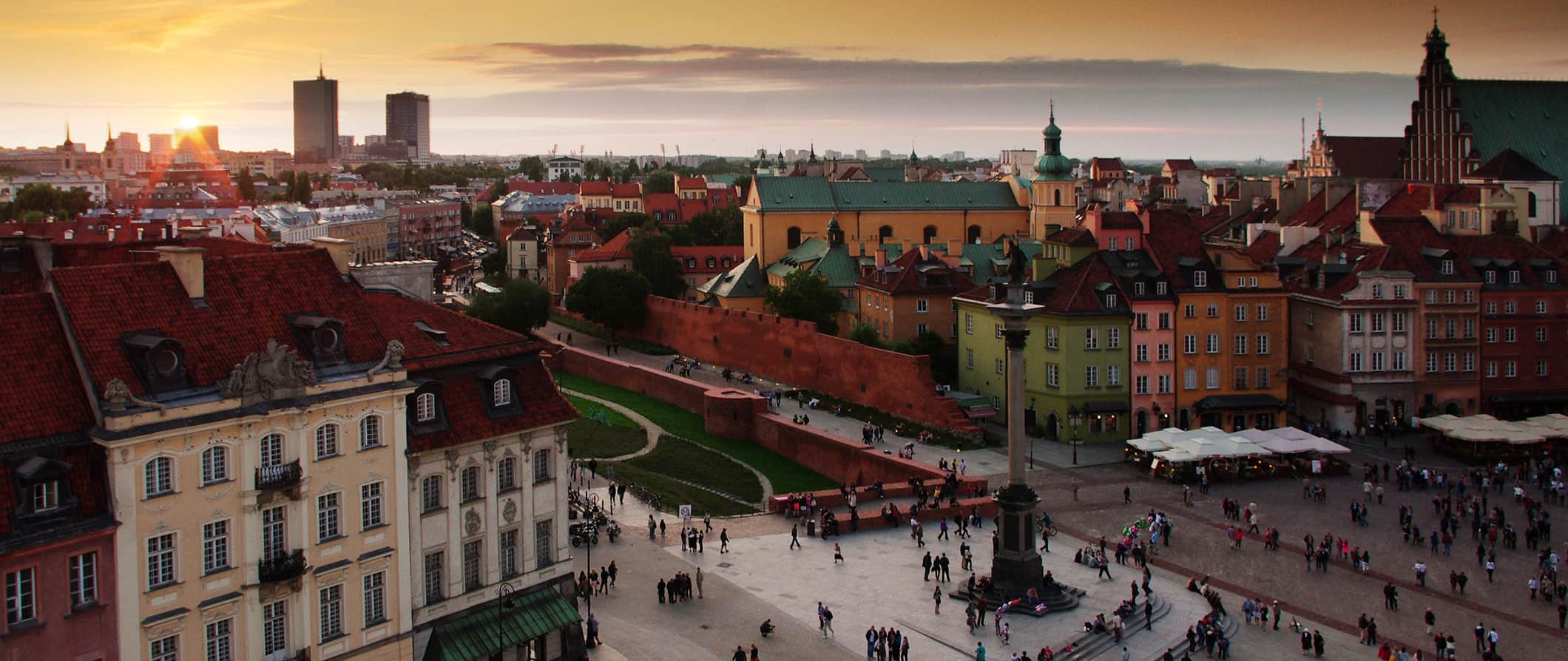
Warsaw is a bustling, revitalized city that has cast off the long shadow of communism. While a lot of grim, gray architecture remains, I found Warsaw to be a lively place with plenty to keep you busy. There’s a growing culinary scene, a wild nightlife, and lots of budget-friendly activities in (and around) the city.
Stroll down the boulevards, explore the wealth of Chopin’s music, admire traditional art pieces, and soak up this modern city — all for a fraction of what you’d pay in Western Europe!
While Krakow gets all the attention, I really enjoyed my time in Warsaw.
This travel guide to Warsaw will help you plan your trip, save money, and make the most of your visit!
Table of Contents
- Things to See and Do
- Typical Costs
- Suggested Budget
- Money-Saving Tips
- Where to Stay
- How to Get Around
- How to Stay Safe
- Best Places to Book Your Trip
- Related Blogs on Warsaw
Top 5 Things to See and Do in Warsaw

1. Wander the Old Town
The streets of the Old Town offer a nice contrast to the modern, bustling city that surrounds them. The area suffered heavy damage during World War II so many of the medieval buildings have been reconstructed, but it’s nevertheless a great place to start your trip. The Old Town is also a UNESCO World Heritage. Start in the colorful Old Town Market Square and go from there. You have tons of choices when it comes to museums and historical sites; the Royal Castle is located here, as is the Museum of Warsaw.
2. Explore the Chopin Museum
Frederic Chopin (1810-1849) is one of the most famous composers in history and his works can still be heard in concert halls across the globe. Chopin grew up in Warsaw before the November Uprising of 1830 and this museum provides an overview of his life and work. Admission is 23 PLN and is free on Wednesdays. This museum is temporarily closed for renovations until April 2023.
3. See the Royal Castle
Located at the entrance to the Old Town, the Royal Castle was the former residence of the Polish monarchs. Construction began in 1598 and lasted over 20 years. The castle was partially destroyed (and looted) by the Nazis in 1939 and then was almost completely destroyed in 1944 during World War II under direct orders from Hitler. It has since undergone extensive restoration and is now a museum and home to royal apartments, paintings, and an ornate interior design. Admission is 40 PLN and is free on Wednesdays.
4. Learn about the Warsaw Uprising
Opened in 2004, this museum is home to hundreds of artifacts from the Warsaw Uprising of 1944, when Polish citizens rebelled against German occupation. The uprising lasted 63 days and was the largest resistance during World War II. Some 15,000 members of the Polish resistance were killed, as well as 2,000-17,000 German troops. The museum has tons of clothing, letters, and interactive films. Admission is 25 PLN.
5. Wander around the Lazienki Park
Designed in the 17th century, this park is home to a small palace that sits on an artificial island. There are several pavilions, an amphitheater, and lots of places to sit, relax, and enjoy the day. It takes a long time to stroll around and is beautiful when the sun is shining. Bring a book, pack a picnic, and lounge the day away!
Other Things to See and Do in Warsaw
1. take a free walking tour.
One of the best things you can do when you arrive in a new city is to take a walking tour. It’s a great way to get the lay of the land and learn about the culture, people, and history of the destination. Orange Umbrella offers daily free tours that provide much more insight than any guidebook. Plus, you can connect with an expert local guide who can answer all your questions. Just be sure to tip your guide at the end!
2. Visit the Powazki Cemetery
Established in 1790, this cemetery is the final resting place of many important figures in Polish history, including the family of Frederic Chopin (he is buried in Paris, though his heart was brought back to Poland when he died in 1849), some of Chopin’s early teachers, Krzysztof Komeda (a famous jazz composer), and Nobel Prize winner Wladyslaw Reymontamong others. It’s the city’s oldest cemetery and the sculptures and architecture surrounding the tombs are both serene and eerie. It makes for a quiet place for a stroll.
3. Admire St. Anne’s Church
St. Anne’s Church (Kosciol Swietej Anny) is one of Warsaw’s oldest buildings. Construction started in 1454 and the building has survived several wars (the roof was destroyed a few times but the rest has remained intact). The Neo-Classical facade dates to the 1780s and the interior is lavishly designed in the High-Baroque style. There are also some stunning hand-painted frescoes inside as well. Admission is free but dress respectfully as it is a place of worship.
4. Tour the Gestapo Headquarters Museum
Officially known as the Mausoleum of Struggle and Martyrdom, this museum focuses on the conflict between the Polish resistance and the Gestapo. It has a profound exhibit that takes you through the old detention cells which were used to hold and torture prisoners. Prisoners were subjected to beatings, attacked with dogs, and even electrocuted. And if they didn’t cooperate, their family would be brought in and tortured before their very eyes. It’s a sobering place but one that shouldn’t be missed. Admission is free.
5. Visit the Museum of Modern Art
Established in 2005 and located only a short walk from the Central Railway Station, this small museum features contemporary art by Polish and international artists. I’m not much of a modern art fan, but there are some cool exhibitions here as well as some thought-provoking art. Admission is just 15 PLN and there are regular guided tours in English. Check the website for more details, including what temporary exhibits are available.
6. Check out the National Museum
This museum is one of the largest in the country. It boasts a substantial collection of ancient art (including 11,000 pieces of Greek, Egyptian, and Roman works), Medieval art, Polish paintings, sculptures, works from international artists, and a collection of Chinese art with over 5,000 pieces. They also have some paintings from Adolf Hitler’s private collection. Admission to both the permanent and temporary galleries is 20 PLN and guided tours are 300 PLN.
7. Relax in Multimedia Fountain Park
The Multimedia Fountain Park is comprised of two fountains that spray water in choreographed patterns to music. One fountain is a massive 2,200 square meters, and the other is 120 meters in length. Kids can play in a nearby water playground and watch the water shoot into the air to the music, which varies from Chopin to Lady Gaga. Each Friday and Saturday night in the summer, there is a light show to accompany the waterworks (in the winter it’s just a light show since the water is frozen). It’s a popular spot in the summer so expect crowds.
8. Tour the Copernicus Science Center
The Copernicus Science Center, named after the famous Polish astronomer and polymath, is one of the most modern science centers in Europe (it was Copernicus who first suggested the sun, not the Earth, was at the center of the universe). Located on the bank of the Vistula River, it has over 450 interactive exhibits, allowing visitors to take part in all sorts of experiments involving light, sounds, electricity, and more. It’s a great place to visit with kids. There’s a planetarium here as well. Admission is 37 PLN on weekdays and 39 PLN on weekends and holidays.
9. Visit the POLIN
The Museum of the History of Polish Jews is a new museum with both permanent and temporary exhibitions as well as performances and workshops about Jewish history and culture. The museum documents the history of the Jews in Poland from the Middle Ages to the present. Over 90% of the Jewish population in Poland was killed by the Nazis in World War II and the museum was built on the spot where the Warsaw Ghetto was located (be sure to take a walking tour of the area to learn more about the Warsaw Ghetto and the fate of Jews in Poland during the World War II). Admission is 30 PLN and entry is free on Thursday.
10. Visit the Palace of Culture and Science
This is the most iconic building in the city, dominating the city skyline and looming over the city. It’s the tallest building in Poland, home to 42 floors, theaters, a multi-screen cinema, museums, and much more. The building was a “gift” to Poland from the Soviet Union in 1955 and many people want to demolish it for that reason (Poland suffered heavily under Stalin). It offers a great view of the city from the 30th floor (there is an observation deck there which is free to access with the Warsaw Pass; it’s 25 PLN without it). Access to the building is free.
For more information on other cities in Poland, check out these guides:
- Krakow Travel Guide
Warsaw Travel Costs
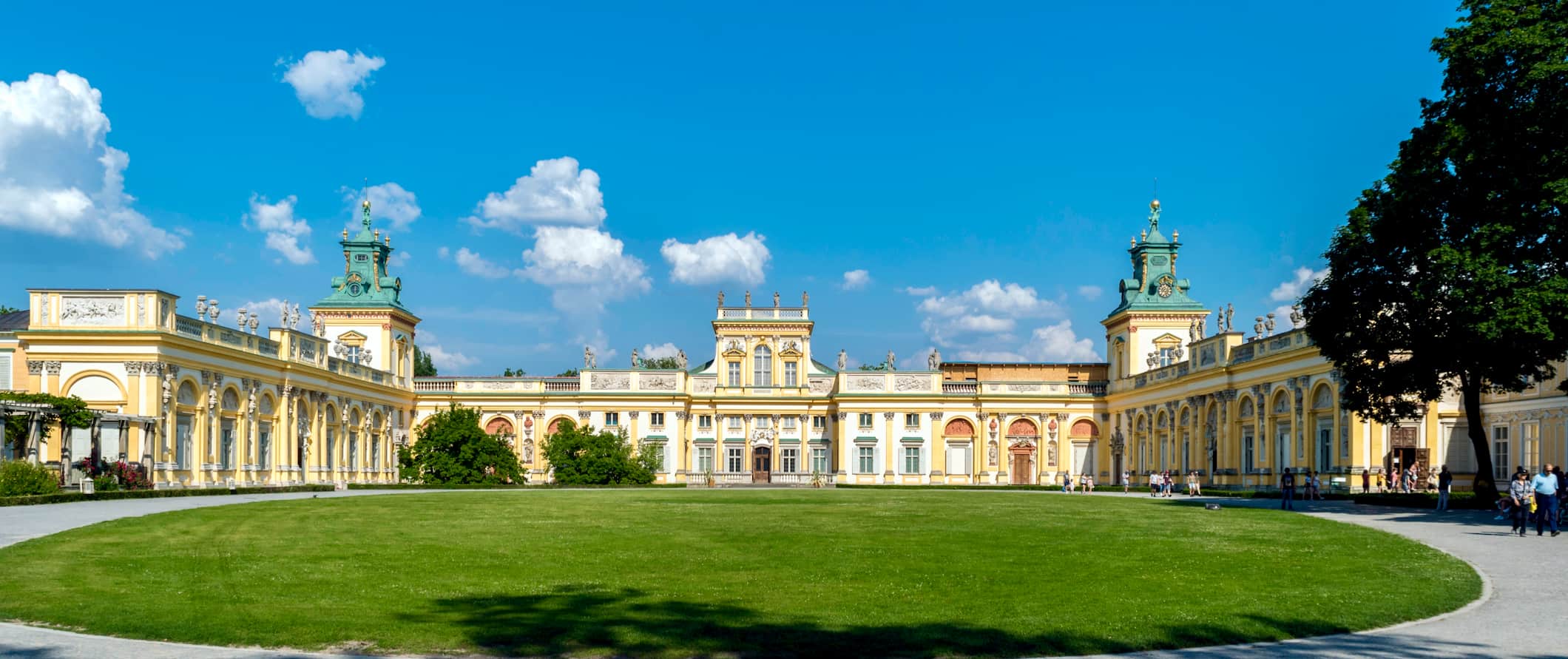
Hostel prices – A bed in a dorm with 8-10 beds starts around 90 PLN per night. Private rooms cost around 200 PLN. Free Wi-Fi is standard and most hostels also have kitchens if you want to cook your own food.
Campgrounds can be found outside the city (and there are plenty of campgrounds throughout the country as well). Expect to pay around 40 PLN per night for a basic tent plot without electricity.
Budget hotel prices – A double bed in a budget hotel with free Wi-Fi and a TV costs around 275 PLN per night. Many include a simple free breakfast as well.
Airbnb is available in Warsaw with private rooms starting at 90 PLN per night (though they usually average double that). Entire homes and apartments start at 180 PLN per night but, again, they often cost double (or more). Be sure to book early to secure the best deal.
Food – Polish meals are quite hearty, usually containing potatoes, meat (pork and chicken), and seasonal produce like beets or cabbage. Stews and soups (like borscht, a beet soup) are popular and can be found at most local restaurants. Pierogis are also a common staple and can be found everywhere for cheap. For some traditional Polish food, try beef tongue or pork knuckles. The country also has lots of traditional desserts too, like paczki (a Polish donut) and makowiec (poppy-seed cake).
Most cheap meals of traditional cuisine (served at local restaurants called bar mleczny or “milk bars”) cost around 35 PLN. For a three-course meal with a drink and table service, expect to pay 90 PLN. Fast food (think McDonald’s) costs 26 PLN for a combo meal.
A large pizza costs around 25-30 PLN while Chinese food costs around 15-20 PLN. Zapiekanki , a popular Polish street snack that’s like a pizza baguette, costs 5-6 PLN.
Beer costs around 14 PLN while a latte or cappuccino is around 13 PLN. Bottled water is 6 PLN.
If you buy groceries and cook your own meals, expect to pay around 165 PLN per week for basic staples like pasta, rice, seasonal vegetables, and some meat. The cheapest grocery store is Biedronka, which you can find almost everywhere. Outdoor markets are also a great and cheap place to get fresh produce and other local products.
Backpacking Warsaw Suggested Budgets
On a backpacker budget of 185 PLN per day, you can stay in a hostel dorm, cook all your meals, limit your drinking, take public transportation to get around, and do some cheap activities like free walking tours and visiting the free museums. If you plan on drinking, add 15-30 PLN to your budget per day.
On a mid-range budget of 375 PLN per day, you can stay in a private Airbnb or private hostel room, eat out more at cheap milk bars, enjoy a couple of drinks, take the occasional taxi to get around, and do more paid activities like visiting the Uprising Museum.
On a “luxury” budget of 725 PLN or more per day, you can stay in a hotel, eat out anywhere you want, drink more, take more taxis, and do whatever guided tours and activities you want. This is just the ground floor for luxury though. The sky is the limit!
You can use the chart below to get some idea of how much you need to budget daily, depending on your travel style. Keep in mind these are daily averages — some days you’ll spend more, some days you’ll spend less (you might spend less every day). We just want to give you a general idea of how to make your budget. Prices are in PLN.
Warsaw Travel Guide: Money-Saving Tips
Warsaw is an affordable city so there aren’t too many tips out there to help you save money. That said, here are a few ways you can save money while you visit Warsaw:
- Eat at Milk Bars – If you’re eating out, stick to the mleczny (milk bar). These are no-frills and cafeteria-style where you order from a counter, but it’s a great way to save money and take in the scene. Expect plates of hearty pierogis, homemade soups, plenty of meat, and a local beer for around 35 PLN.
- Get the Warsaw Pass – For 119 PLN, the single-day Warsaw Pass provides free public transportation and access to all of the city’s main attractions. It’s a great deal if you plan on seeing a lot. There is also a two-day pass for 159 PLN and a three-day pass for 189 PLN.
- Watch your drinking – Warsaw is known for its partying and pub crawls and long nights out. While booze is cheap here, nights out can add up quickly. Start off by grabbing your favorite drinks from a grocery store first whenever possible. You’ll save a ton compared to the bar.
- Take a free walking tour – Free tours from companies like Orange Umbrella are a great way to explore the city while learning about its history, culture, and architecture. Just be sure to tip!
- Use ridesharing apps – Ridesharing apps like BlaBlaCar are a great way to get around the country for cheap. You simply download the app, find someone looking for passengers, and go! Everyone is rated and verified and it’s usually more convenient (and cheaper) than other forms of transportation. For travel within the city, use Uber. It is cheaper than the local taxis if you’re leaving the city to explore.
- Stay with a local – While accommodation is not expensive in Warsaw, Couchsurfing is a great way to lower your accommodation costs. Not only will you save some money by getting a free place to stay but you’ll also be able to make a local friend and get insider knowledge about the city!
- Bike share – For 10 PLN, you can register with the bike-share company Vetrulio. After you sign up, bike use is free for 20 minutes, making it essentially free to bounce around the city during your visit. After 20 minutes, it’s just 1 PLN for the first hour and 3 PLN for the next hour.
- Bring a water bottle – The tap water in Warsaw is safe to drink so bring a reusable water bottle to save money and reduce your plastic use. LifeStraw is my go-to brand as their bottles have built in filters to ensure your water is always clean and safe.
Where to Stay in Warsaw
Warsaw has a handful of hostels in town and they’re all comfortable, safe, and sociable. Here are my suggested places to stay:
- Oki Doki Old Town
- Warsaw Centrum Hostel
- Safestay Warsaw
- Chillout Hostel
How to Get Around Warsaw
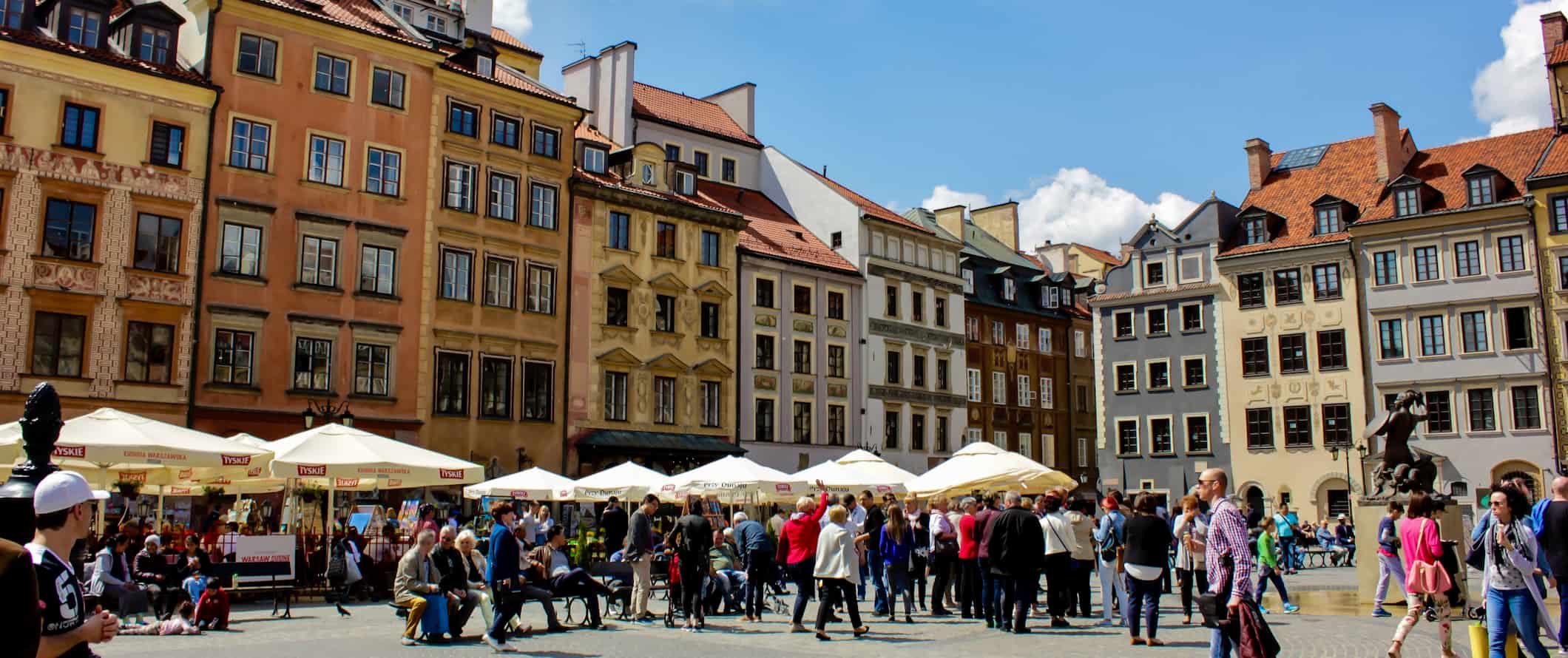
Public transportation – Buses and trams are the most common way to get around and run from 5am-11pm. They cost 3-5 PLN depending on how far you go. These tickets last 75 minutes. 90-minute tickets are available for around 7 PLN. For a day pass, prices start at 15 PLN per person while a 3-day pass starts at 36 PLN.
From the Warsaw Chopin Airport to the city center the quickest way is by train and the journey takes 20-minutes. Fares start at 3.40 PLN for a 20-minute ticket while a single ticket costs 4.40 PLN. The public bus is also available for 4.40 PLN or you can take an airport shuttle for 67 PLN per person.
The subway in Warsaw is fast and reliable. Prices for the subway are the same as the bus/tram prices above. Validated tickets let you transfer between each mode of transportation (as long as your ticket time hasn’t expired).
Taxi – Taxis are common and safe, with prices starting at 8 PLN and going up 3 PLN per kilometer. Just make sure you use official taxis as there are often illegal taxis that try to take fares (and who overcharge). Official taxis have the company logo and phone number on the car. They also use a meter.
To ensure you get a reputable company, have your hotel/hostel call a taxi before you go just to be safe.
Ridesharing – Uber is available in Warsaw and is cheaper than using taxis. Stick to Uber if you need a private ride.
Bicycle – For 10 PLN, you can register for Vetrulio, a bike-rental company in Warsaw. After you sign up, bike use is free for 20 minutes, making it essentially free to bounce around the city during your visit. After 20 minutes (and up to an hour) it’s just 1 PLN and then 3 PLN for the next hour.
There are also scooter share programs that cost 2 PLN to start and then 0.55 PLN per minute after that.
Car rental – You don’t need a car to get around Warsaw, however, if you plan on exploring the region you can find rentals for around 100 PLN per day for a multi-day rental. Drivers must have had their license for at least one year and an International Driving Permit (IDP) is required for citizens of certain countries.
When to Go to Warsaw
The best (and most popular) time to visit Warsaw is during the summer, from June to August. Temperatures are hot and rain is infrequent. Expect daily highs around 25°C (77°F). There are crowds, but they aren’t nearly as oppressive as what you find in Western Europe. Just be sure to book ahead so you don’t miss out on the cheapest accommodation.
The shoulder seasons (April-May and September-October) are great times to visit as well. You’ll beat the crowds and have much milder temperatures, with temperatures ranging from 14-19°C (57-67°F) in the spring and 3-12°C (39-54°F) in the fall. You’ll get more rain but you’ll get the stunning autumn colors in the fall and lots of blooming flowers in the spring which make for a stunning backdrop to your trip.
Winter in Warsaw is cold, with temperatures dropping below 0°C (32°F) during the day and down to -5°C (23°F) overnight. Snow is common, which can affect conditions if you’re traveling by car. In short, I wouldn’t recommend a winter visit unless you plan on leaving the city to go skiing or take part in other winter activities.
How to Stay Safe in Warsaw
Poland is consistently ranked one of the safest countries in the world (it ranks higher than Italy, Spain, and Australia in terms of safety).
Of course, you should still take some precautions while you’re here. Keep your valuables secure and out of sight when riding public transportation and while you’re in popular tourist areas.
Taxi scams in Warsaw are rare, but always make sure your driver is using the meter. If they aren’t, ask them to stop and find a taxi that will.
ATM skimming can occur here so always make sure you use verified ATMs. If you can, go into the bank to withdraw your money (as opposed to using outdoor ATMs that are easier to tamper with).
If you rent a car, don’t leave any valuables in it overnight. Break-ins are rare but it’s always better to be safe than sorry.
Solo female travelers should generally feel safe here, however, the standard precautions apply (never leave your drink unattended at the bar, never walk home alone at night intoxicated, etc.).
If you’re worried about getting ripped off, you can read about common travel scams to avoid here .
If you experience an emergency, dial 112.
The most important piece of advice I can offer is to purchase good travel insurance. Travel insurance will protect you against illness, injury, theft, and cancellations. It’s comprehensive protection in case anything goes wrong. I never go on a trip without it as I’ve had to use it many times in the past. You can use the widget below to find the policy right for you:
Warsaw Travel Guide: The Best Booking Resources
These are my favorite companies to use when I travel. They consistently have the best deals, offer world-class customer service and great value, and overall, are better than their competitors. They are the companies I use the most and are always the starting point in my search for travel deals.
- Skyscanner – Skyscanner is my favorite flight search engine. They search small websites and budget airlines that larger search sites tend to miss. They are hands down the number one place to start.
- Hostelworld – This is the best hostel accommodation site out there with the largest inventory, best search interface, and widest availability.
- Booking.com – The best all around booking site that constantly provides the cheapest and lowest rates. They have the widest selection of budget accommodation. In all my tests, they’ve always had the cheapest rates out of all the booking websites.
- HostelPass – This new card gives you up to 20% off hostels throughout Europe. It’s a great way to save money. They’re constantly adding new hostels too. I’ve always wanted something like this and glad it finallt exists.
- Get Your Guide – Get Your Guide is a huge online marketplace for tours and excursions. They have tons of tour options available in cities all around the world, including everything from cooking classes, walking tours, street art lessons, and more!
- The Man in Seat 61 – This website is the ultimate guide to train travel anywhere in the world. They have the most comprehensive information on routes, times, prices, and train conditions. If you are planning a long train journey or some epic train trip, consult this site.
- Rome2Rio – This website allows you to see how to get from point A to point B the best and cheapest way possible. It will give you all the bus, train, plane, or boat routes that can get you there as well as how much they cost.
- FlixBus – Flixbus has routes between 20 European countries with prices starting as low 5 EUR! Their buses include WiFi, electrical outlets, a free checked bag.
- SafetyWing – Safety Wing offers convenient and affordable plans tailored to digital nomads and long-term travelers. They have cheap monthly plans, great customer service, and an easy-to-use claims process that makes it perfect for those on the road.
- LifeStraw – My go-to company for reusable water bottles with built-in filters so you can ensure your drinking water is always clean and safe.
- Unbound Merino – They make lightweight, durable, easy-to-clean travel clothing.
- Top Travel Credit Cards – Points are the best way to cut down travel expenses. Here’s my favorite point earning credit cards so you can get free travel!
- BlaBlaCar – BlaBlaCar is a ridesharing website that lets you share rides with vetted local drivers by pitching in for gas. You simply request a seat, they approve, and off you go! It’s a cheaper and more interesting way to travel than by bus or train!
Warsaw Travel Guide: Related Articles
Want more info? Check out all the articles I’ve written on backpacking/traveling Europe and continue planning your trip:

The 6 Best Hotels in Florence

The 7 Best Hotels in Madrid

The 6 Best Hotels in Vienna

The Best Walking Tours in Barcelona

How to Be a Digital Nomad in Europe
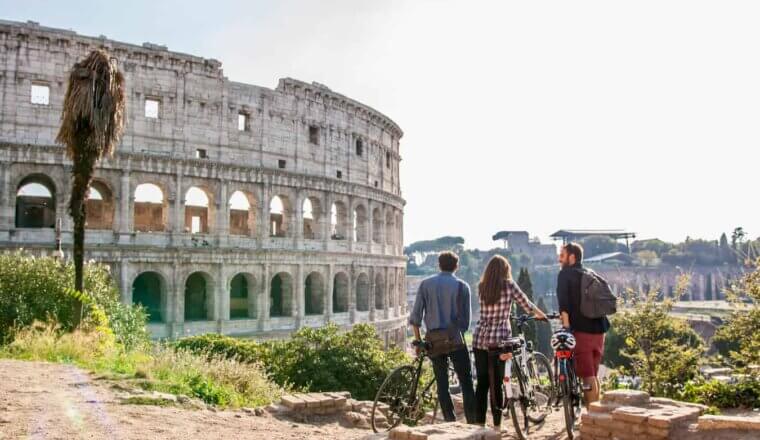
The Best eSIM for Traveling Europe
Get my best stuff sent straight to you, pin it on pinterest.
- Where To Stay
- Transportation
- Booking Resources
- Related Blogs
Warsaw Travel Guide
Book your individual trip , stress-free with local travel experts
- roughguides.com
- Travel guide
- Local Experts
- Travel Advice
- Accommodation
Packed with a bizarre mix of gleaming office buildings and grey, Communist-era apartment blocks, WARSAW (Warszawa) often bewilders backpackers. Yet if any city rewards exploration, it is the Polish capital. North of the lively centre are stunning Baroque palaces and the meticulously reconstructed Old Town; to the south are two of Central Europe’s finest urban parks; and in the east lie reminders of the rich Jewish heritage extinguished by the Nazis.
Chopin Museum
Drinking and nightlife, entertainment, jewish ghetto and cemetery, łazienki park, museum of the history of the polish jews, national museum, old and new town squares, the old town, palace of culture and science, royal castle, the royal way, warsaw uprising museum, wilanów palace.
Warsaw became the capital in 1596 and initially flourished as one of Europe’s most prosperous cities. In 1815, however, the Russians conquered the city and, despite a series of rebellions, it was not until the outbreak of World War I that this control collapsed. Warsaw again became the capital of an independent Poland in 1918, but the German invasion of 1939 meant this was to be short-lived. Infuriated by the 1944 Warsaw Uprising, Hitler ordered the total destruction of the city, leaving 850,000 Varsovians dead and 85 percent of Warsaw in ruins. Rebuilding is an ongoing process.
The main sights are on the western bank of the Wisła (Vistula) River where you’ll find the central business and shopping district, Śródmieście , grouped around Centralna station and the nearby Palace of Culture. The more picturesque Old Town (Stare Miasto) is just to the north.
There are plenty of good private hostels, mainly in Środmieście, most offering free internet, breakfast and free/cheap laundry services. Hotels tend to be pricier than elsewhere in Poland.
Top image © Triff/Shutterstock
Tailor-made travel itineraries for Poland, created by local experts

11 days / from 1598 USD
Explore the Liberation Route in Poland
Poland was the first country that Hitler invaded and with it starting World War II. Discover the Polish sites of World War II with this itinerary, from the Northern city of Gdansk where the first battle took place to the concentration camps of Auschwitz close to Krakow.
Tailor-made trips for Poland
Warsaw’s most lavish tribute to its favourite son is the achingly modern Chopin Museum , east of Krakowskie Przedmieście at ul. Okolnik 1 ( w www.chopin.museum ). With interactive handsets to guide visitors through exhibits on the musician’s life, it’s a must for Chopin enthusiasts, but only 100 people are allowed into the museum at a time so tickets must be reserved in advance.
The bar scene in Warsaw has really taken off over the last decade, and the city now genuinely provides a great night out that rivals Prague and needn’t blow your budget. Praga, across the river, is a formerly dangerous neighbourhood that now boasts a lively, bohemian bar scene – an interesting alternative to the more glitzy hangouts you’ll find downtown. Check out the English-language Warsaw Insider (available in most hotels; w www.warsawinsider.pl ) for more information on nightlife and a monthly list of events.
The tipple most associated with Poland, vodka is actually in danger of being eclipsed in popularity by beer among young Poles, so it’s well worth seeking out the varieties you can’t find abroad before they disappear from Polish shops and bars completely. Traditionally served chilled and neat – although increasingly mixed with fruit juice –vodka can be clear or flavoured with anything from bison grass to mountain herbs to juniper berries or honey. There’s even been a revival of kosher vodkas, although whether their rabbinic stamps of approval are kosher themselves or just a marketing gimmick isn’t always obvious.
The city’s festivals enhance the celebratory vibe, especially the Warsaw “Summer Jazz Days” Festival, a series of outdoor concerts held throughout July and August.
Cinema Films are usually shown in their original language with Polish subtitles. Tickets 17–30zł.
Music Live bands are apt to appear in bars without any warning; W Oparach Absurdu and the Irish Pub are your best bets.
West of the New and Old towns is the former ghetto area, in which an estimated 380,000 Jews – one-third of Warsaw’s total population – were crammed from 1939 onwards. By the war’s end, the ghetto had been razed to the ground, with only around three hundred Jews and just one synagogue, the Nożyk Synagogue at ul. Twarda 6, left. You can still get an idea of what Jewish Warsaw looked like on the miraculously untouched ul. Próźna.
Take tram #22 from Centralna Station to ul. Okopowa 49/51 to reach the vast, overgrown Jewish Cemetery (Cmentarz Zydowski; Mon–Thurs 10am–5pm, Fri 9am–1pm, Sun 11am–4pm, closed Sat; 8zł), one of the few still in use in Poland.
About 2km south of the commercial district, on the eastern side of al. Ujazdowskie, is the much-loved Łazienki Park (bus #116, # 180 or #195 from Nowy Świat). Once a hunting ground, the area was bought in the 1760s by King Stanisław August, who turned it into a park and built the Neoclassical Łazienki Palace (Tues–Sun 9am–6pm; 17zł) across the lake. But the park itself is the real attraction, with its oak-lined paths alive with peacocks and red squirrels.
Located in the midst of the former ghetto area at Anielewicza 6, the Museum of the History of the Polish Jews (Wed–Mon 10am–6pm; 12zł; www.jewishmuseum.org.uk ) is worth visiting for the building alone – a futuristic glassy slab filled with organic, curvy surfaces. The display pays tribute to the rich Jewish civilization that flourished on the soil of Poland, until all but snuffed out by the Holocaust. The painted wooden ceiling of the 17th-century Gwozdziec synagogue is one obvious highlight. Opposite the museum is the Ghetto Heroes Monument , commemorating the doomed Warsaw Ghetto Uprising of April 1943, when lightly armed ghetto inhabitants took on the might of the German SS.
At the southern end of Nowy Świat and east along al. Jerozolimskie is the National Museum (Tues–Fri 10am–4pm, Sat & Sun 10am–6pm; 15zł, free Sat; w www.mnw.art.pl ), housing an extensive collection of medieval, Impressionist and modern art, as well as Christian frescoes from eighth- to thirteenth-century Sudan. Particularly striking is the fourteenth-century sculpture of the Pietà, which is more reminiscent of the Modernist distortions in the room nearby than Michaelangelo’s famed depiction of the same scene.
On ul. Świętojańska, north of the castle, stands St John’s Cathedral, the oldest church in Warsaw. A few yards away, the Old Town Square (Rynek Starego Miasta) is one of the most remarkable bits of postwar reconstruction anywhere in Europe. Flattened during the Uprising, its three-storey merchants’ houses have been rebuilt in near-flawless imitation of the Baroque originals. It’s also home to the Warsaw Historical Museum (closed at the time of writing, due to reopen by early 2014; w www.mhw.pl ), where an English-language film shows poignant footage of the vibrant, multicultural 1930s city and the ruins left in 1945. Crossing the ramparts heading north brings you to the New Town Square (Rynek Nowego Miasta) at the heart of the so-called New Town (Nowe Miasto), the town’s commercial hub in the fifteenth century but now a quiet spot to escape the bustling Old Town.
The title Old Town (Stare Miasto) is, in some respects, a misnomer for the historic nucleus of Warsaw. After World War II the beautifully arranged Baroque streets were destroyed, only to be painstakingly reconstructed so accurately that the area has been named a UNESCO World Heritage Site. The Old Town comes alive in the summer, as tourists, street performers and festivals take over the cobblestone streets. Plac Zamkowy (Castle Square), on the south side of the Old Town, is the obvious place to start a tour.
West of the National Museum lies the commercial heart of the city, the Centrum crossroads from which ul. Marszałkowska, the main north–south road, cuts across al. Jerozolimskie running east–west. Towering over everything is the Palace of Culture and Science , a post-World War II gift from Stalin whose vast interior now contains theatres, a swimming pool and a nightclub. The platform on the thirtieth floor (daily 9am–8pm, Fri & Sat till 11pm; 20zł; pkin.pl ) offers impressive views of the city.
On the east side of Castle Square is the thirteenth-century Royal Castle , now home to the Castle Museum ( w www.zamek-krolewski.pl ). Though the structure is a replica, many of its furnishings are originals. After passing the lavish Royal Apartments of King Stanisław August, you visit the Lanckoranski Gallery, which contains a fascinating range of aristocratic portraits including two paintings – Girl in a Picture Frame and Scholar at His Desk – by Rembrandt.
Lined with historic buildings, the road that runs south from pl. Zamkowy along the streets of Krakowskie Przedmieście and Nowy Świat to the palace of Wilanów, on the city’s outskirts, is the old Royal Way . One highlight is the Church of the Nuns of the Visitation , one of the few buildings in central Warsaw to have come through the war unscathed. Much of the rest of Krakowskie Przedmieście is occupied by university buildings, including several fine Baroque palaces and the Holy Cross Church . Sealed inside a column to the left of the nave is an urn containing Chopin’s heart.
For flashy boutiques and department stores, first explore the gleaming Złote Terasy shopping centre (replete with such Western titles as H&M and Zara), opposite the Palace of Culture and Science on ul. Emilii Plater, before passing through to the mainly pedestrianized streets of ul. Chimielna and ul. Nowy Świat.
The Hala Mirowska market on al. Jana Pawła II is the place to go for fresh fruits and vegetables (daily); antique hunters should head for the Kolo Antique Market on ul. Obozowa (trams #13 & #23 from the Old Town; Sun 7am–2pm), where you’ll find everything from war medals to old Christian icons.
About 1.5km west of Centrum is the Warsaw Uprising Museum at ul. Grzybowska 79 (Mon, Wed & Fri 8am–6pm, Thurs 8am–8pm, Sat & Sun 10am–6pm; 14zł, free Mon; w www.1944.pl ; tram #22 from Centralna Station). Set in a century-old brick power station, the museum retells the grim story of how the Varsovians fought and were eventually crushed by the Nazis in 1944 – a struggle that led to the deaths of nearly two hundred thousand Poles and the destruction of most of the city. Special attention is given to the equivocal role played by Soviet troops, who watched passively from the other side of the Wisła as the Nazis defeated the Polish insurgents. Only after the city was a charred ruin did they move across to “liberate” its few remaining inhabitants.
The grandest of Warsaw’s palaces, Wilanów (May–Sept Mon, Wed & Sat 9.30am–6.30pm, Tues, Thurs & Fri 9.30am–4.30pm, Sun 10.30am–6.30pm; Oct–April Mon & Wed–Sat 9.30am–4.30pm, Sun 10.30am–4.30pm; 20zł, free Sun Oct–April; w www.wilanow-palac.pl ), makes an easy excursion from the centre: take bus #180 south from Krakowskie Przedmieście or Nowy Świat to its terminus. Converted in the seventeenth century from a small manor house into the “Polish Versailles”, the palace displays a vast range of decorative styles, a mixture mirrored in the delightful palace gardens (daily 9am–sunset; 5zł, free Thurs).
Discover more places in Poland

- Travel Guide Morocco
- Travel Guide Namibia
- Travel Guide South Africa
- Travel Guide China
- Travel Guide India
- Travel Guide Indonesia
- Travel Guide Japan
- Travel Guide Laos
- Travel Guide Malaysia
- Travel Guide Myanmar (Burma)
- Travel Guide Nepal
- Travel Guide Philippines
- Travel Guide Singapore
- Travel Guide South Korea
- Travel Guide Sri Lanka
- Travel Guide Taiwan
- Travel Guide Thailand
- Travel Guide Australia
- Travel Guide Fiji
- Travel Guide New Zealand
- Travel Guide Belize
- Costa Rica Travel Guide
- Travel Guide Cuba
- Travel Guide Guatemala
- Travel Guide Honduras
- Travel Guide Jamaica
- Travel Guide Nicaragua
- Travel Guide Panama
- Travel Guide Puerto Rico
- Travel Guide Trinidad and Tobago
- Travel Guide Albania
- Travel Guide Austria
- Travel Guide Belgium
- Travel Guide Bosnia-Herzegovina
- Travel Guide Bulgaria
- Travel Guide Cyprus
- Travel Guide Czechia (Czech Republic)
- Travel Guide Denmark
- Travel Guide England
- Travel Guide Estonia
- Travel Guide Finland
- Travel Guide France
- Travel Guide Germany
- Travel Guide Greece
- Travel Guide Hungary
- Iceland Travel Guide
The Rough Guides to Poland and related travel guides
In-depth, easy-to-use travel guides filled with expert advice.

Find even more inspiration here

Planning your own trip? Prepare for your trip
Use Rough Guides' trusted partners for great rates
written by Rough Guides Editors
updated 26.04.2021
Ready to travel and discover Poland?
Get support from our local experts for stress-free planning & worry-free travels.
- Where to stay
- Travel advice

IMAGES
VIDEO
COMMENTS
Welcome to the Official Tourist Website of Warsaw. Each city has a place that is its showcase and a must-see on any trip. In Warsaw, it's the Old Town, entered on the UNESCO World Heritage List - it's where the city's heart has been beating for centuries.However, when you cross the Vistula River and look at the Old Town from a distance, you are struck by how unusual the panorama of the ...
FEEL INVITED TO VISIT US ON PLAC ZAMKOWY 1/13. Warsaw : all you need to know about Warsaw: getting to Warsaw · public communication · interesting places · sightseeing routes · Warsaw boroughs.
Plac Zamkowy 1/13, Warsaw 00-267 Poland. Tourist Info Center across from Centralna. The Tourist Information Center is located across from Centralna Train Station in the back of the Palace of Culture and Science Building.. Hard to find, look for "information" signs outside. Although English is not widely spoken in Poland, the staff was able to ...
For tourist information in Warsaw please contact the following office: Warsaw Tourism Information (Warszawskie Centrum Informacji Turystycznej) Pl. Zamkowy 1/13 (Castle Square) Phone: (022) 9431 or 628 8768. Hours: May thru September: Monday thru Friday 8 a.m. until 8p.m. Saturdays 9 a.m. until 5 p.m. and Sundays 9 a.m. until 3 p.m.
Tourism [edit] The Warsaw Tourist Office (Stołeczne Biuro Turystyki) is the official tourist information agency in Warsaw and can provide visitors with information regarding attractions, transport and events. They also have free maps and brochures for travelers.
This helpful office - handily located on Plac Zamkowy just opposite the Royal Castle - is a great place to get maps and guidebooks, as well as advice and recommendations from the staff, who can help you with everything from navigating pubic transport and renting a car, to making ticket reservations ... Warsaw Tourist Information Center Plac ...
The modern office building designed by a famous architects Foster and Partners beautifully blends in with the neighboring Tomb of the Unknown Soldier, which was part of the arcade of the Saxon Palace before WWII. ... Popularly known as tourist attractions, Warsaw's aforementioned gems can be discovered in several different ways. On foot, by ...
Get to the heart of Warsaw with one of our in-depth, award-winning guidebooks, covering maps, itineraries, and expert guidance. Explore Warsaw holidays and discover the best time and places to visit.
Next, deep dive into the city's darkest days at the exceptional Warsaw Rising Museum. Housed in a former tram power station, this museum forensically covers the heroic but doomed uprising against the German occupation in 1944 via an immersive range of interactive displays, including archival films and personal accounts.
Up-to-date tourist information and lots of facts about the most beautiful sights and everything else you need to know for your stay in Warsaw (Poland). WarsawGuide.com. ... 24 Hour Post Office in Warsaw ul. Świętokrzyska 31/33 Letters up to 50 grams: 2,40 PLN to Europe / Worldwide 1,30 PLN within Poland. 24 Hour Supermarkets in Warsaw Tesco
The Warsaw Tourism Organization brings together all entities operating in the broadly understood tourism industry in Warsaw (tourism organizers, event agencies, hotels, conference venues, institutions of culture, restaurants, etc.). One of the main activities of our Association is supporting the promotion of Warsaw as a tourist and MICE ...
Warsaw tourism. Warsaw, Poland's capital since the late 16th century, is by far the biggest and fastest developing Polish city. Its population is estimated at 1.71 million and, as a powerful economic and cultural centre, the city attracts great numbers of people from all over the country in the pursuit of education or better job opportunities ...
Mazowieckie Province. Filled with attractions for the active and history-loving tourist, with traces of Chopin's life and work, this is the largest province and home to Poland's capital city - Warsaw, whose Old Town is a UNESCO-listed heritage site. To the south of the capital lies a health resort, and to the north-west Kampinos National ...
Buy a Warsaw Pass If you plan on visiting multiple sights and using public transportation, consider buying an upgraded Warsaw Pass card.These passes, which cost 105 to 219 Polish zloty (or between ...
Warsaw Travel Guide. Last Updated: September 1, 2023. Warsaw is a bustling, revitalized city that has cast off the long shadow of communism. While a lot of grim, gray architecture remains, I found Warsaw to be a lively place with plenty to keep you busy. There's a growing culinary scene, a wild nightlife, and lots of budget-friendly ...
Chopin Museum. Warsaw's most lavish tribute to its favourite son is the achingly modern Chopin Museum, east of Krakowskie Przedmieście at ul.Okolnik 1 (w www.chopin.museum).With interactive handsets to guide visitors through exhibits on the musician's life, it's a must for Chopin enthusiasts, but only 100 people are allowed into the museum at a time so tickets must be reserved in advance.